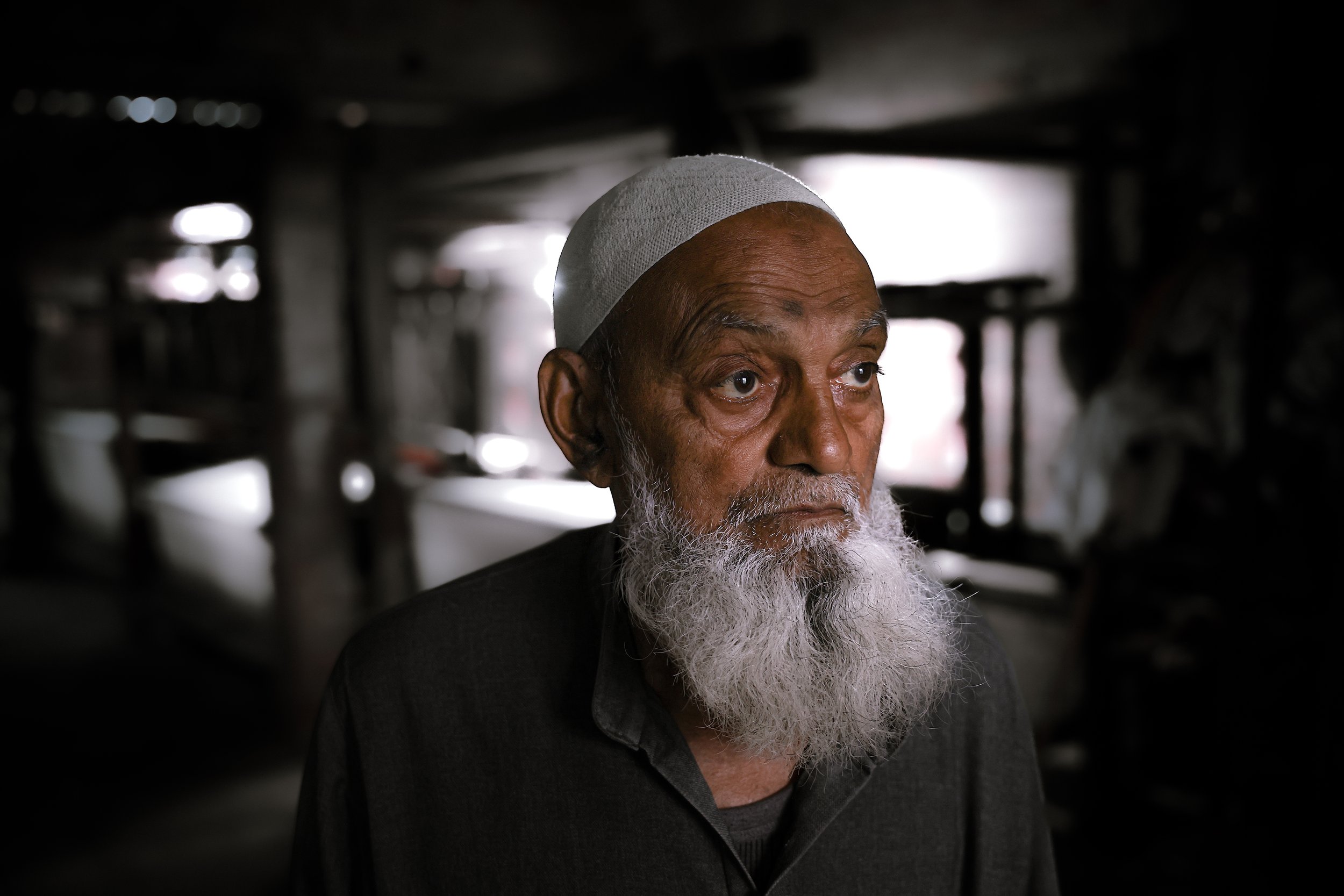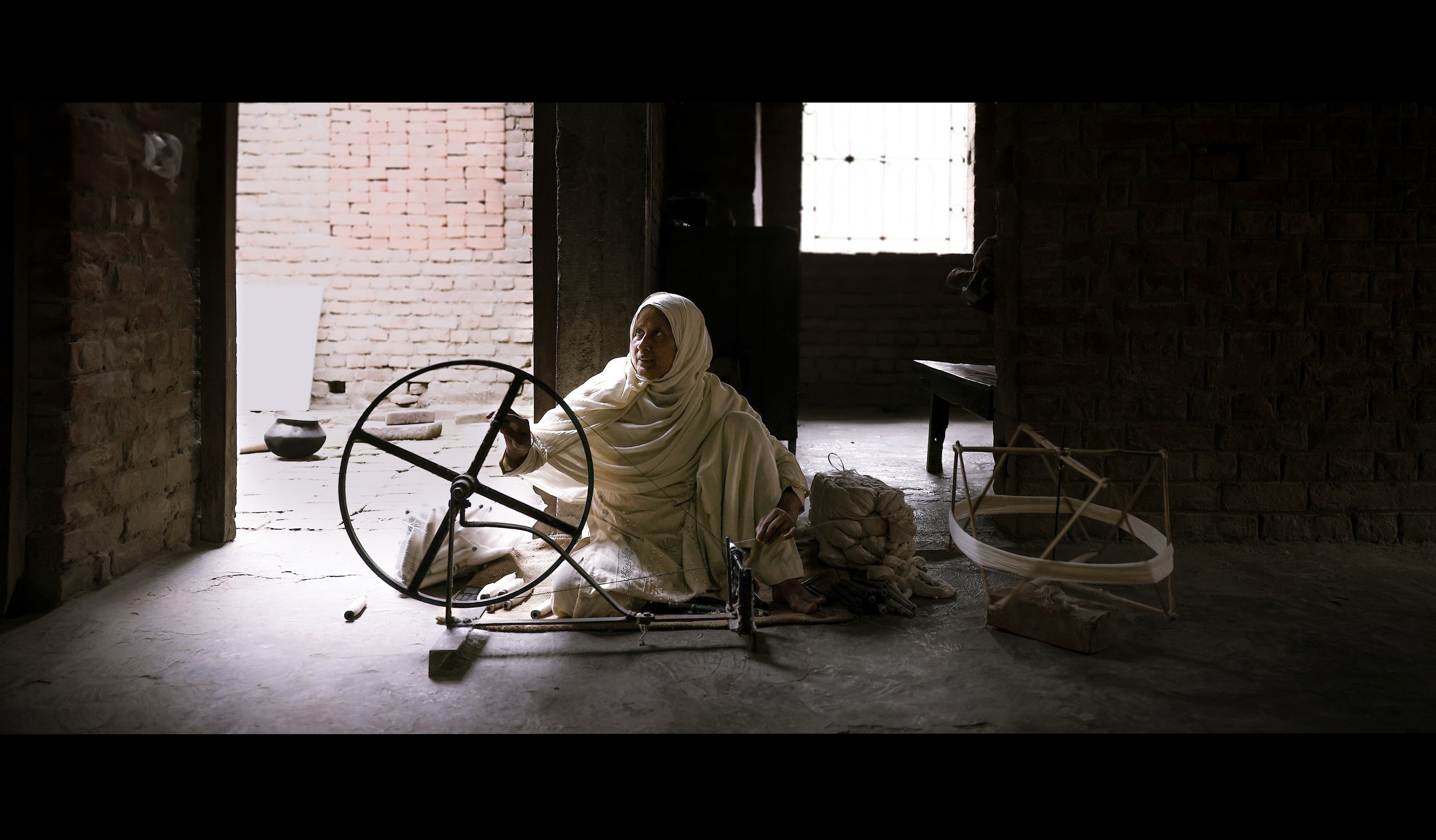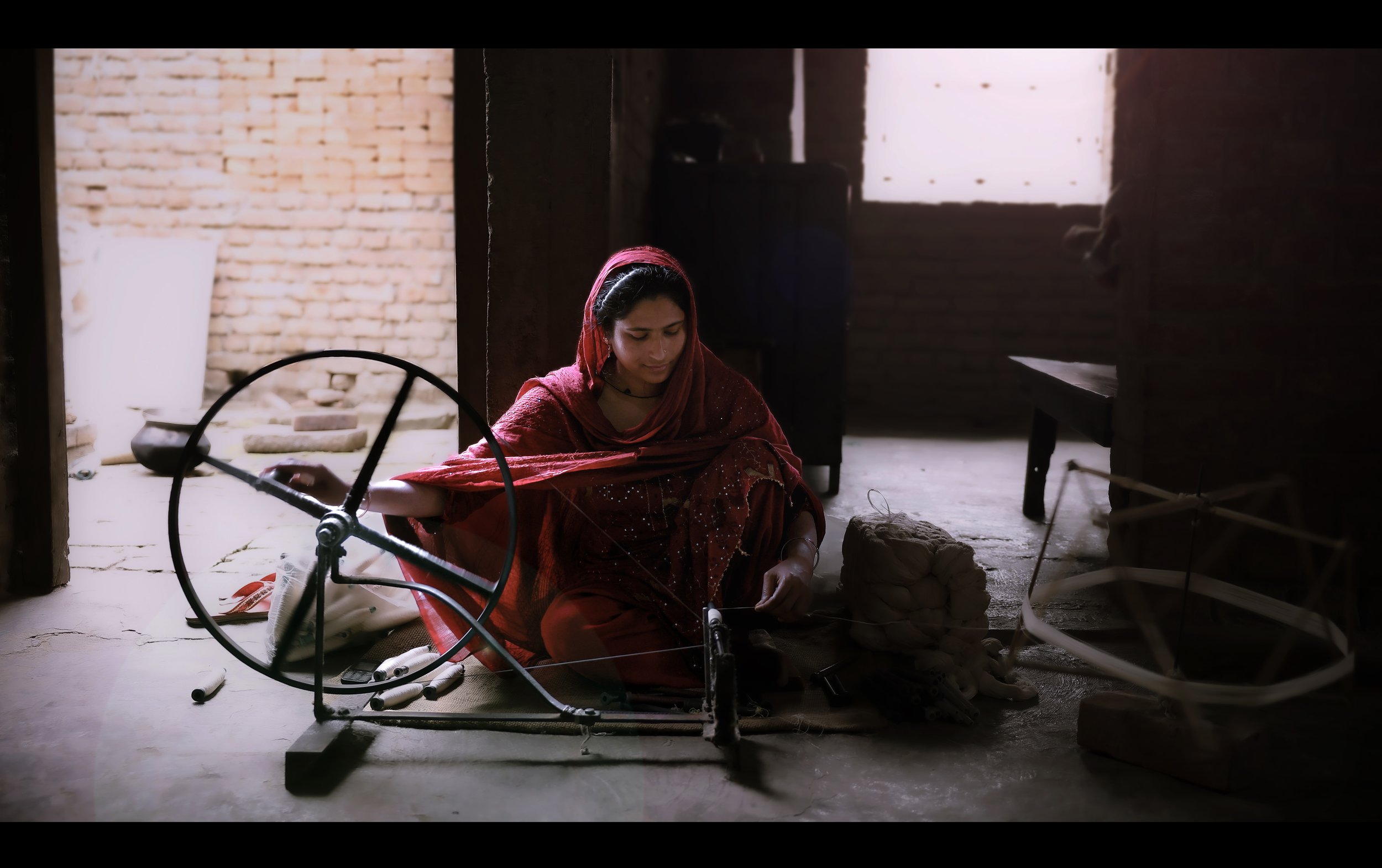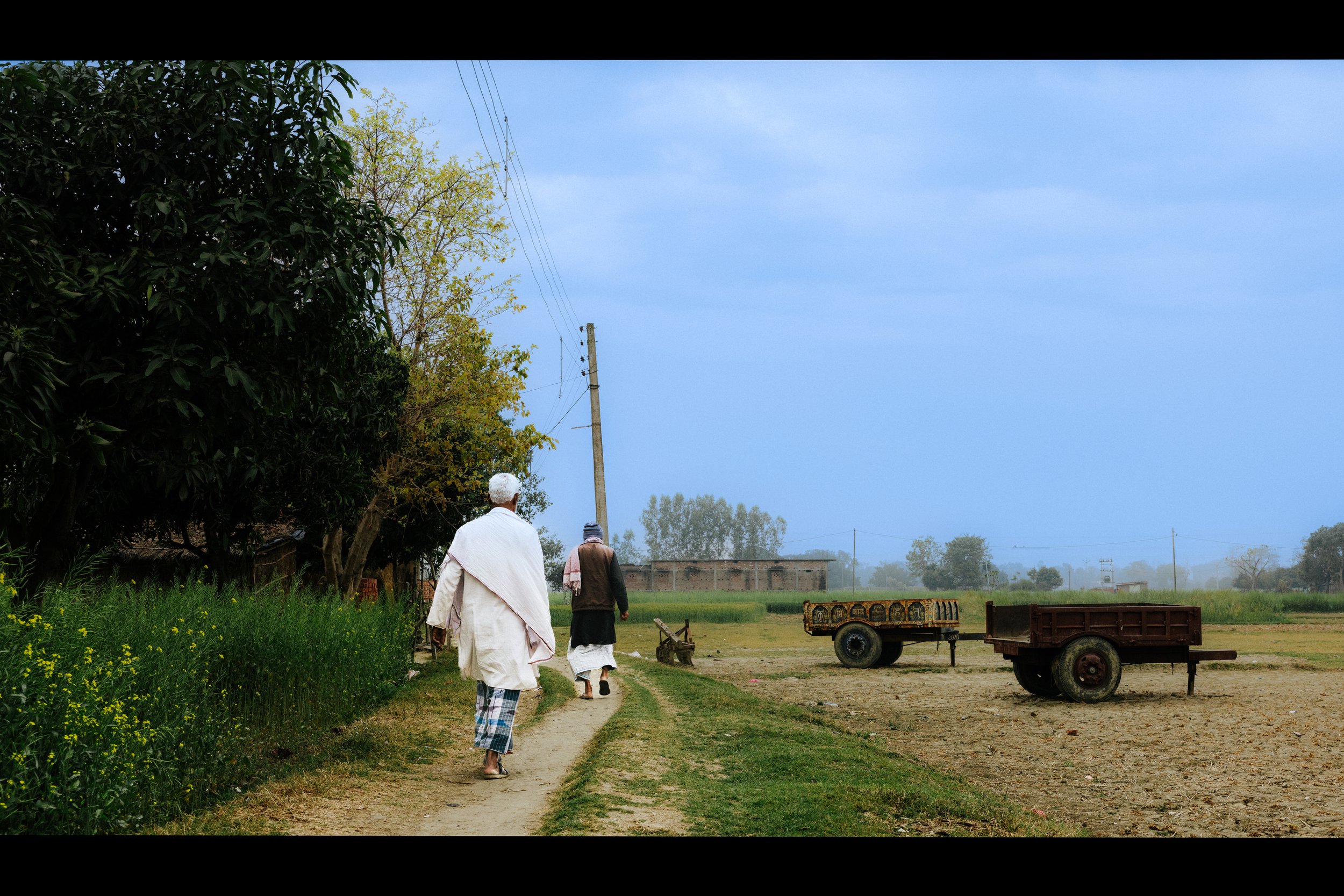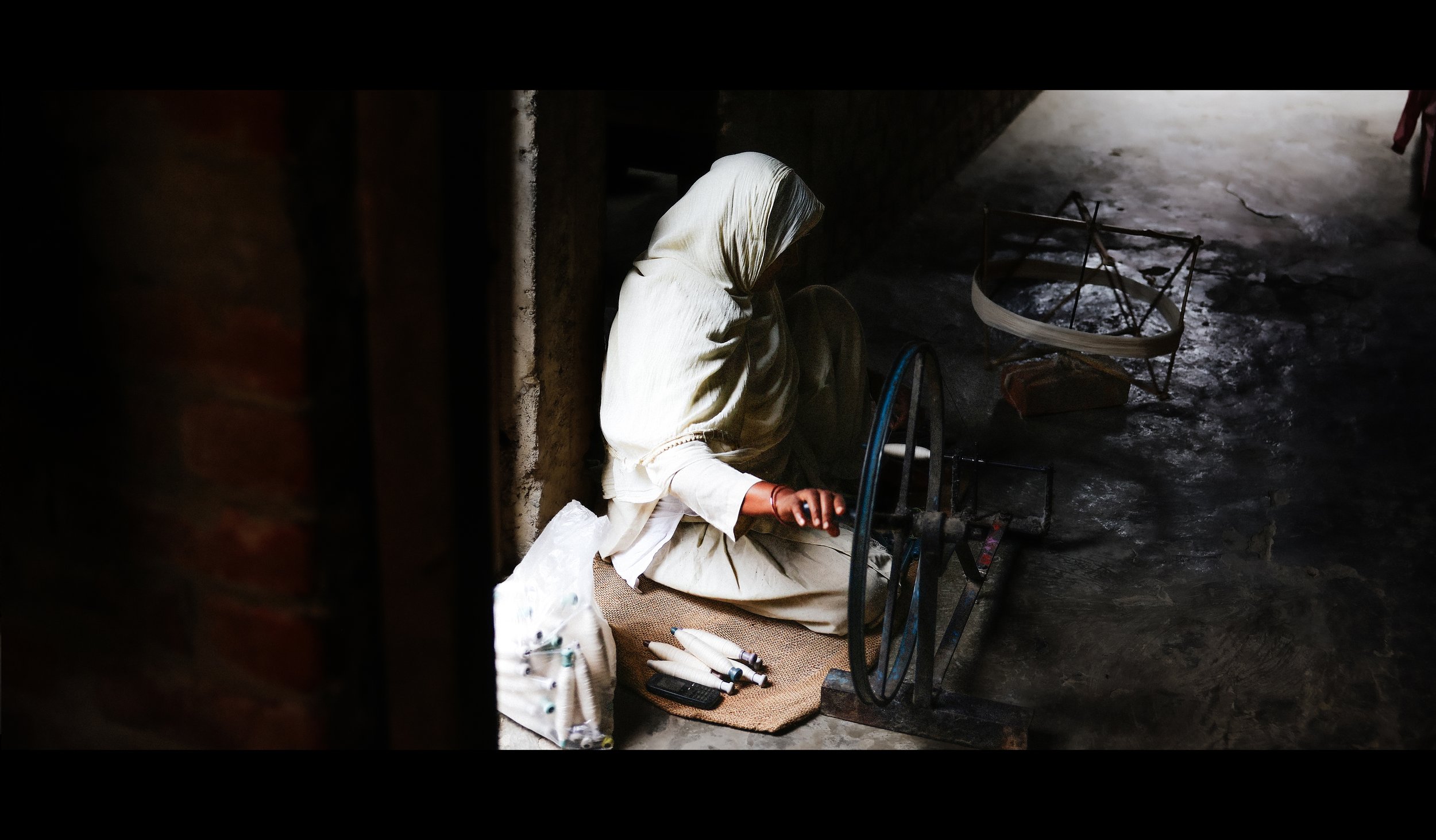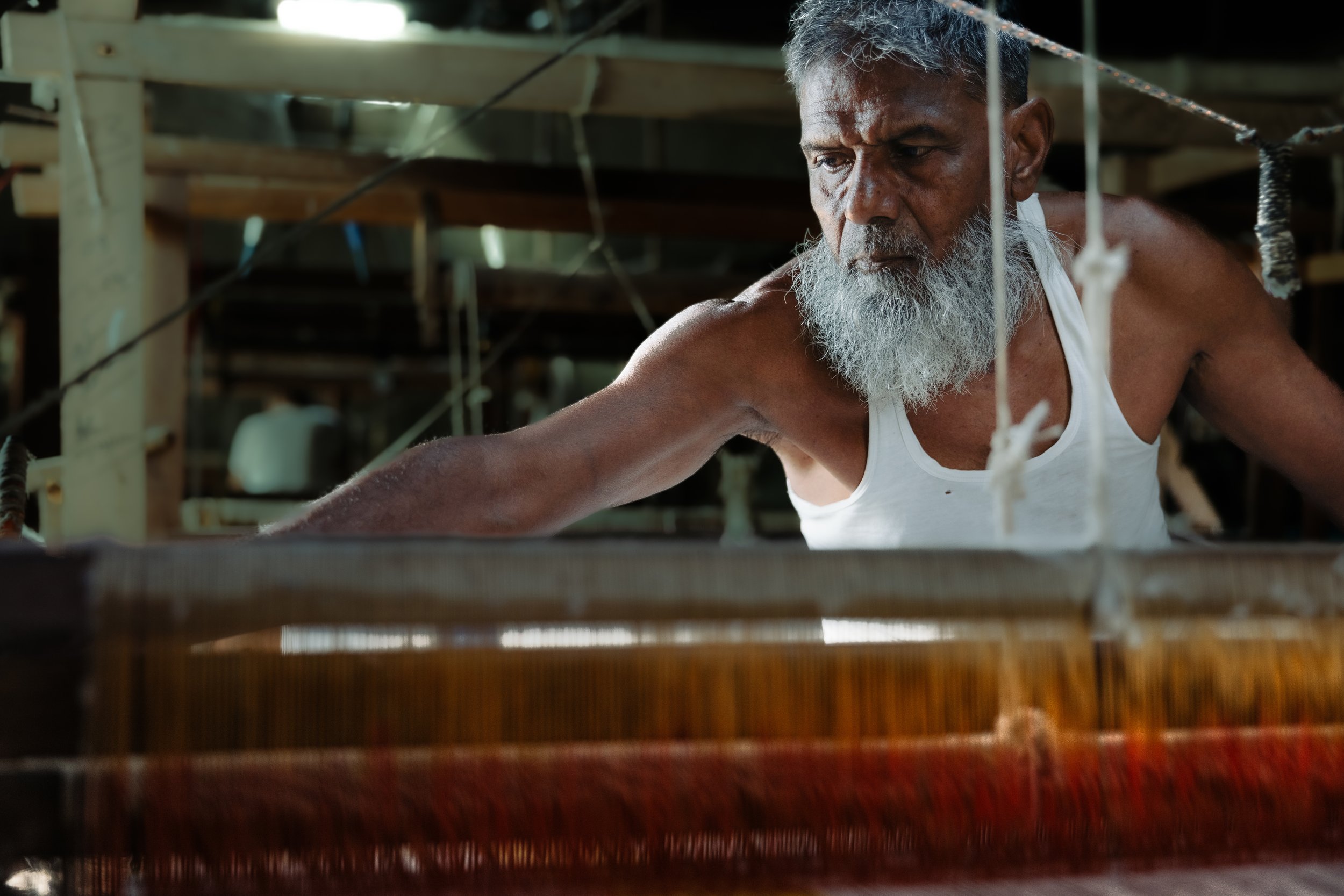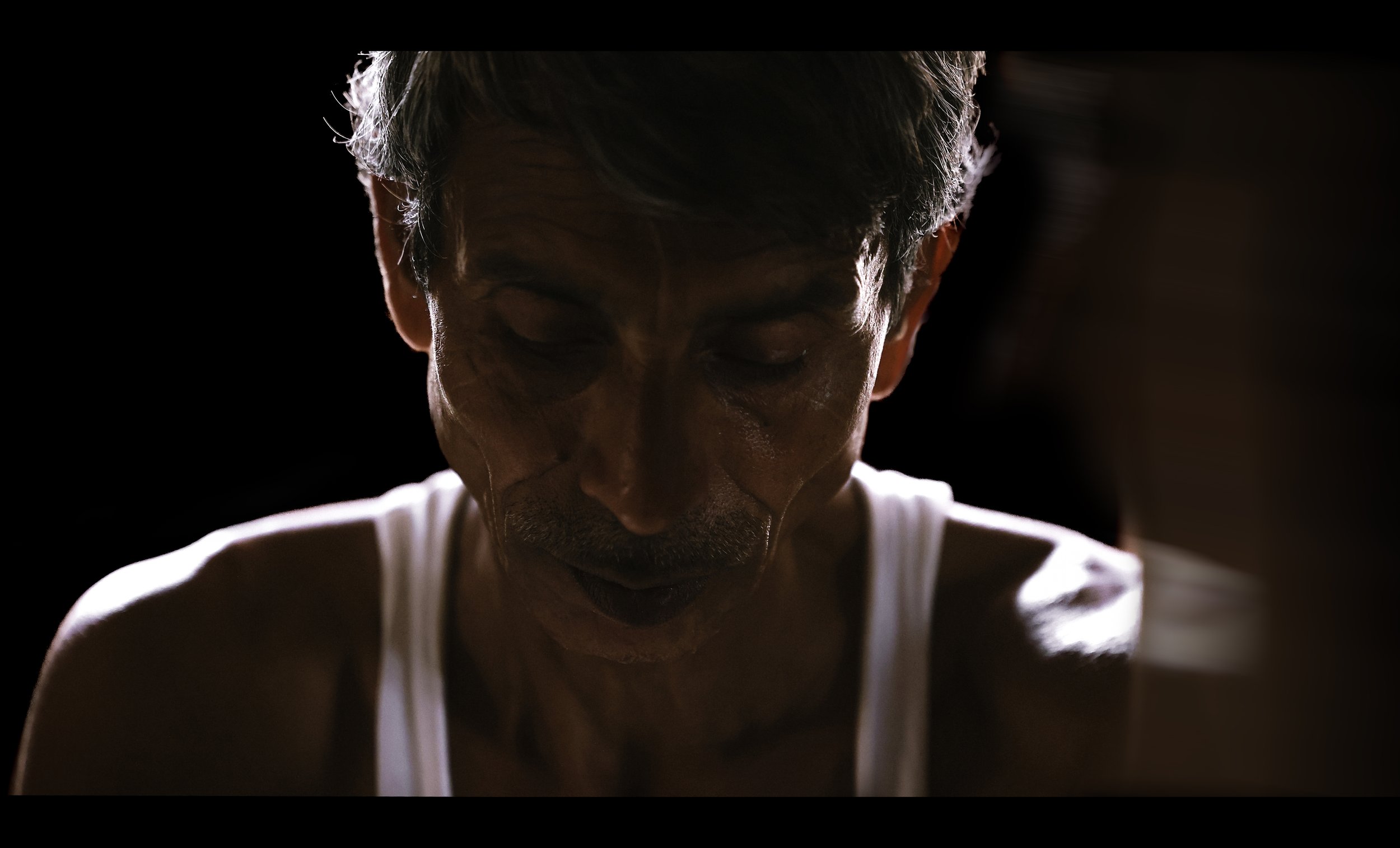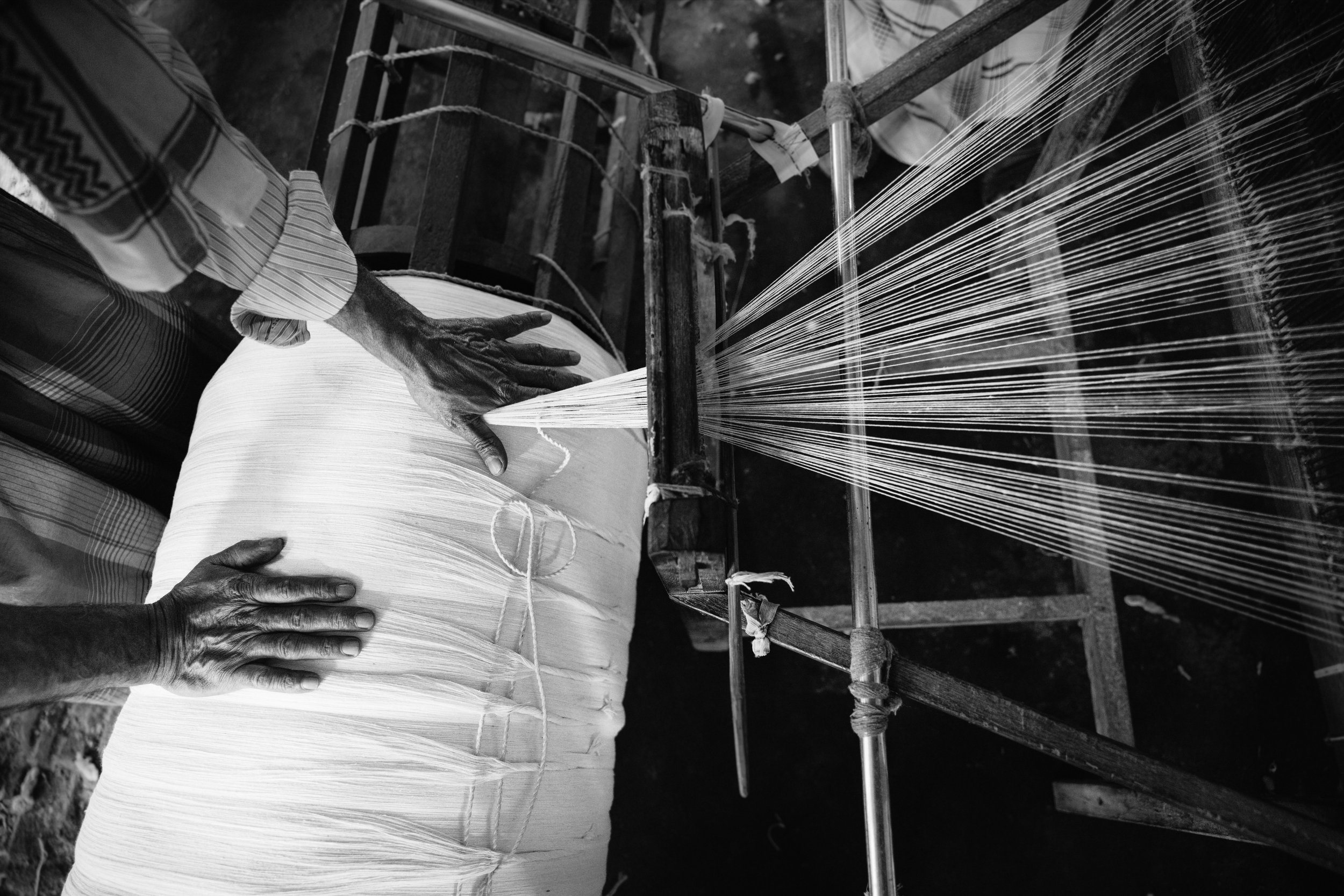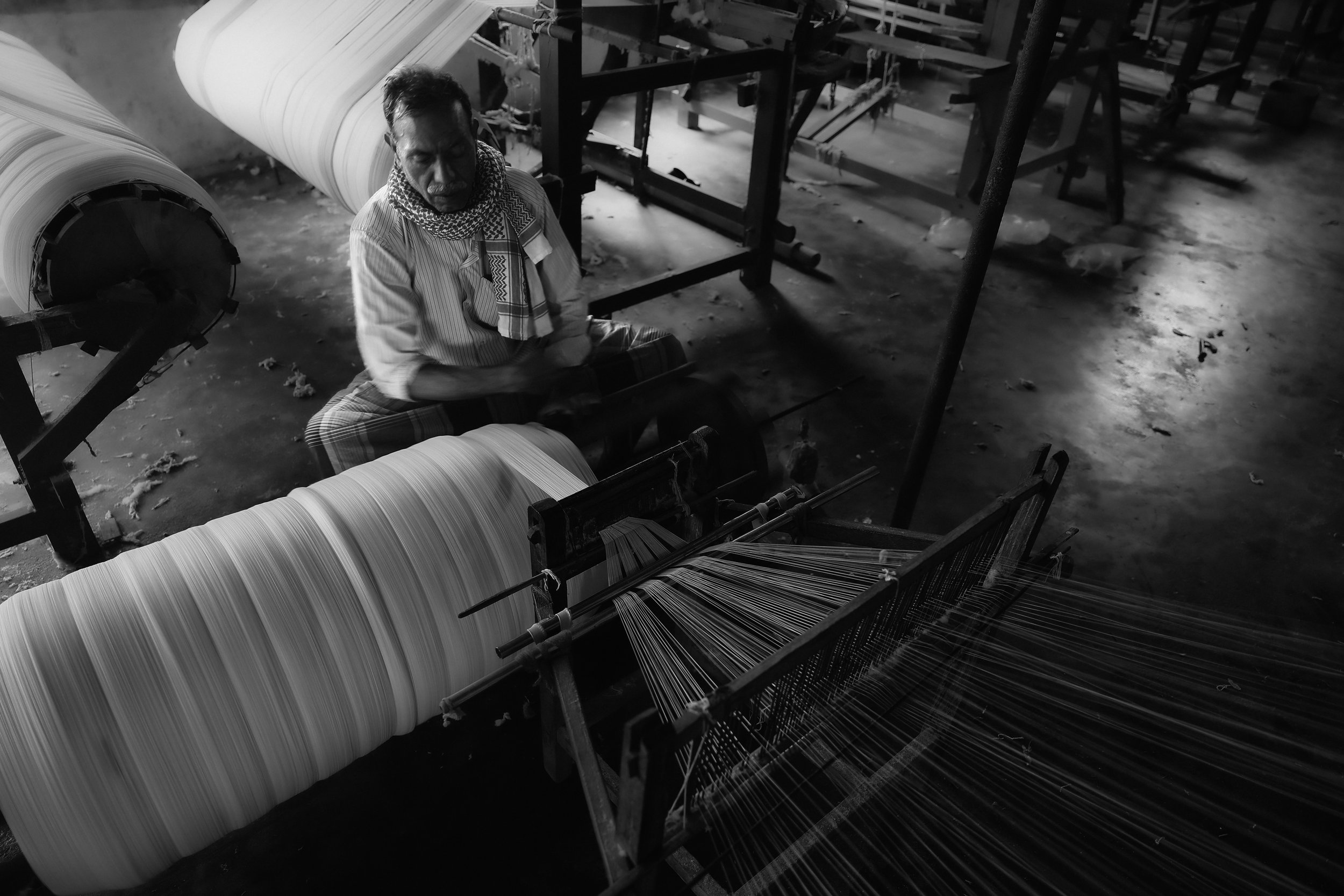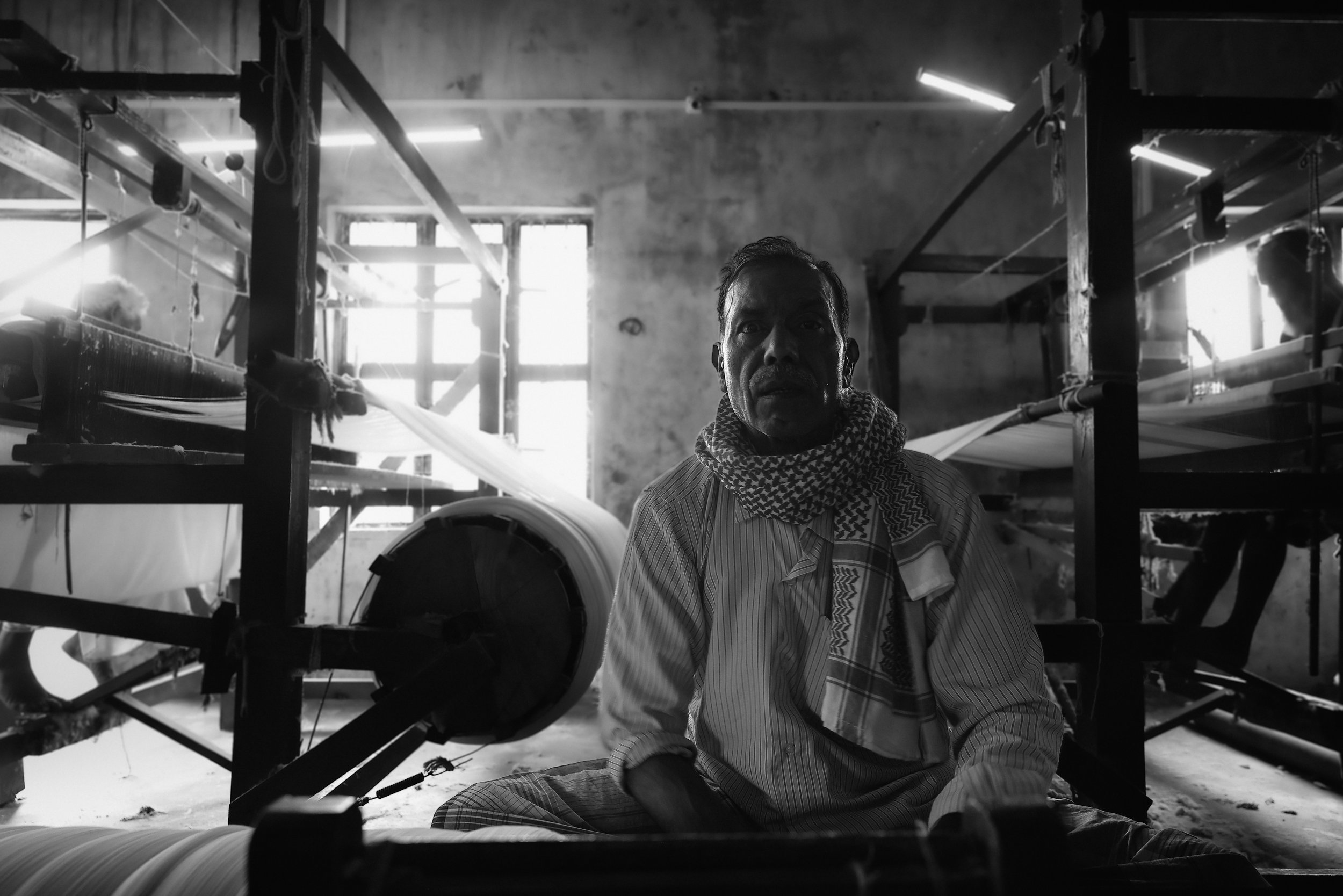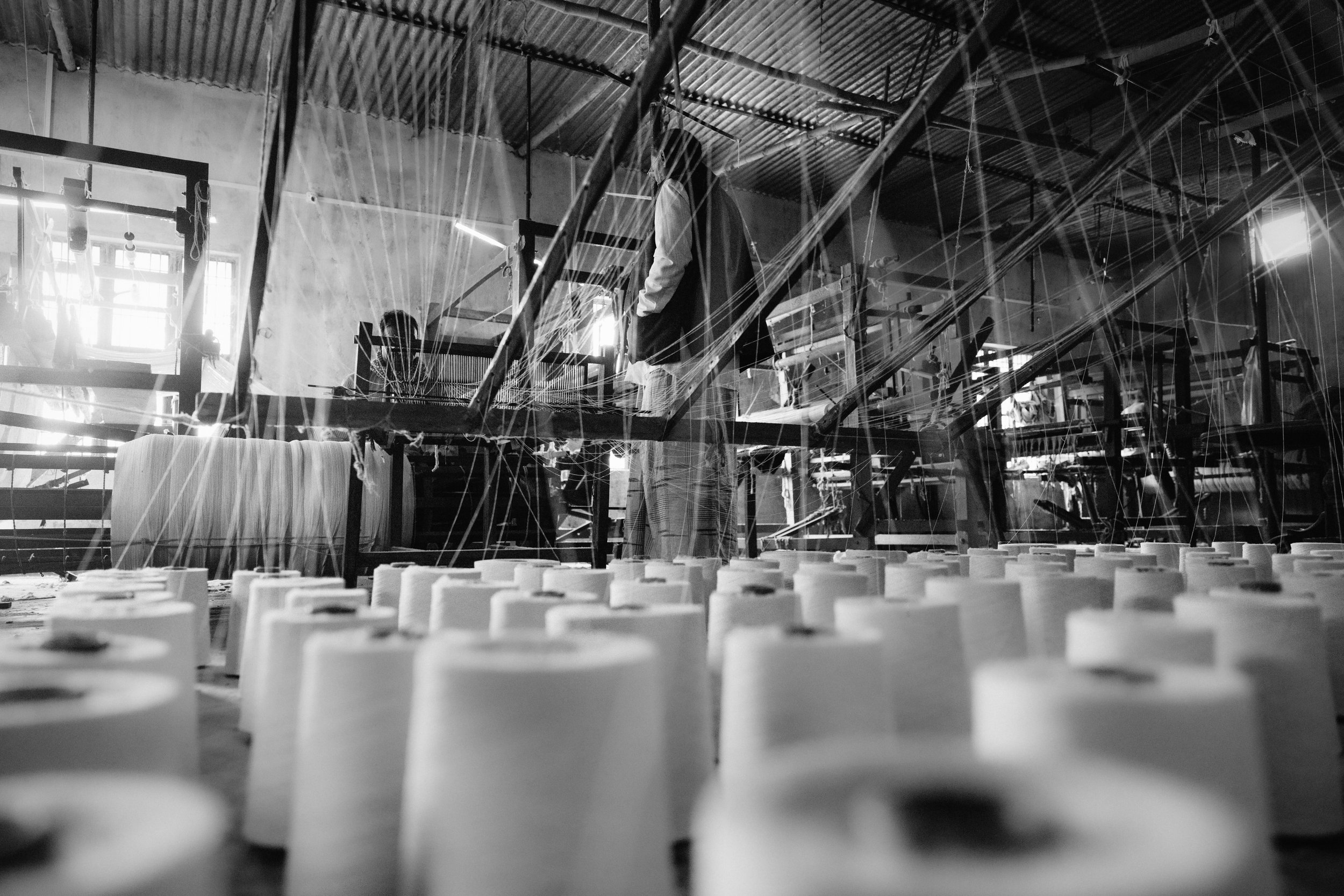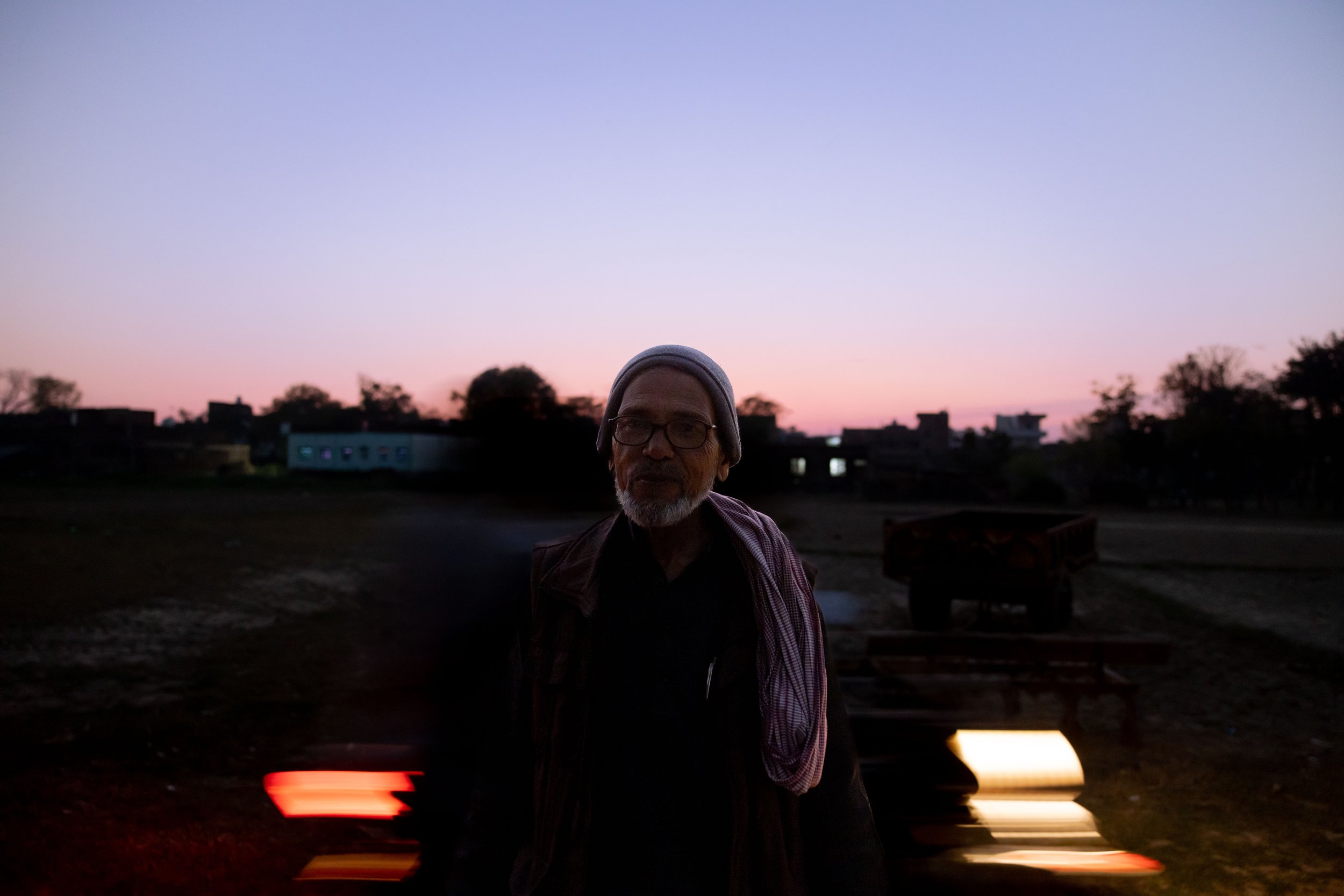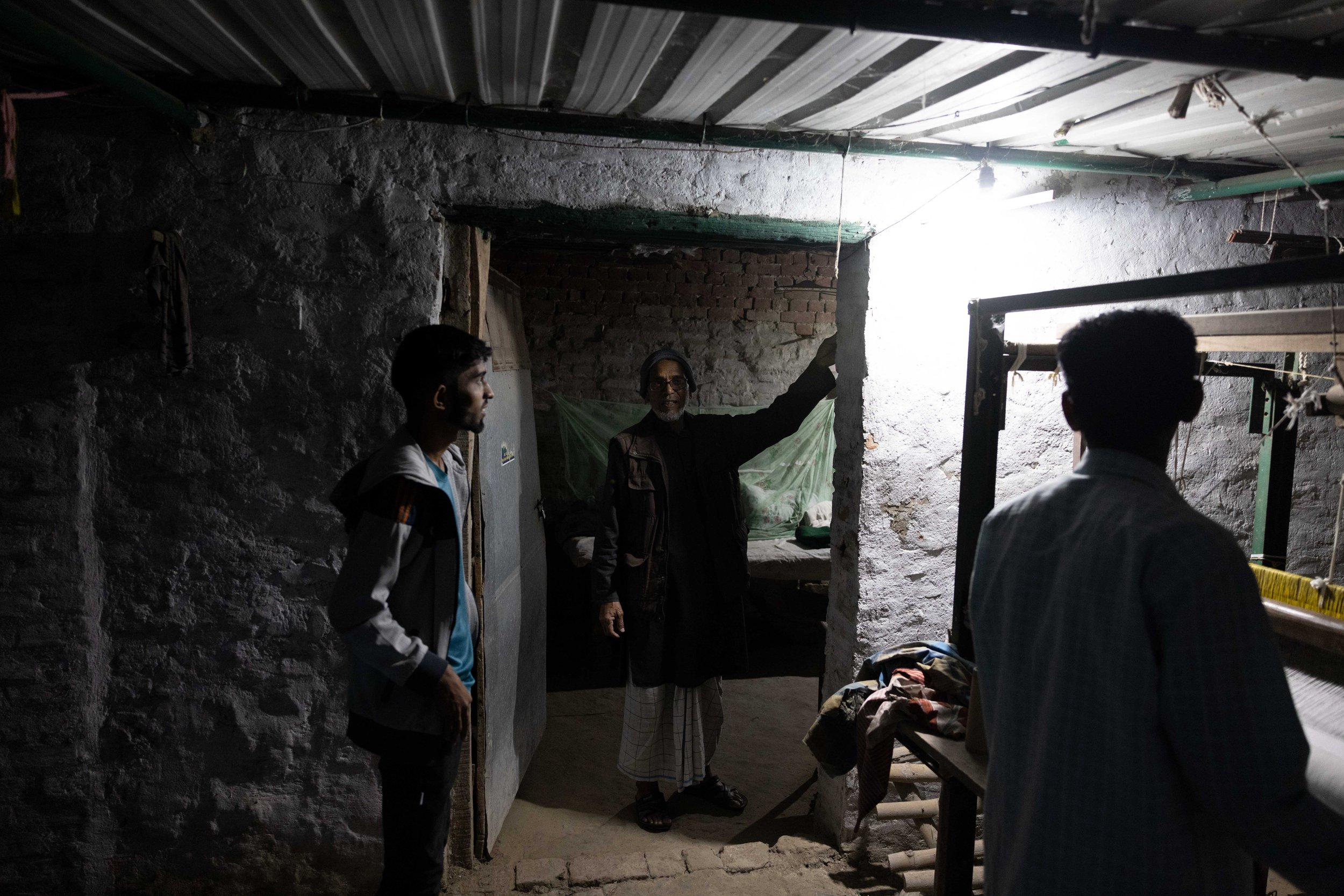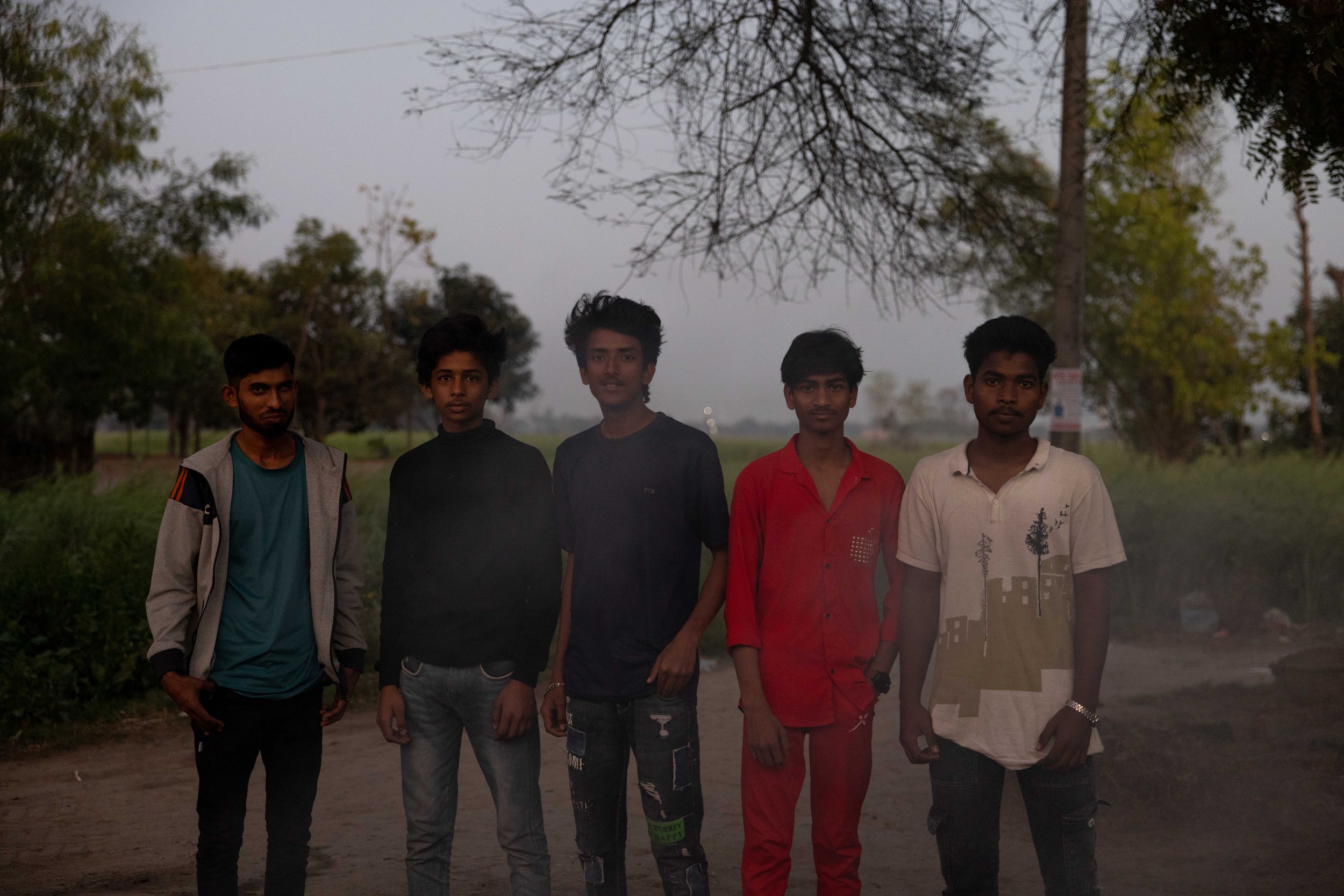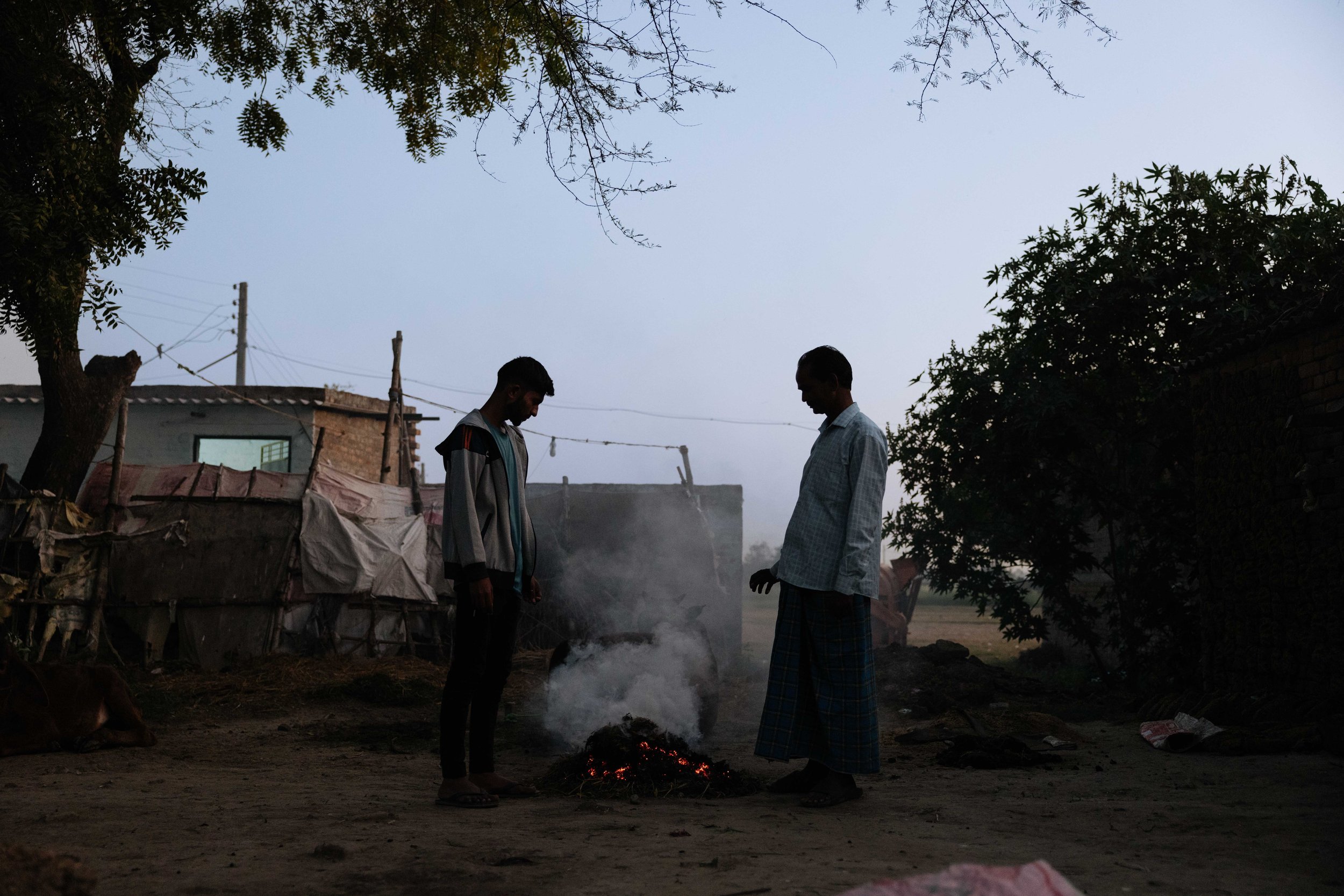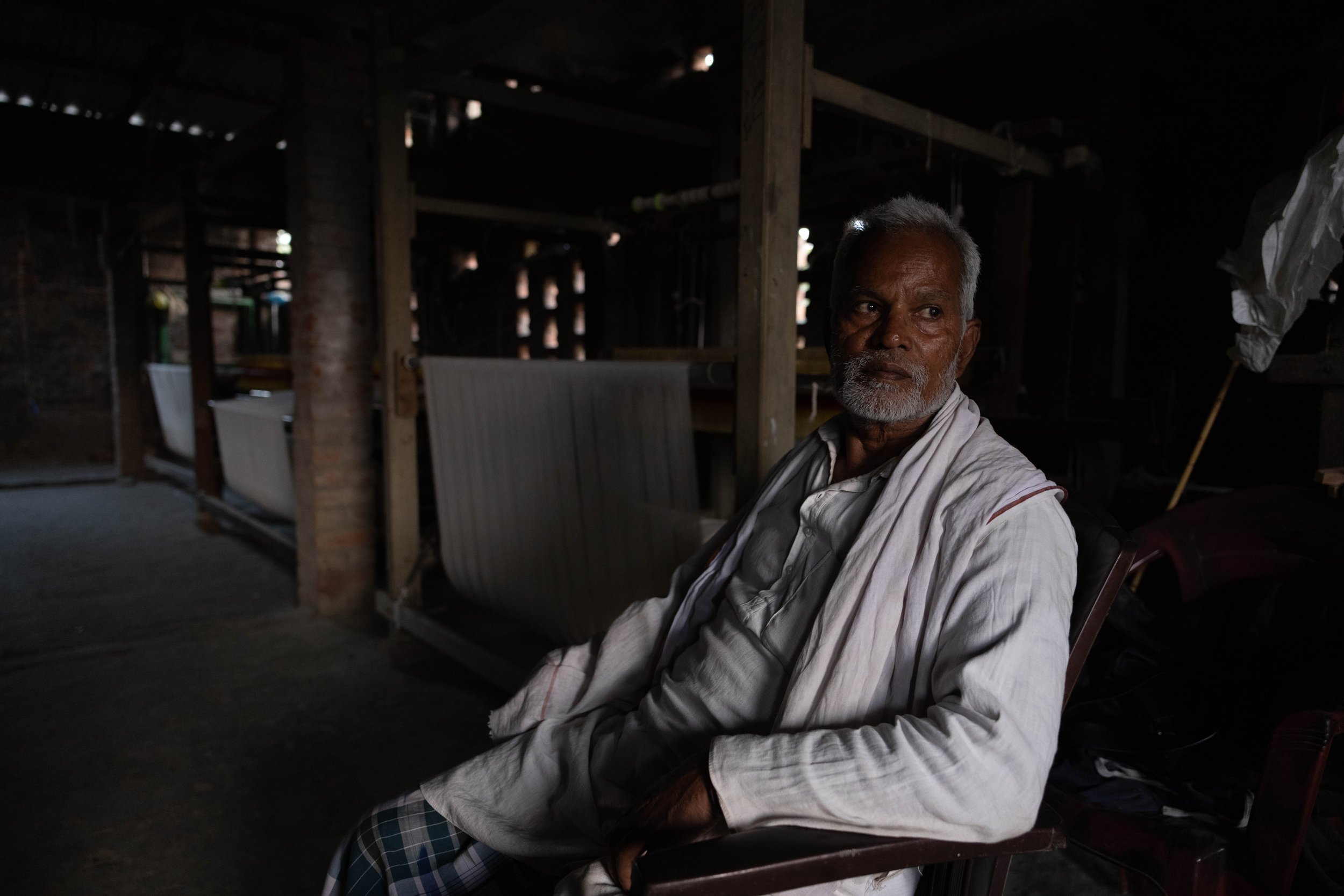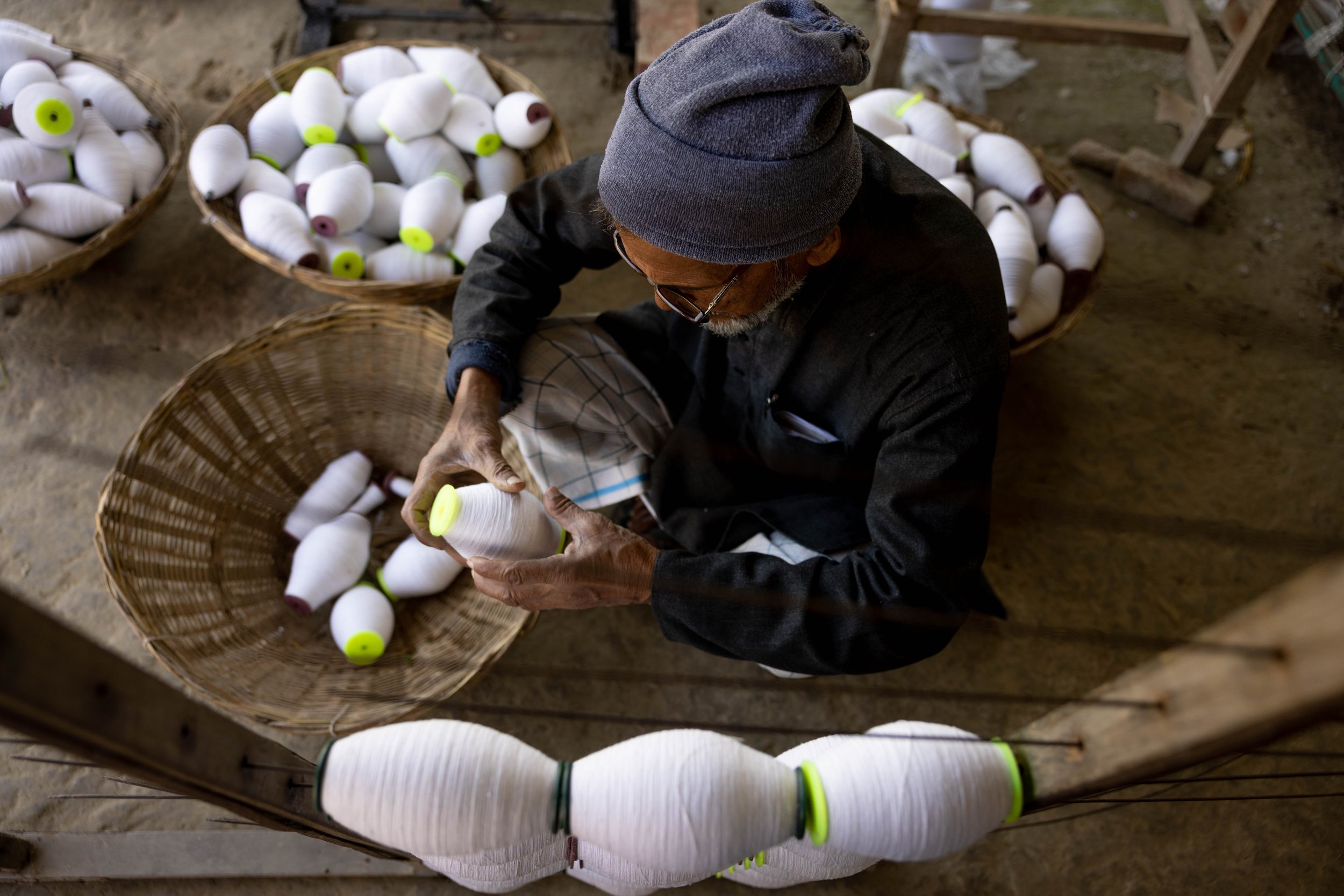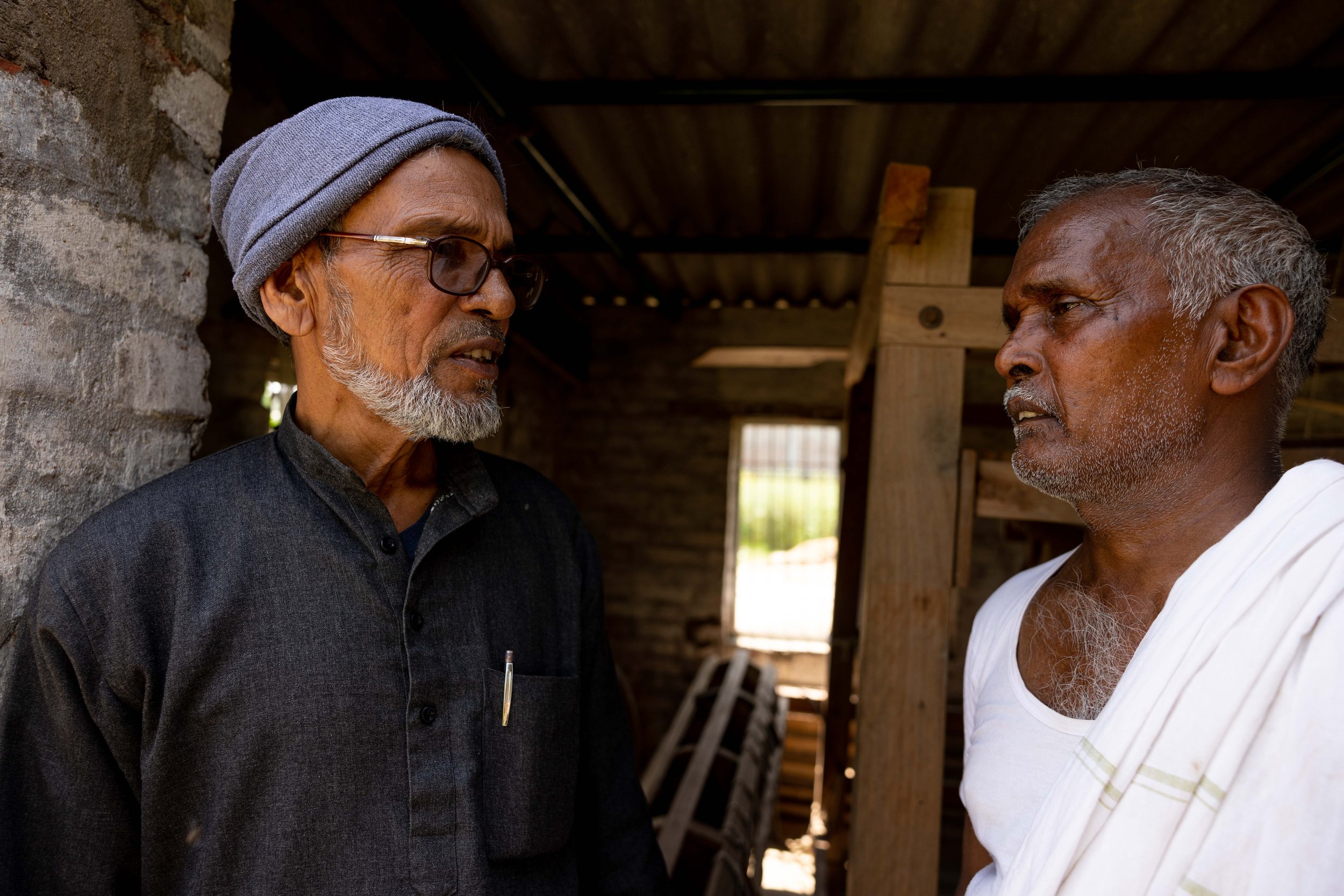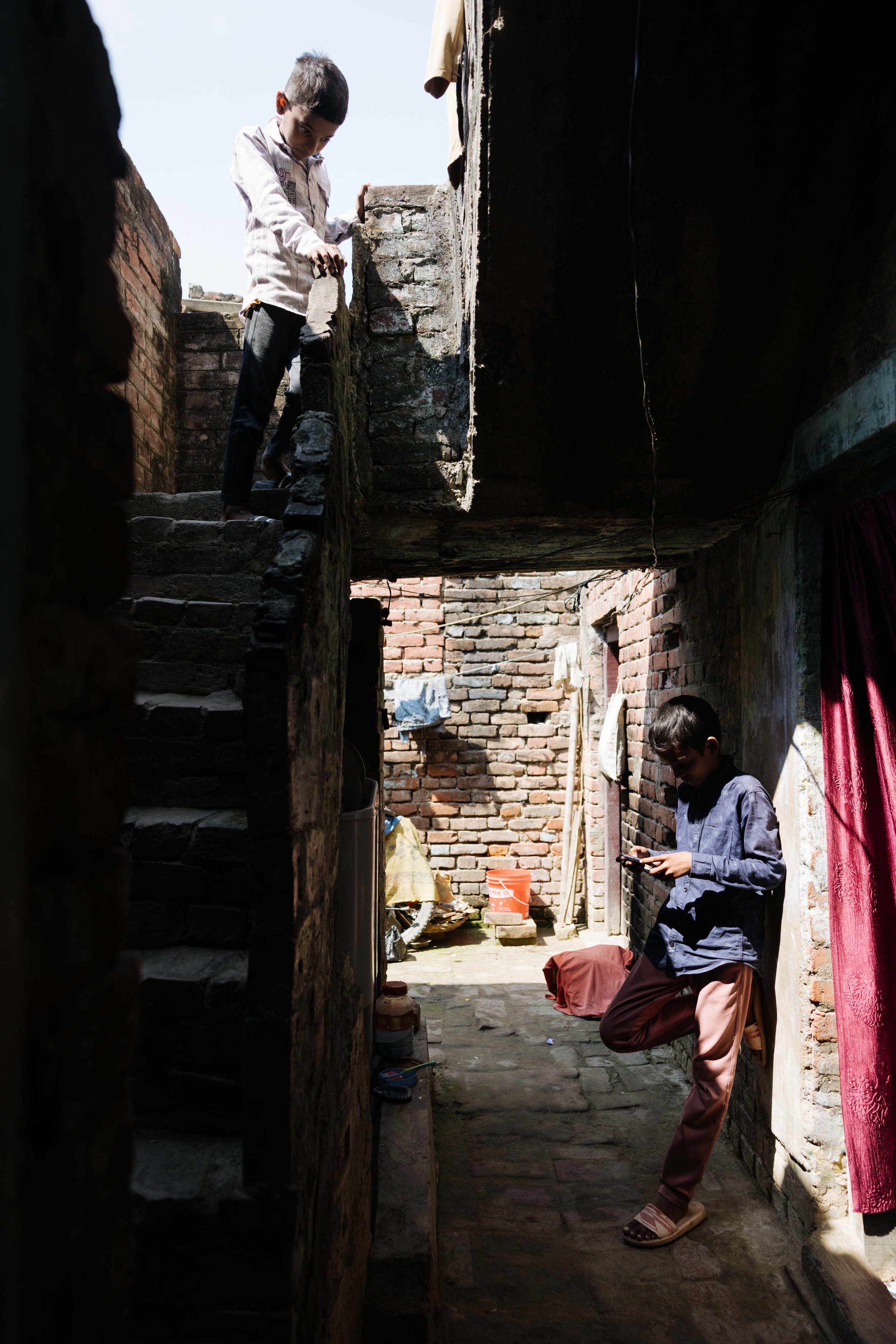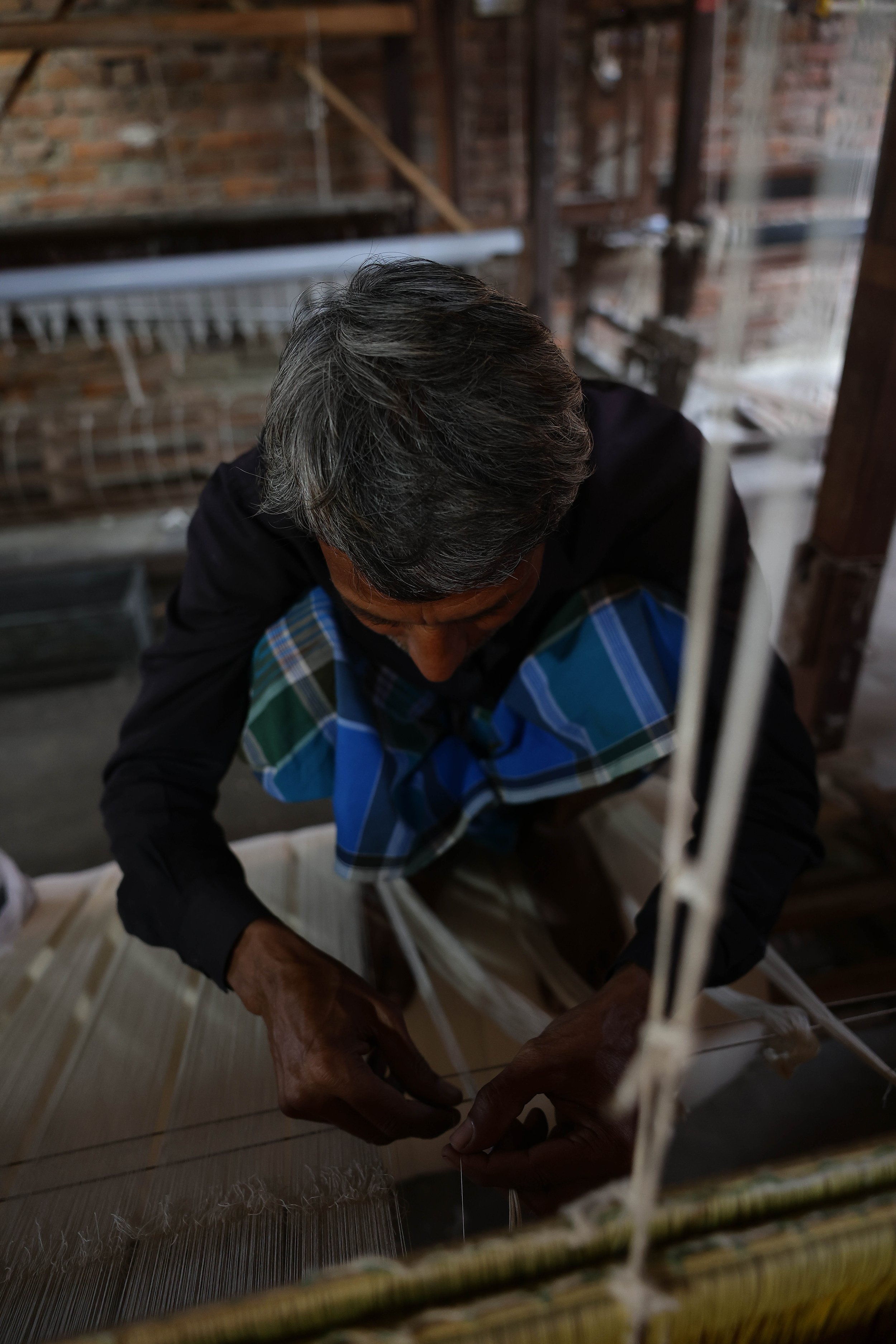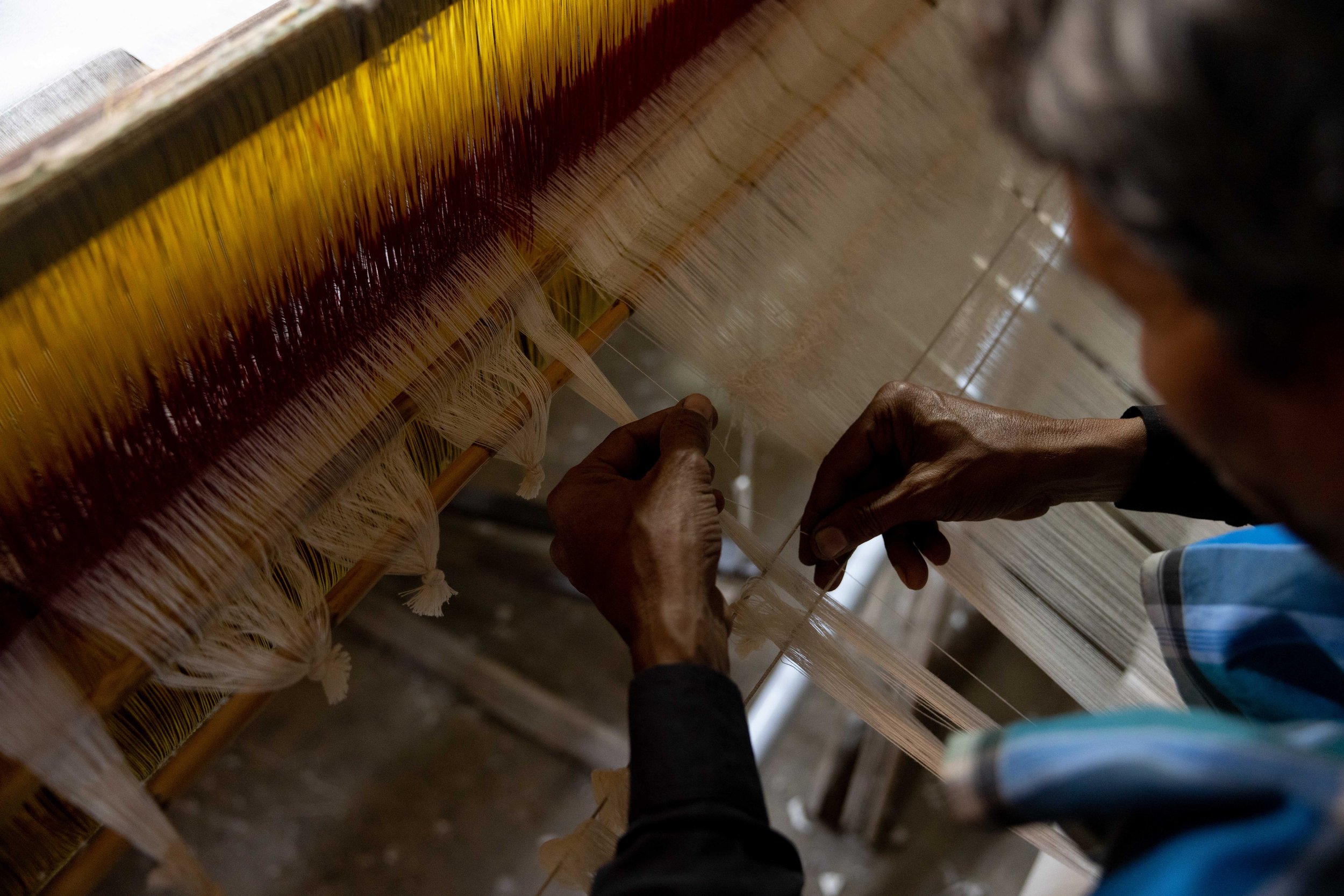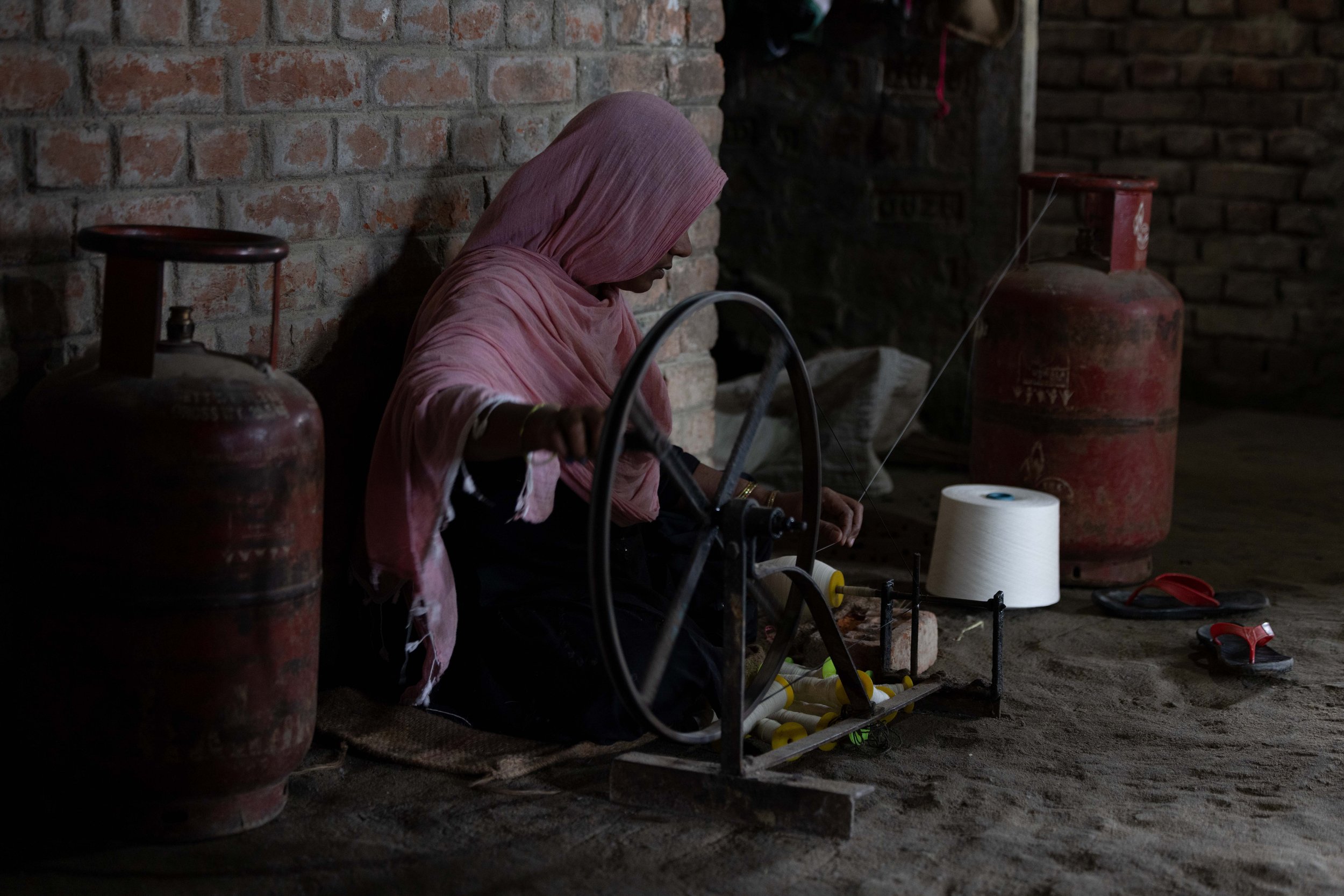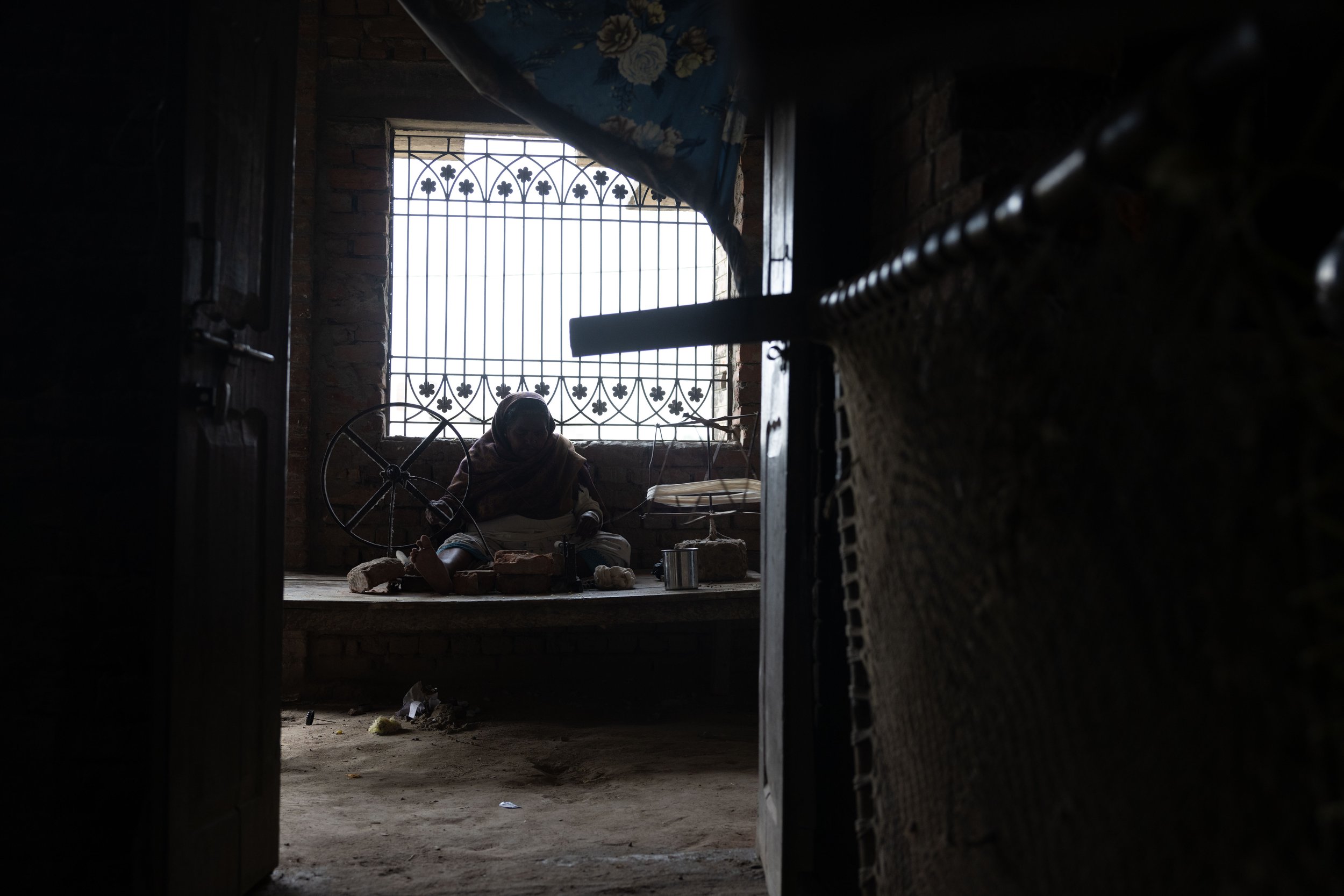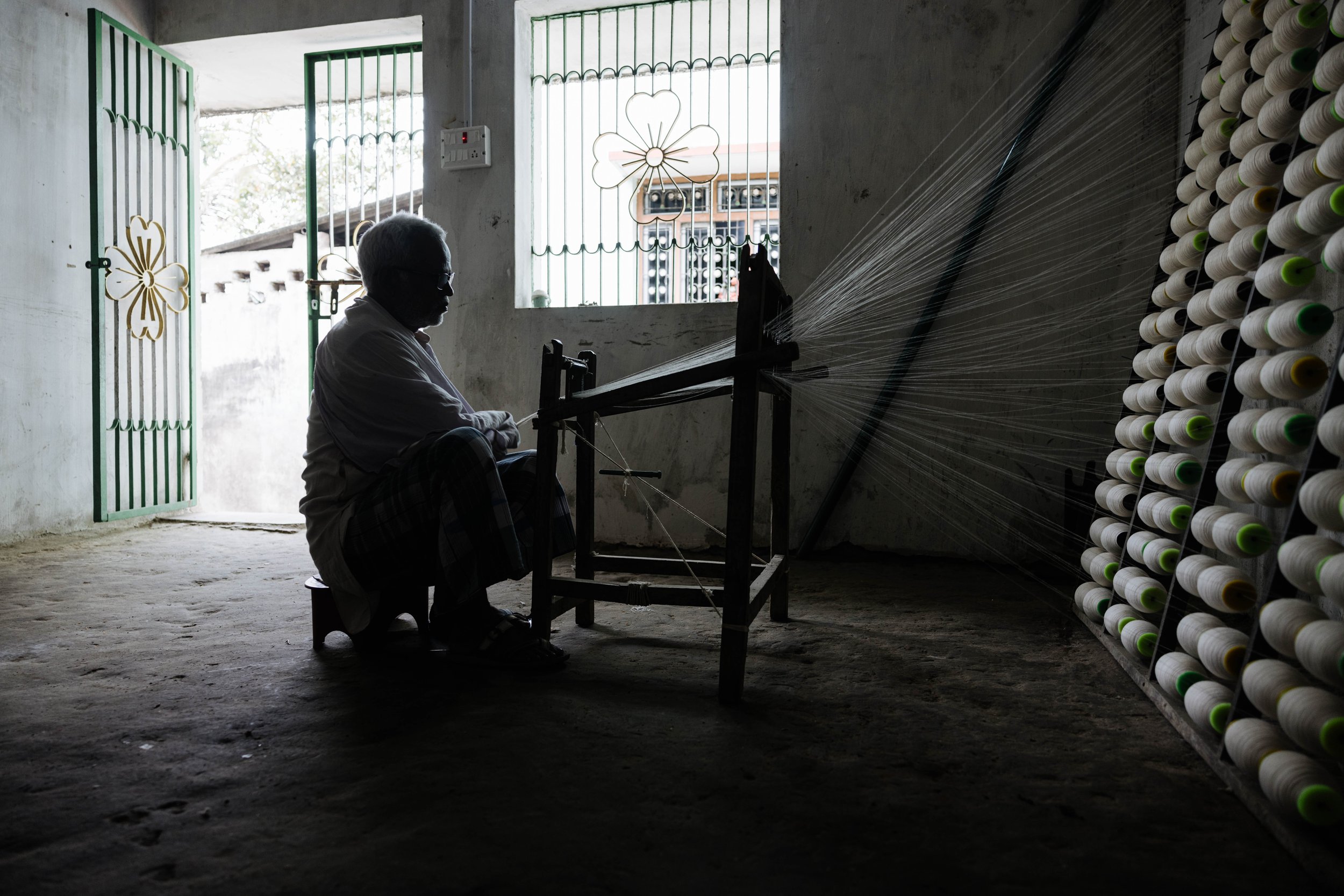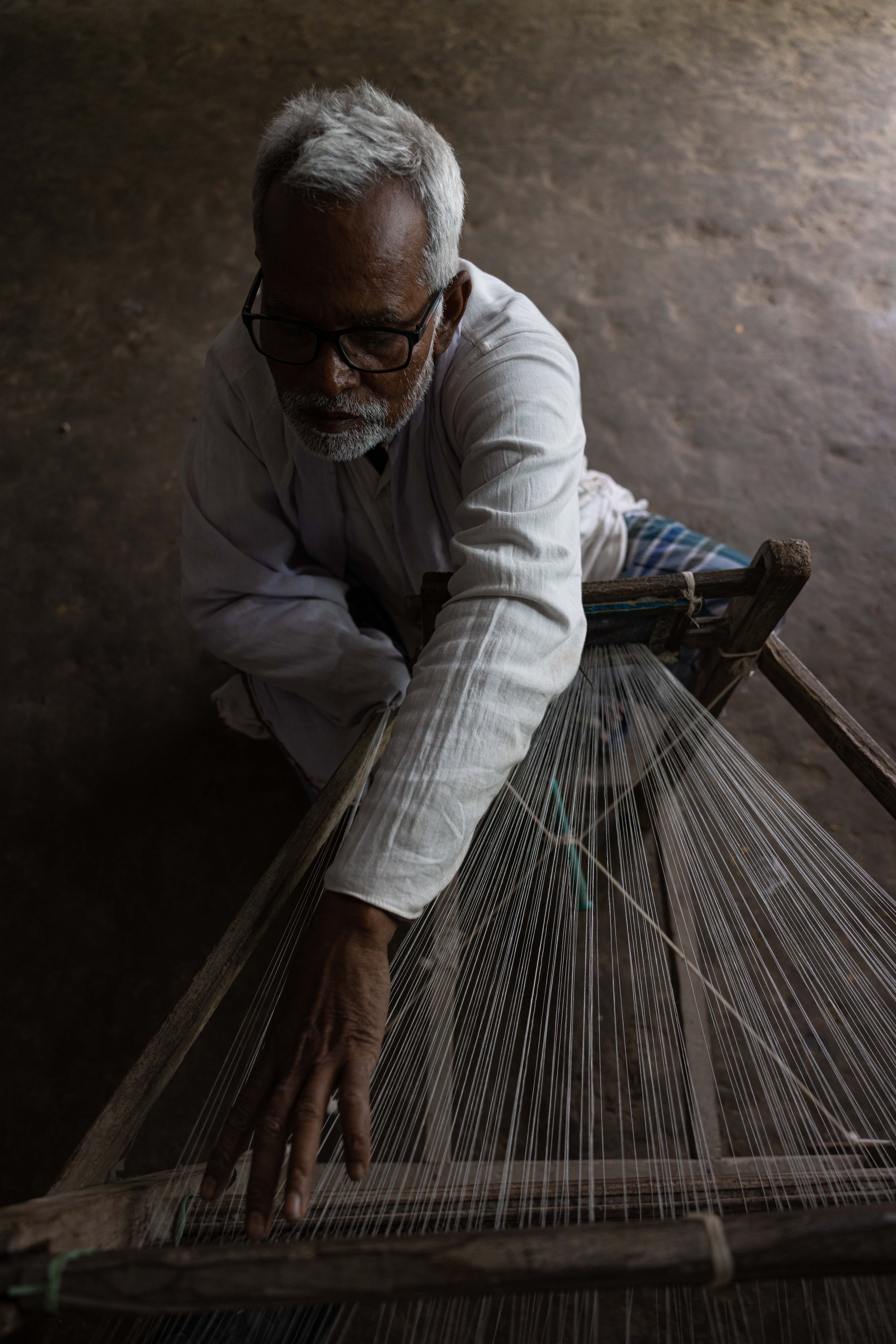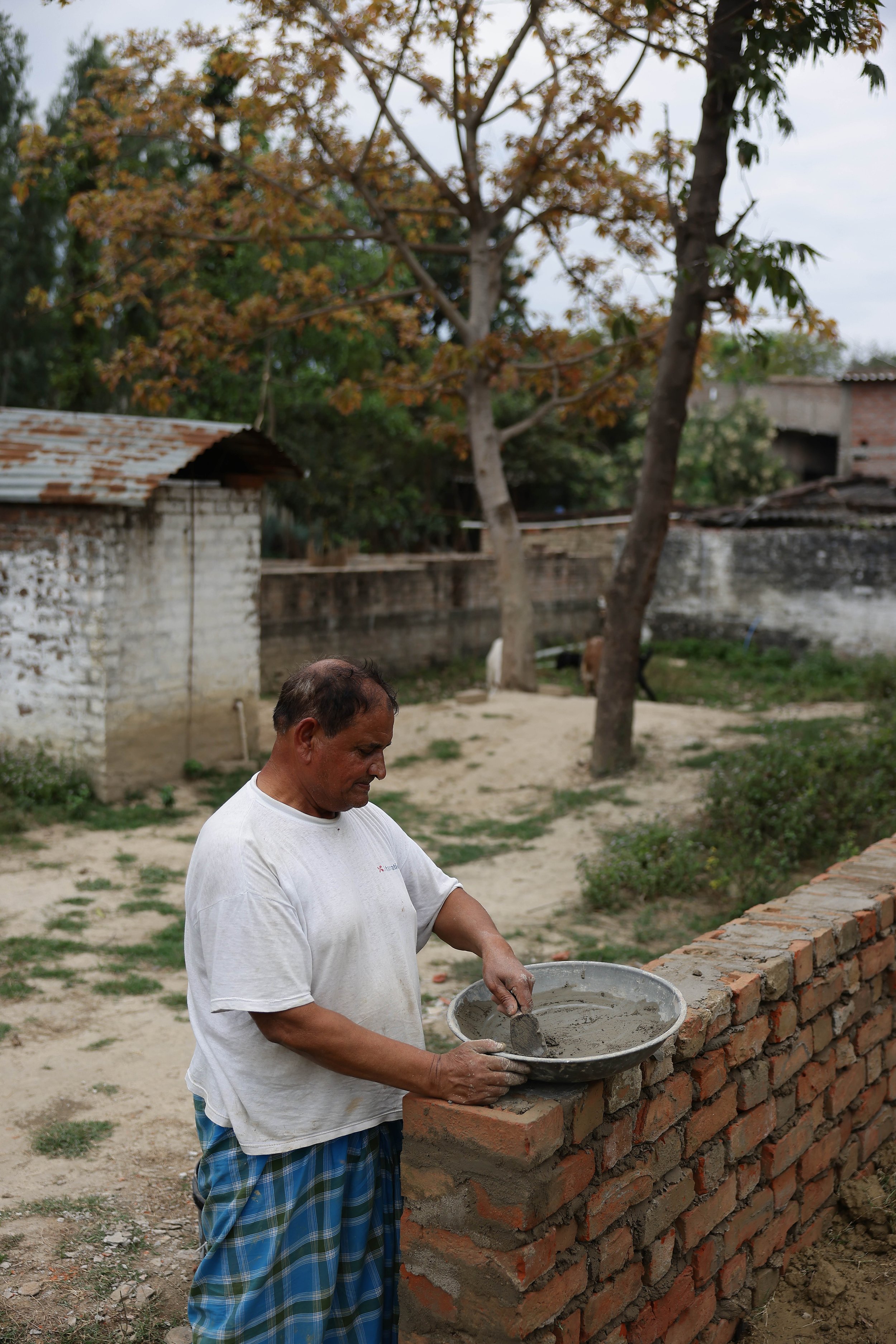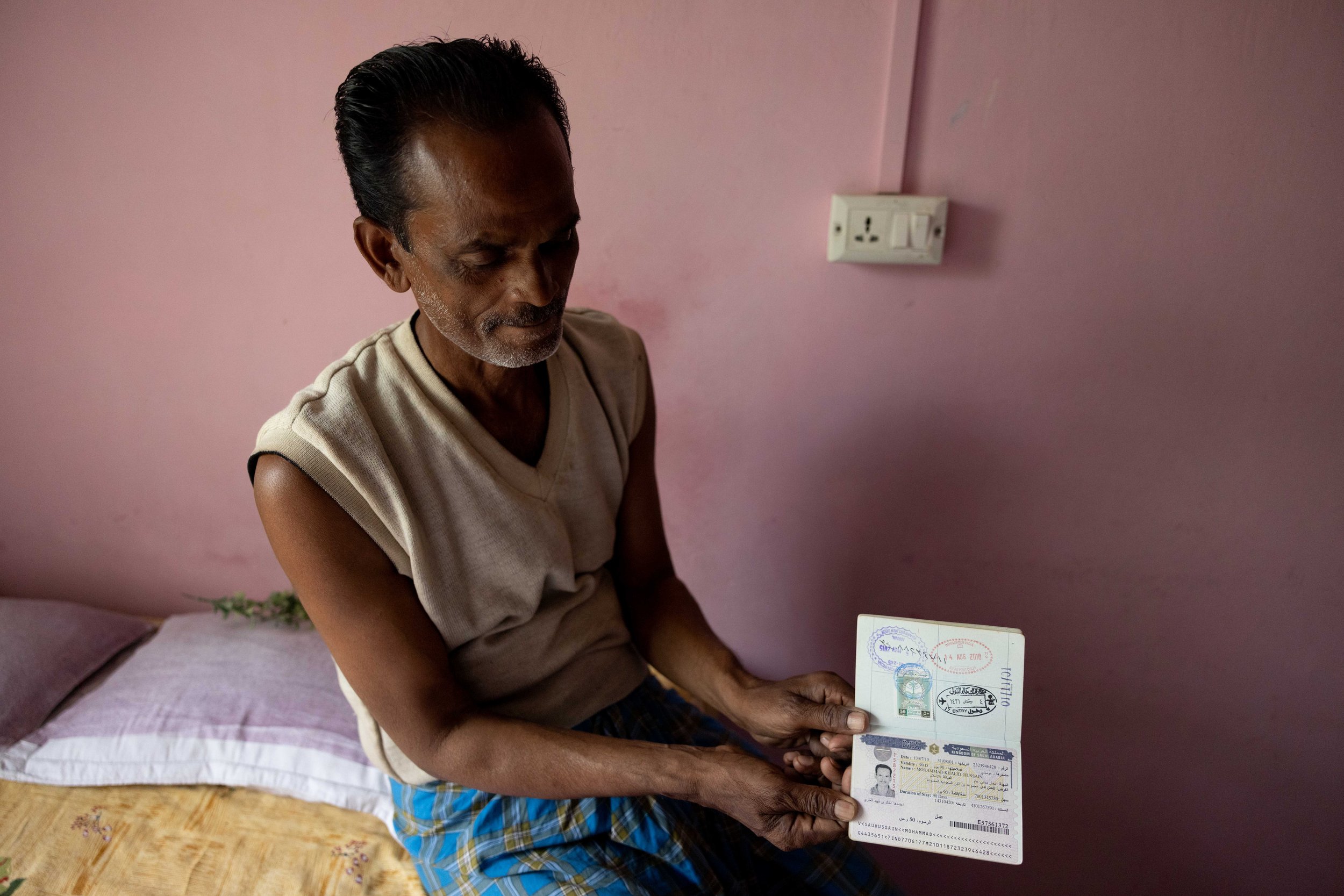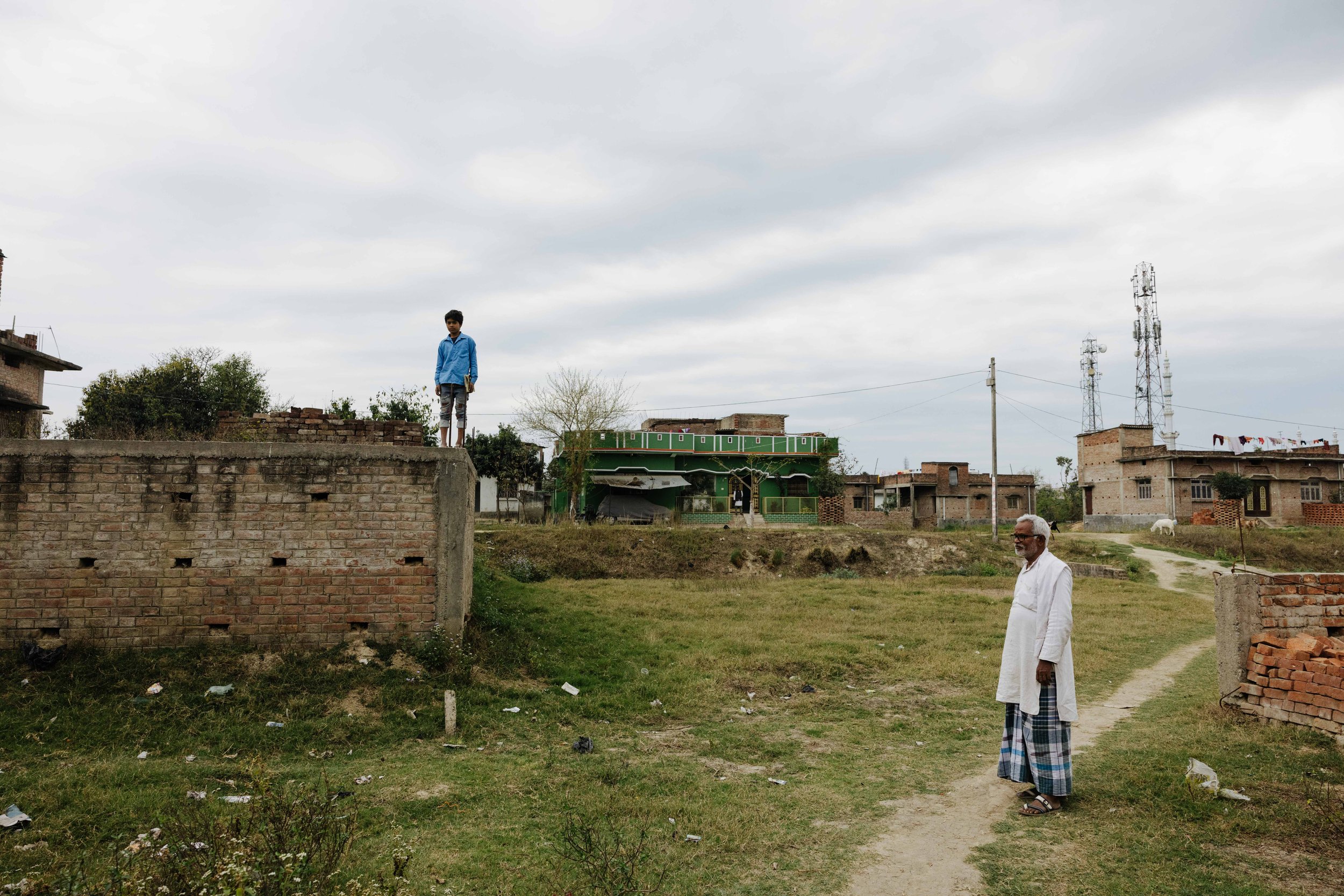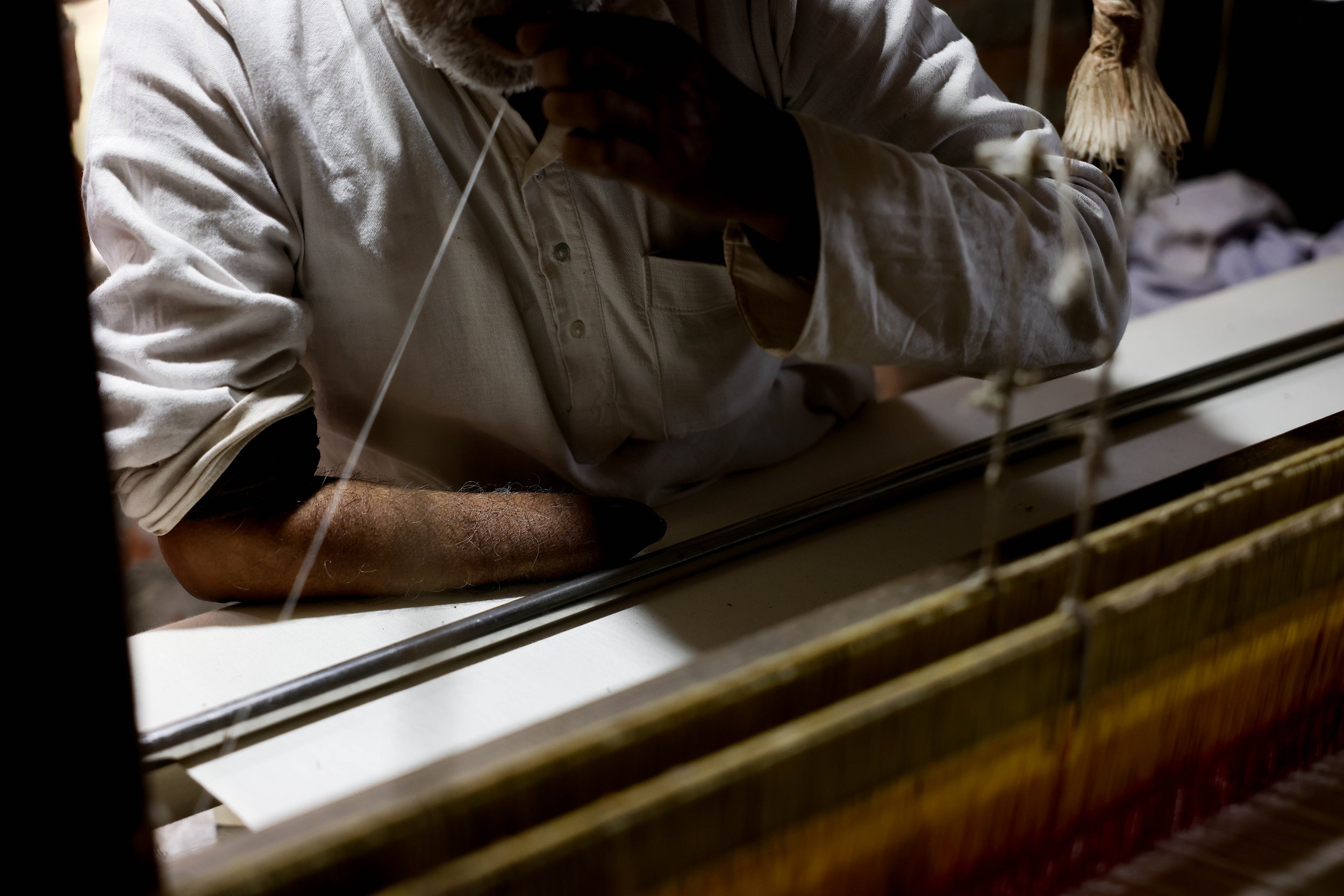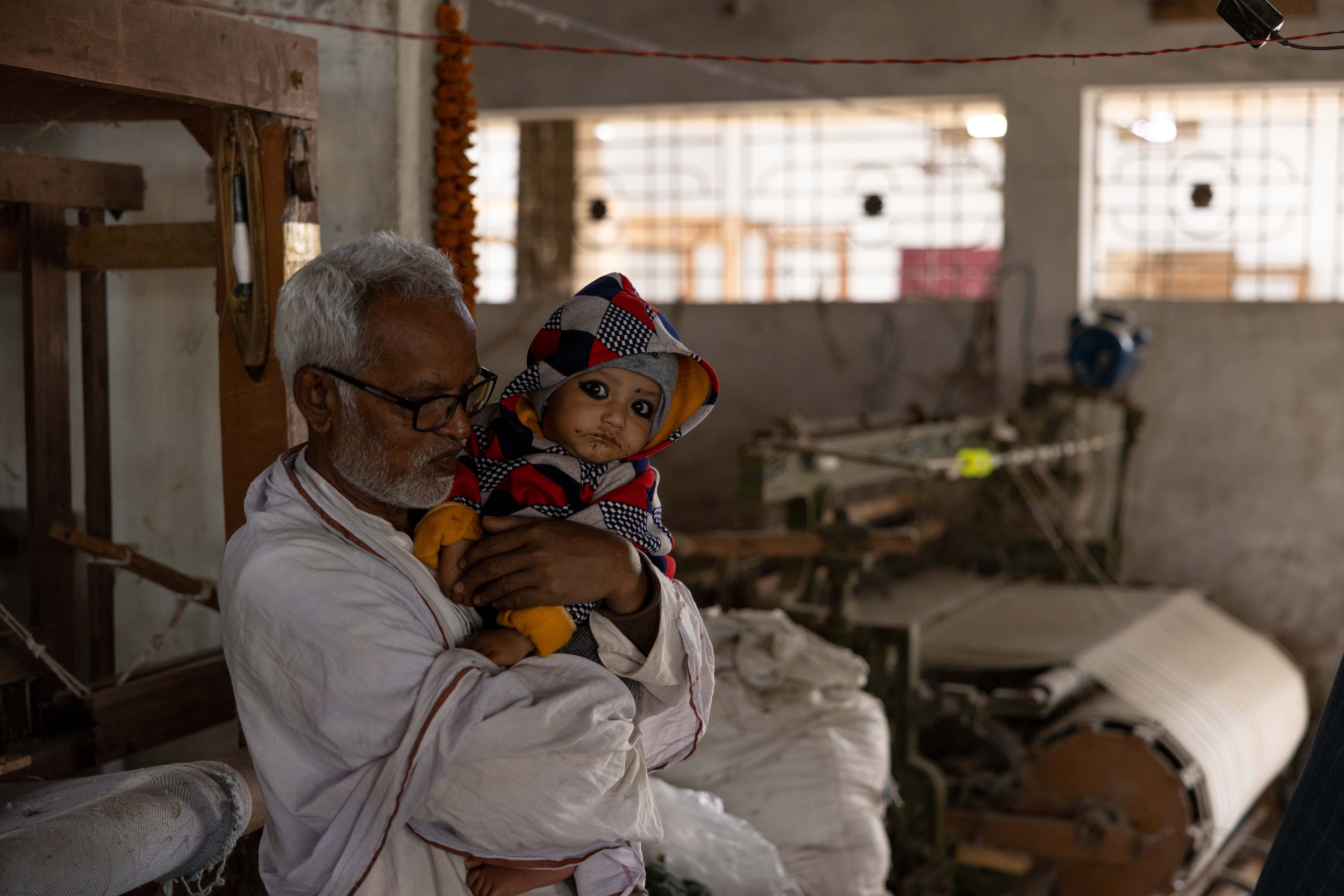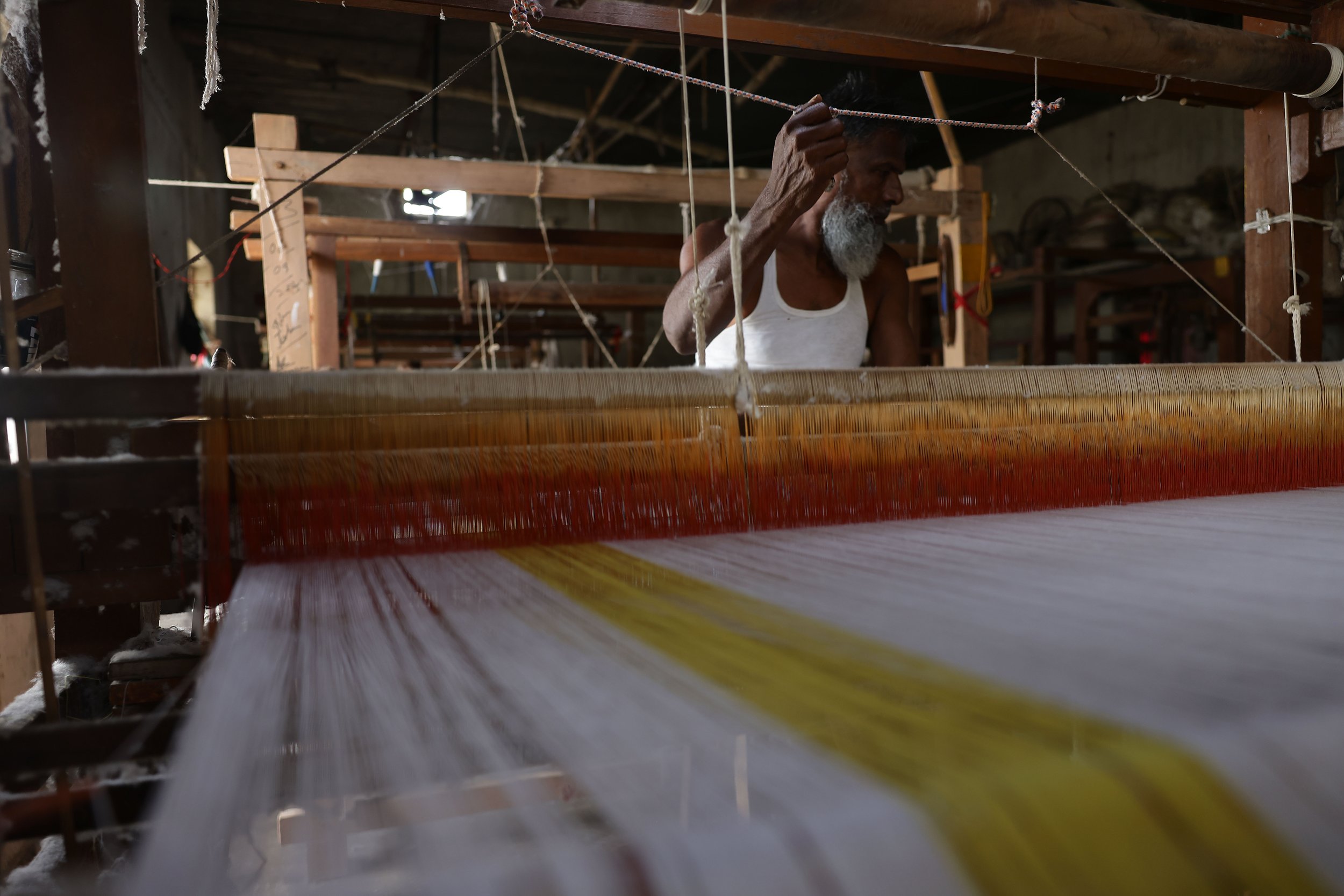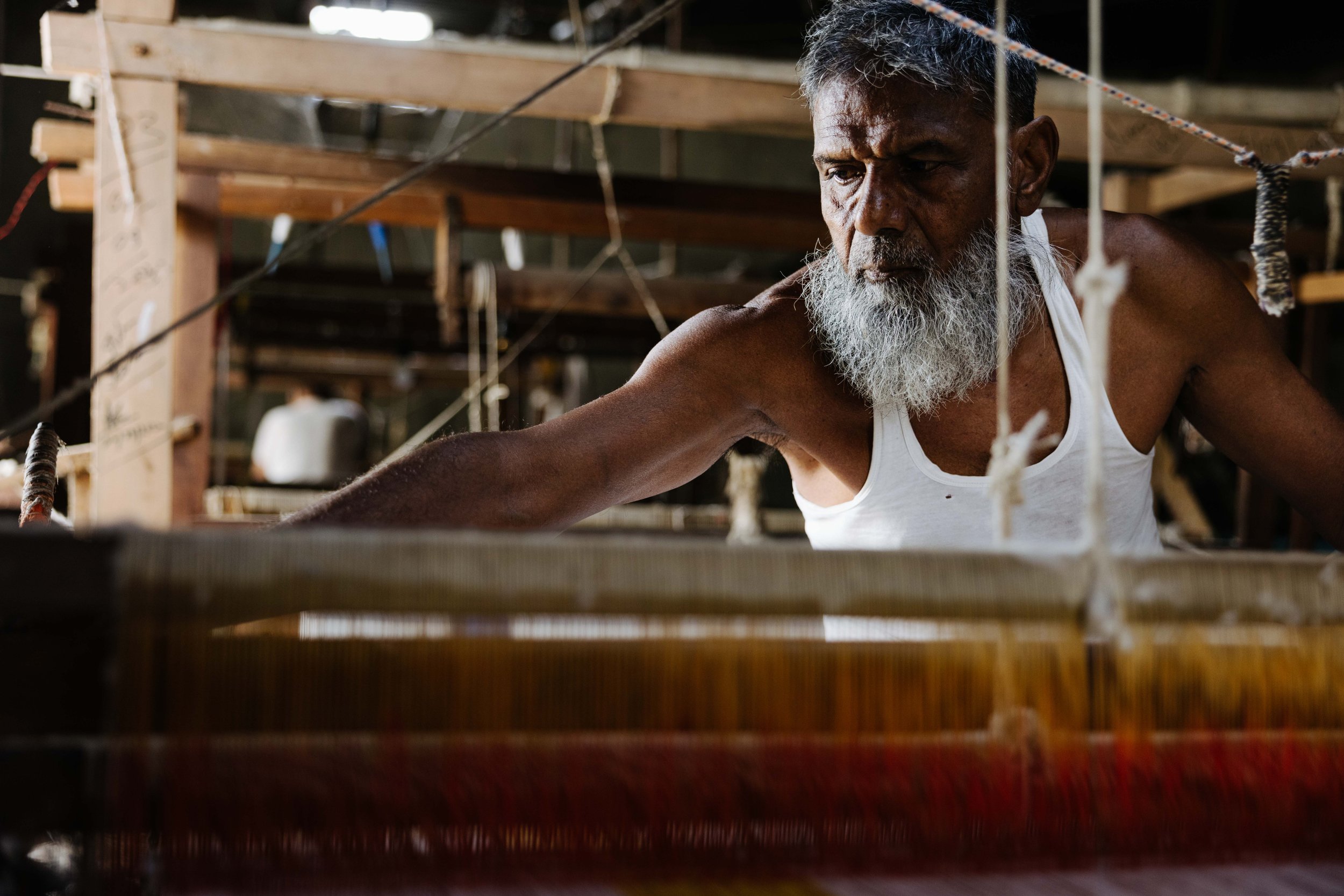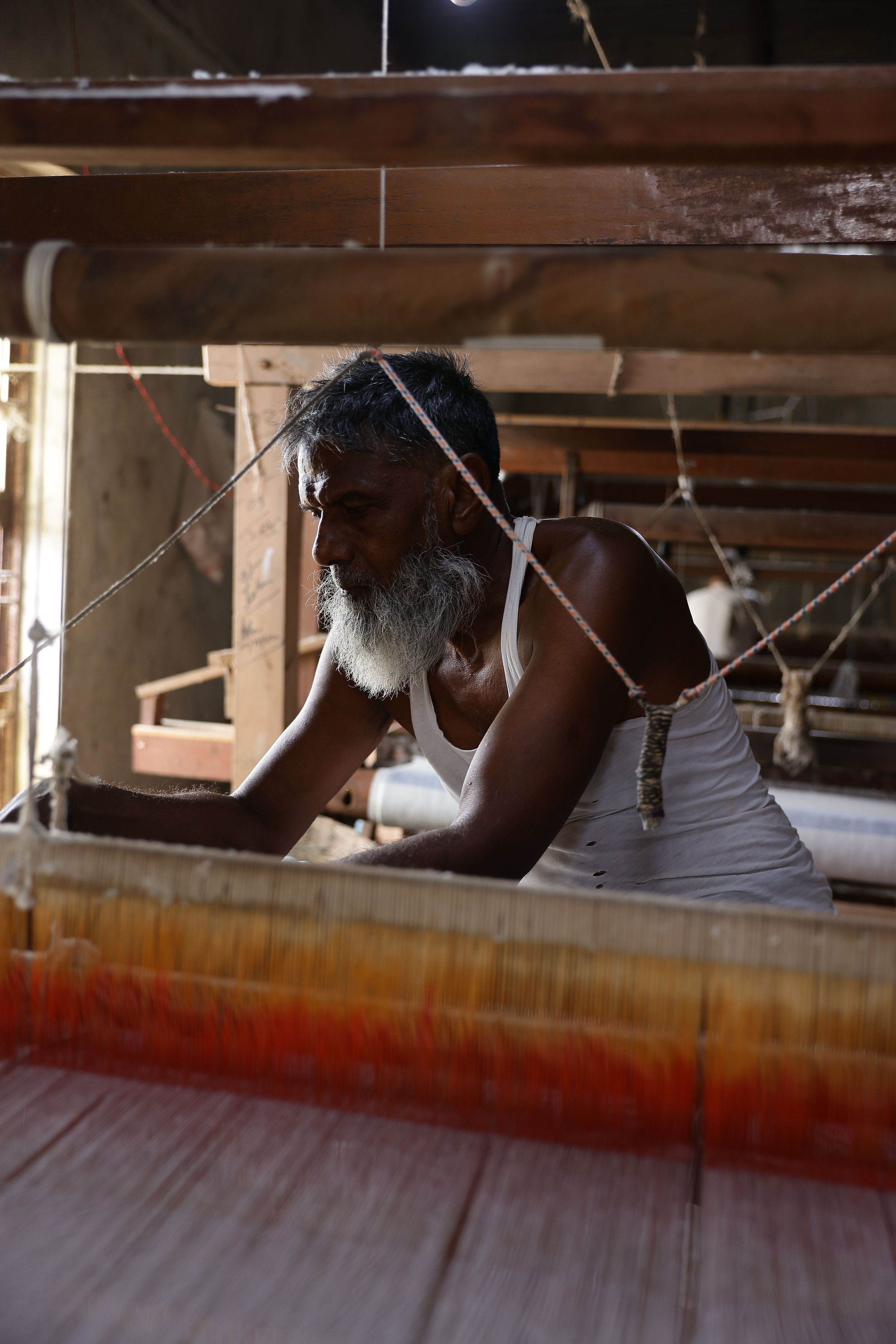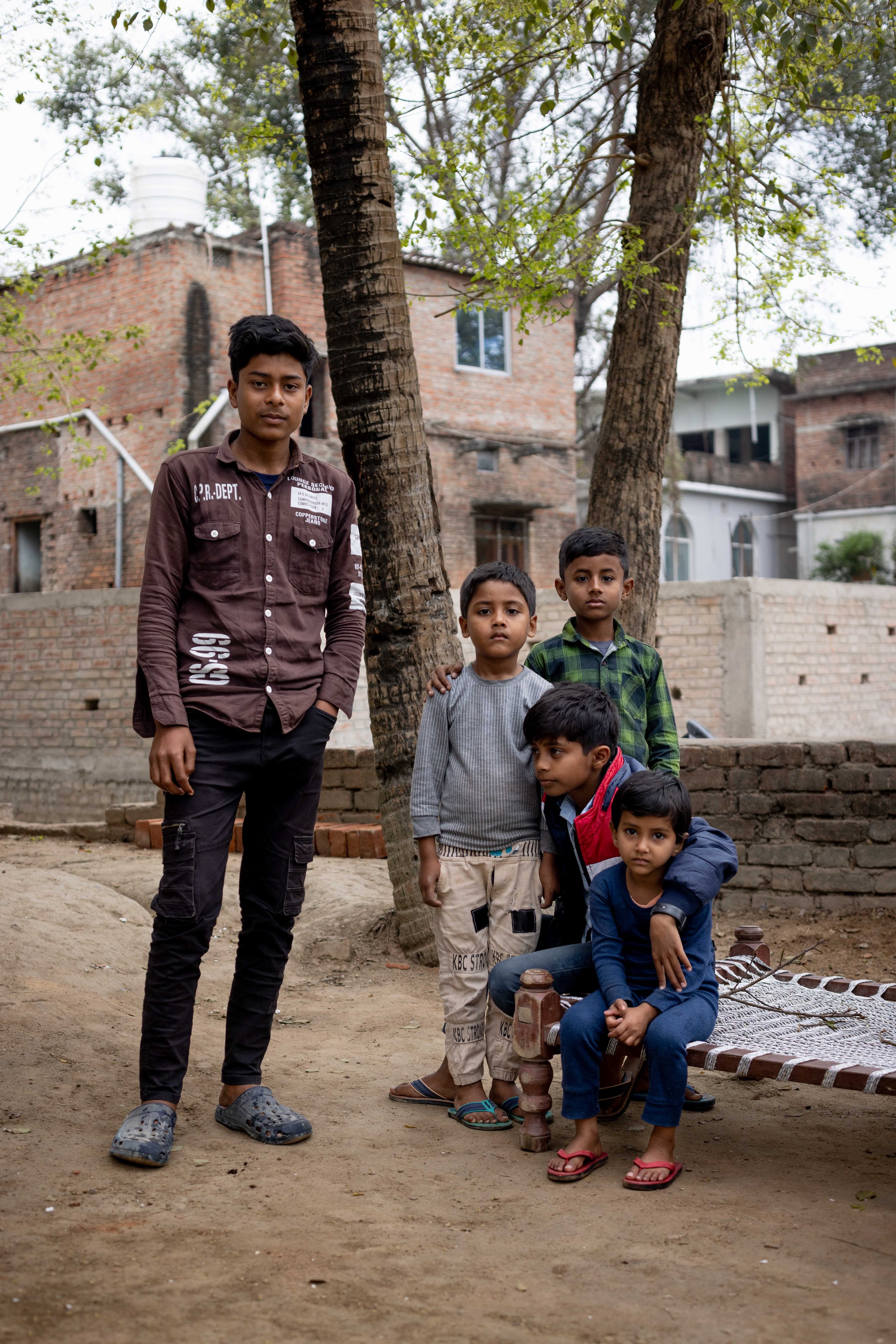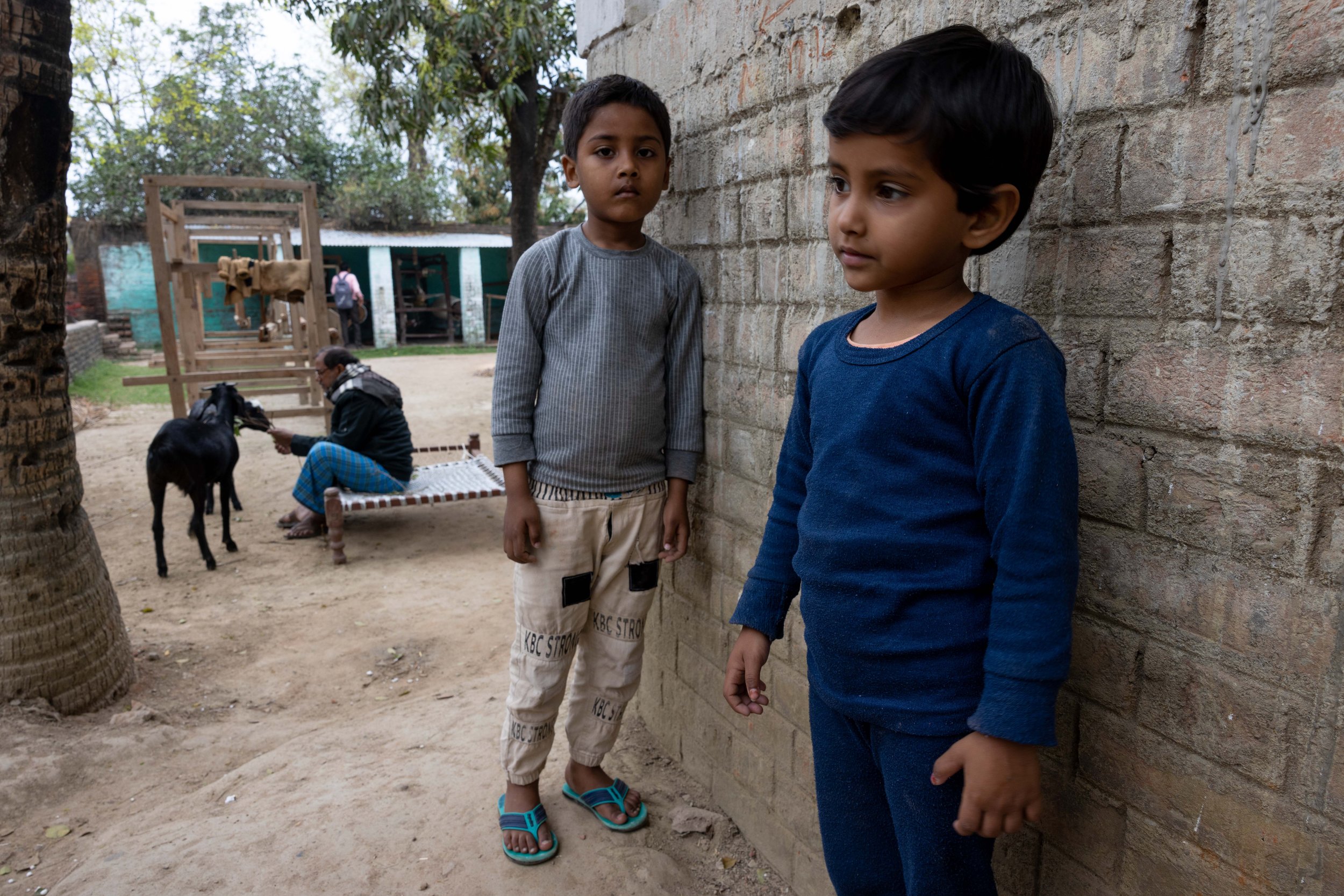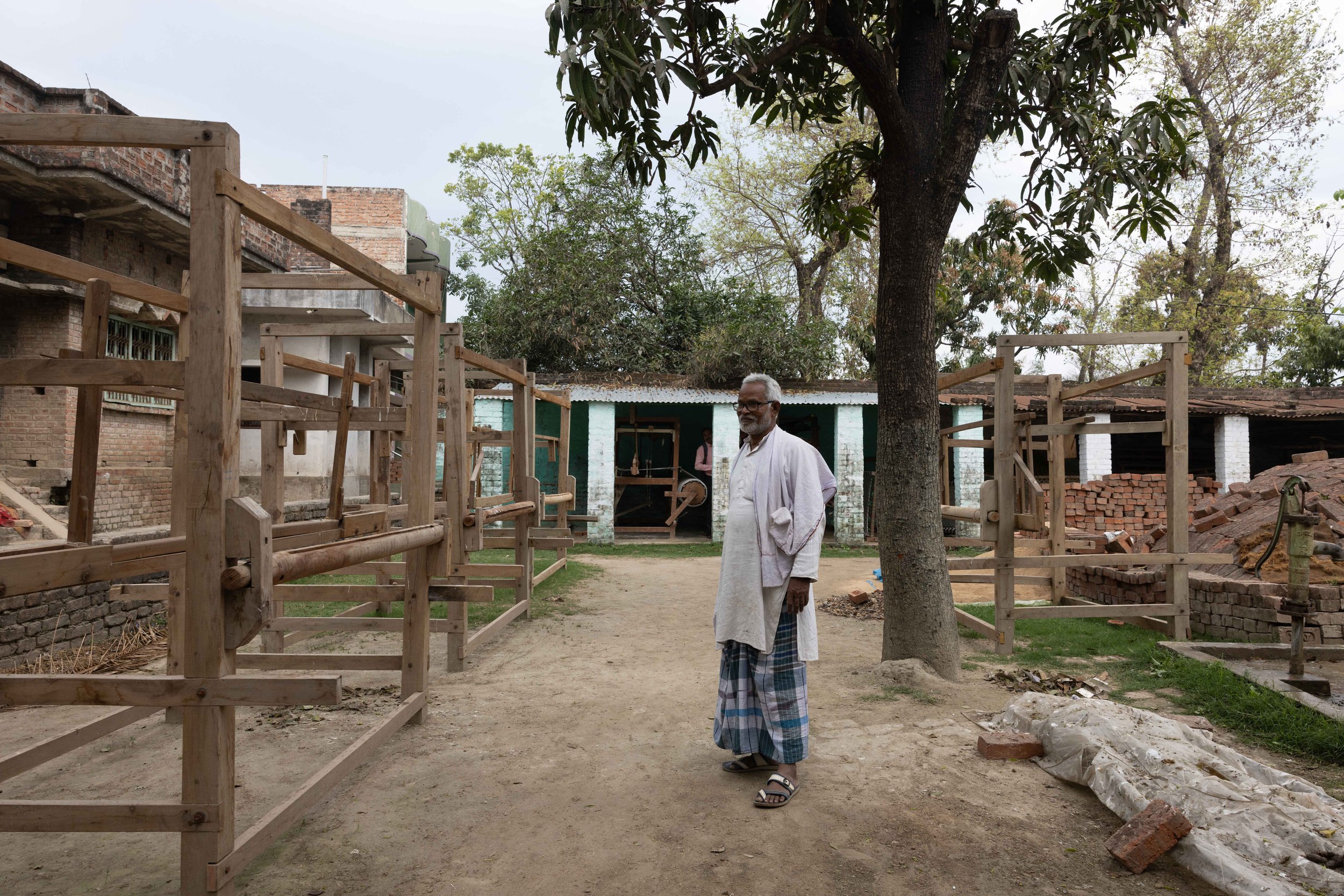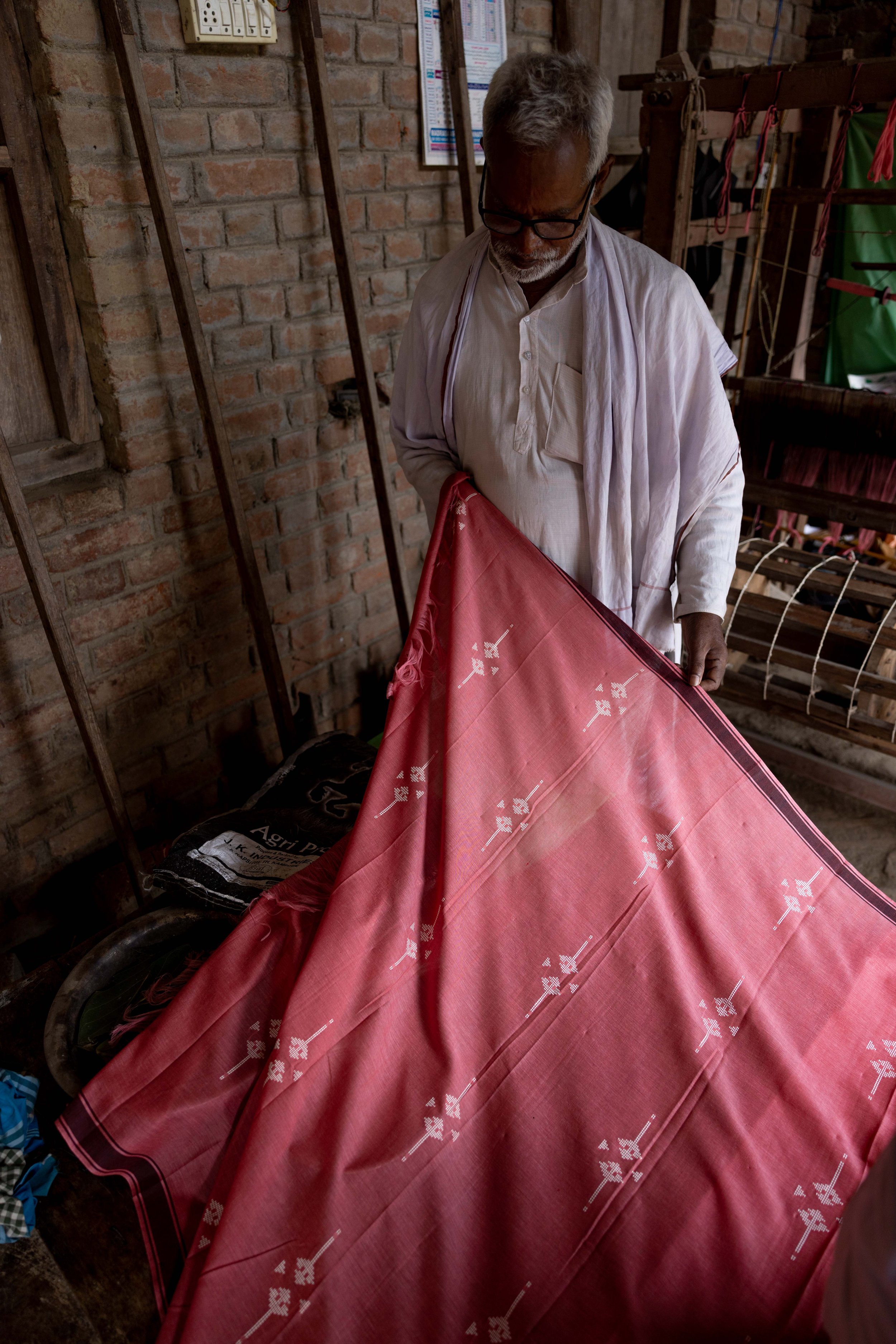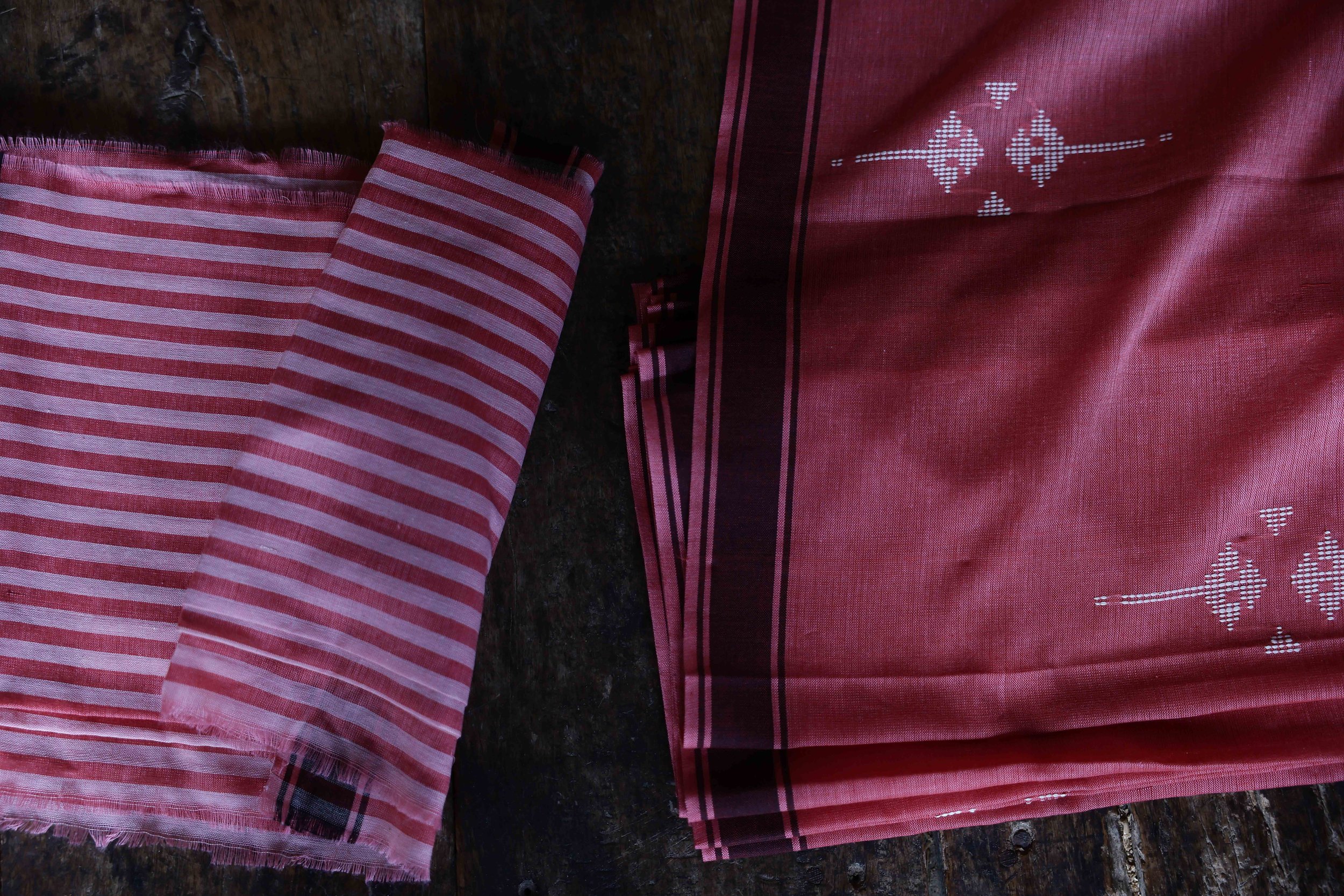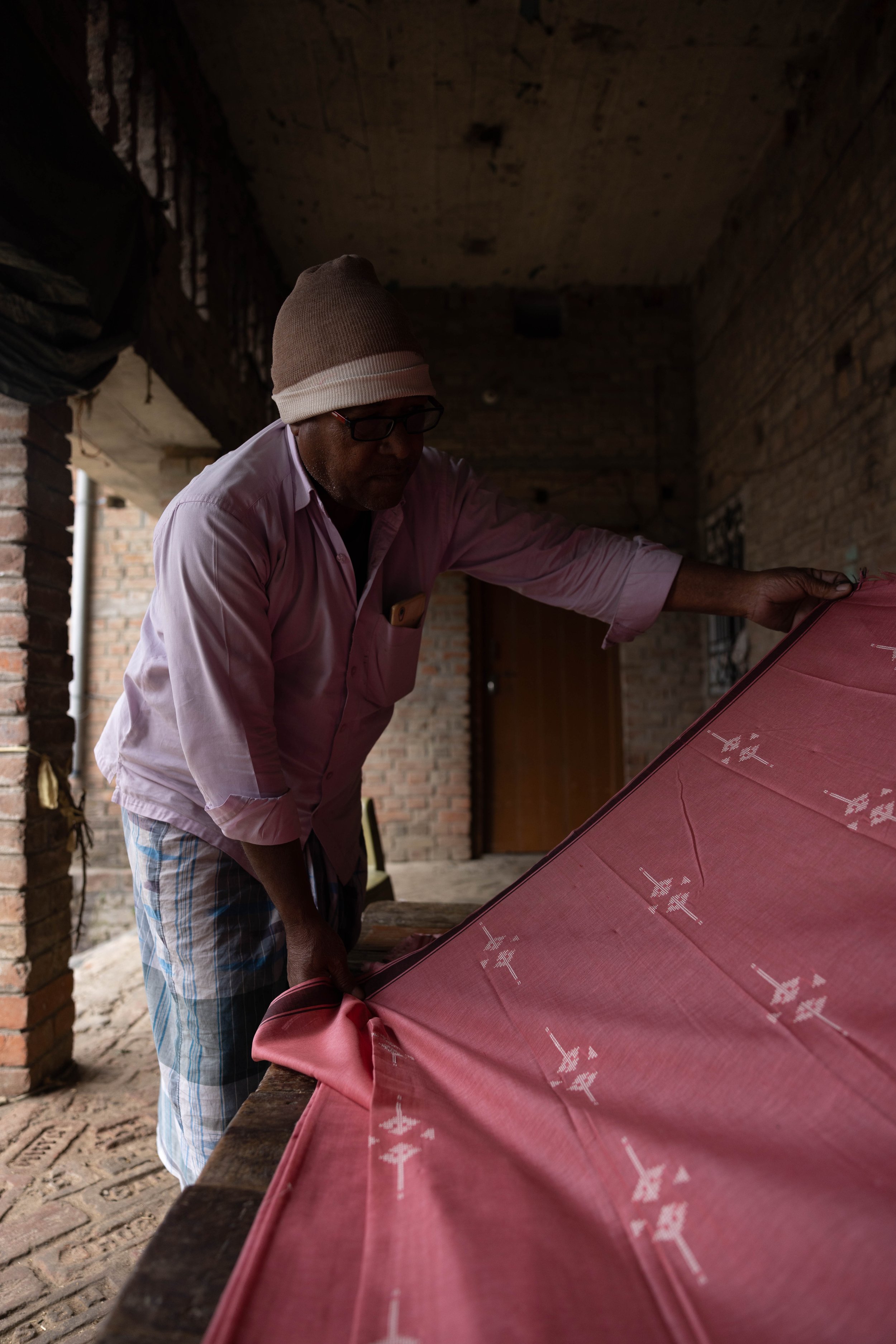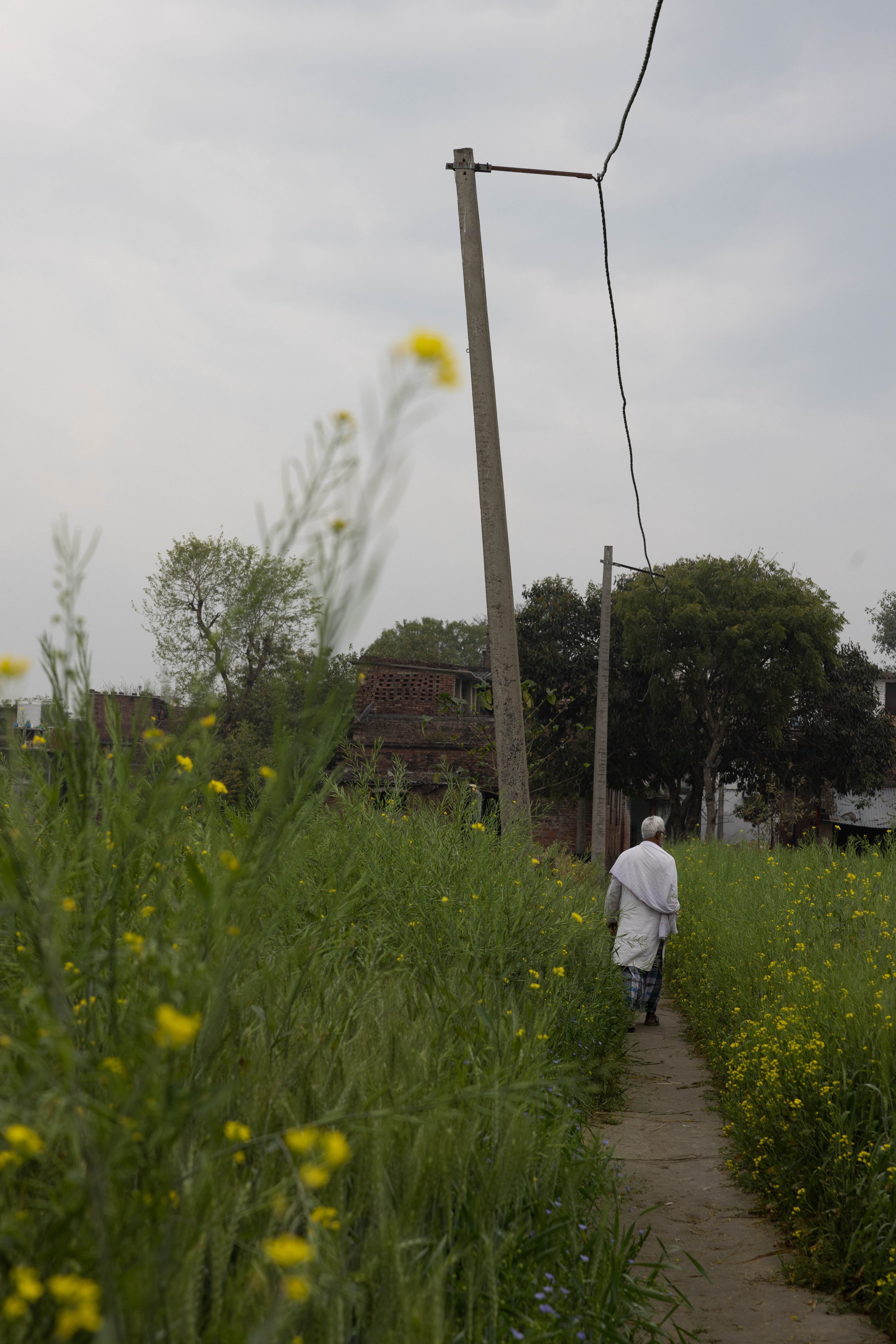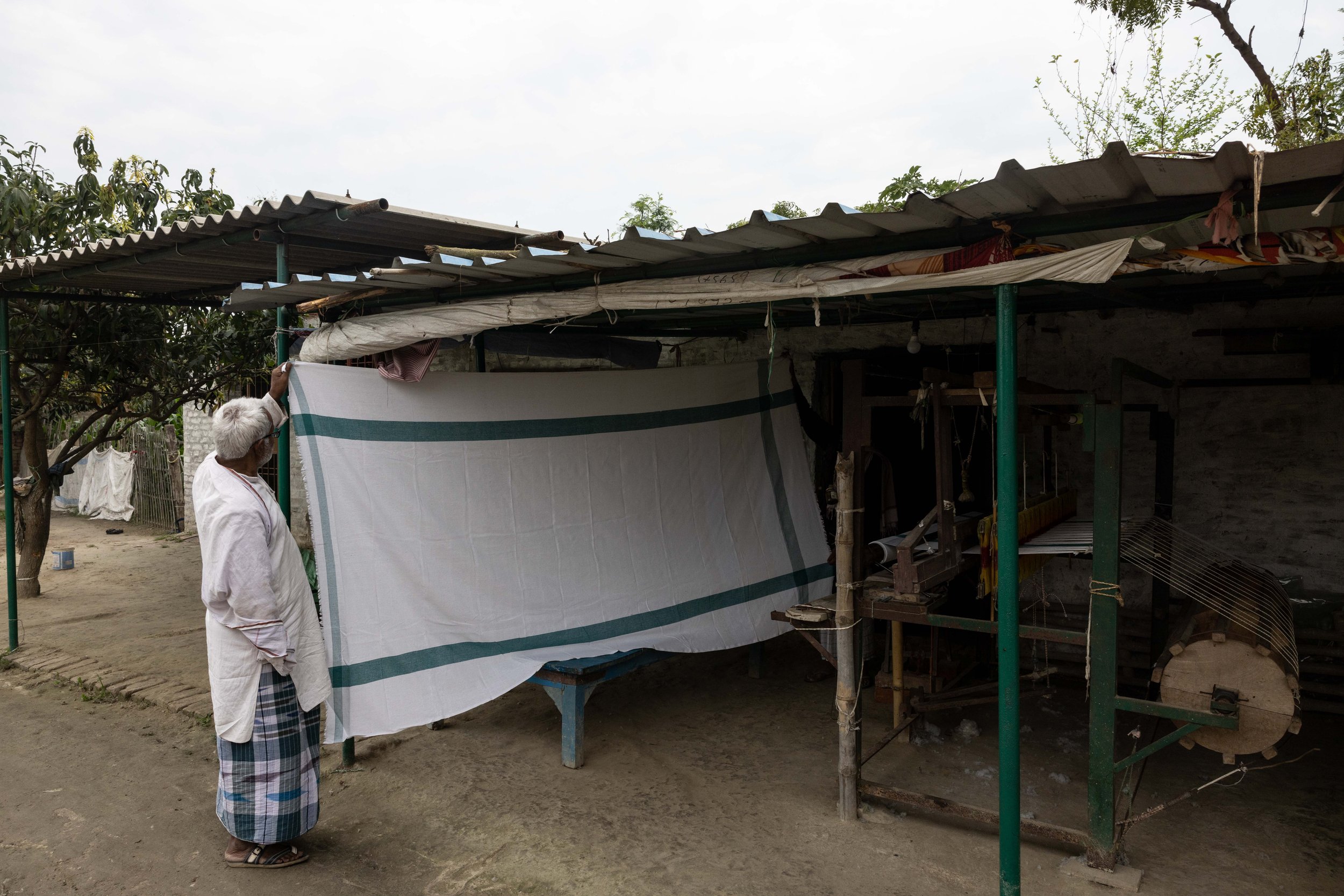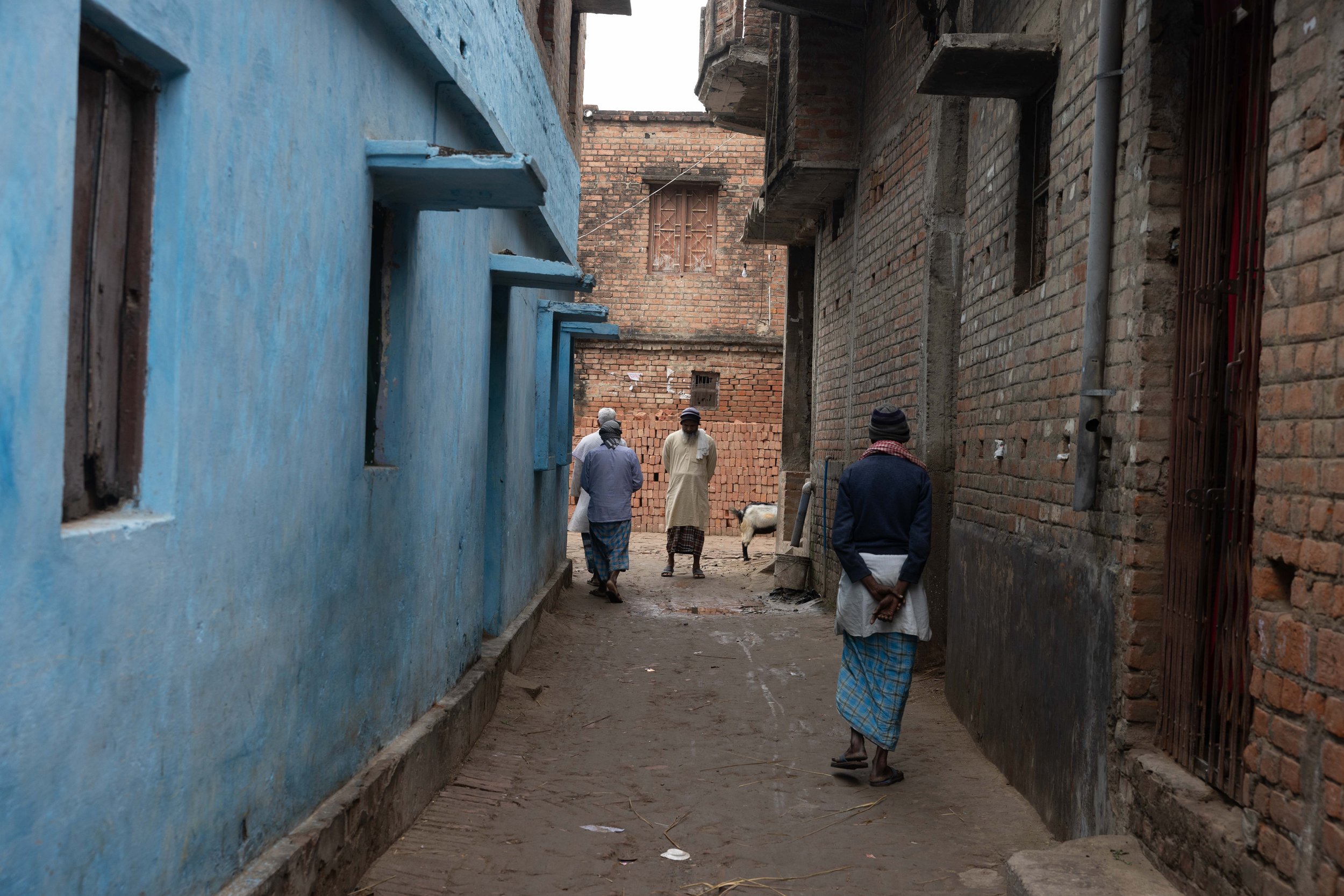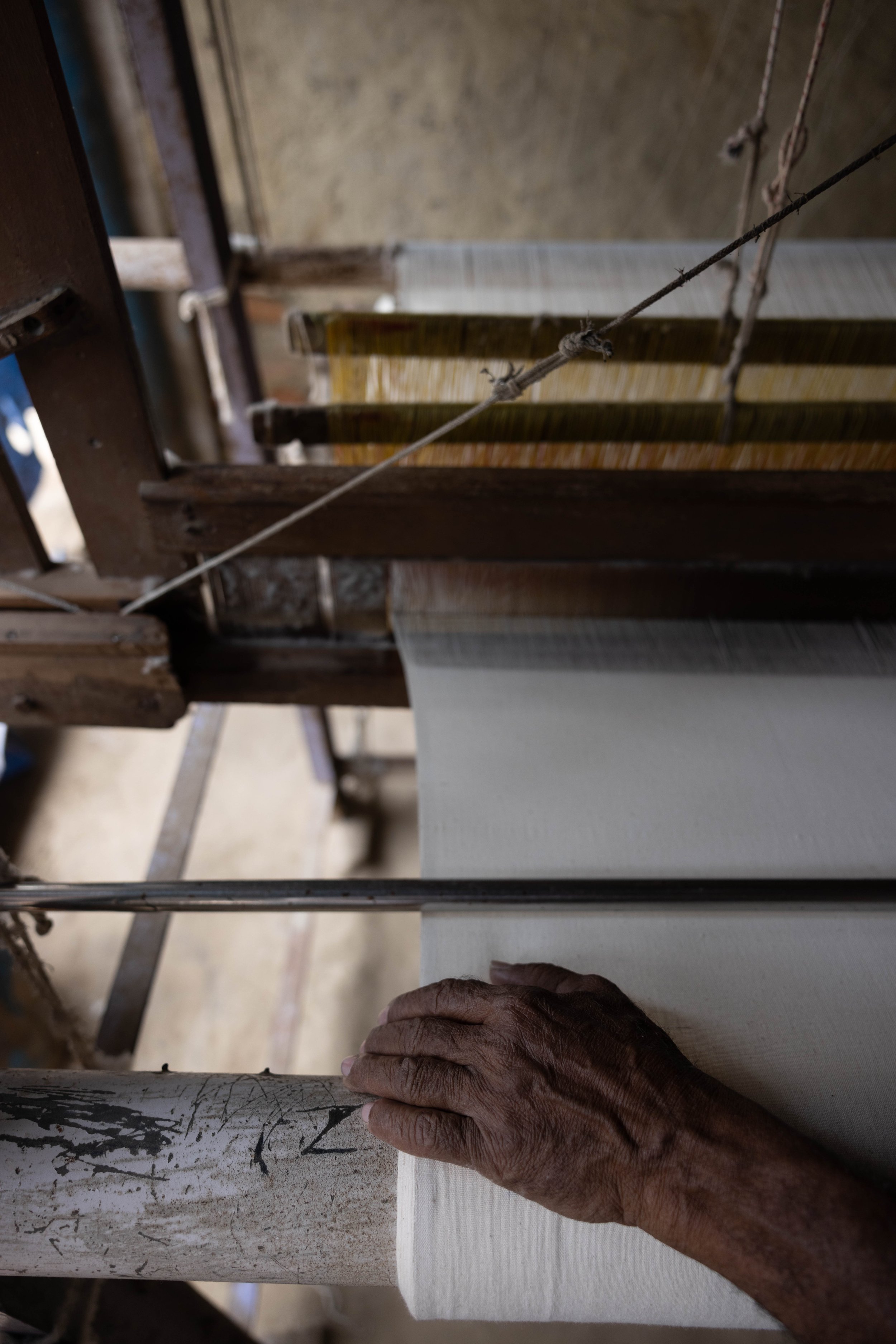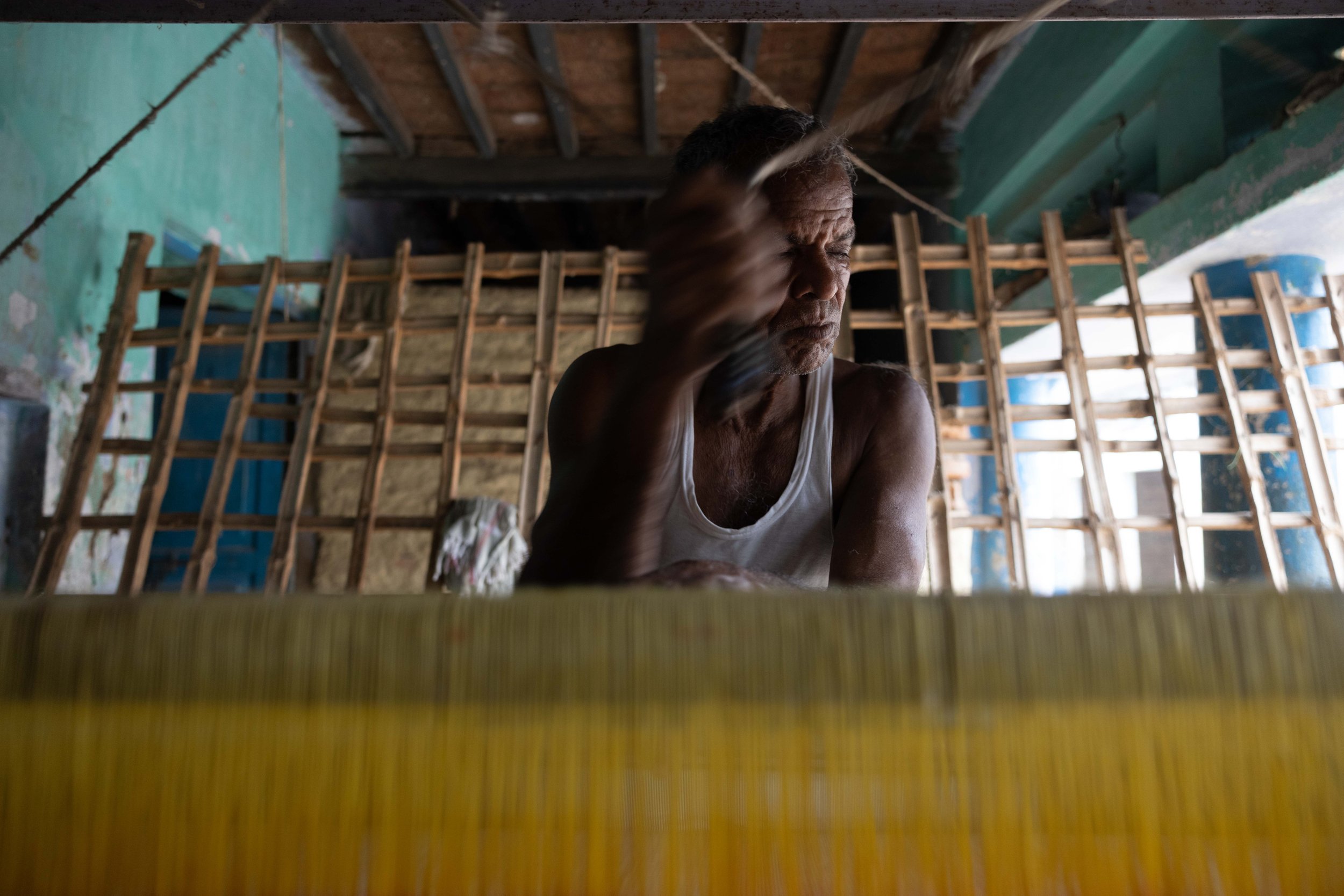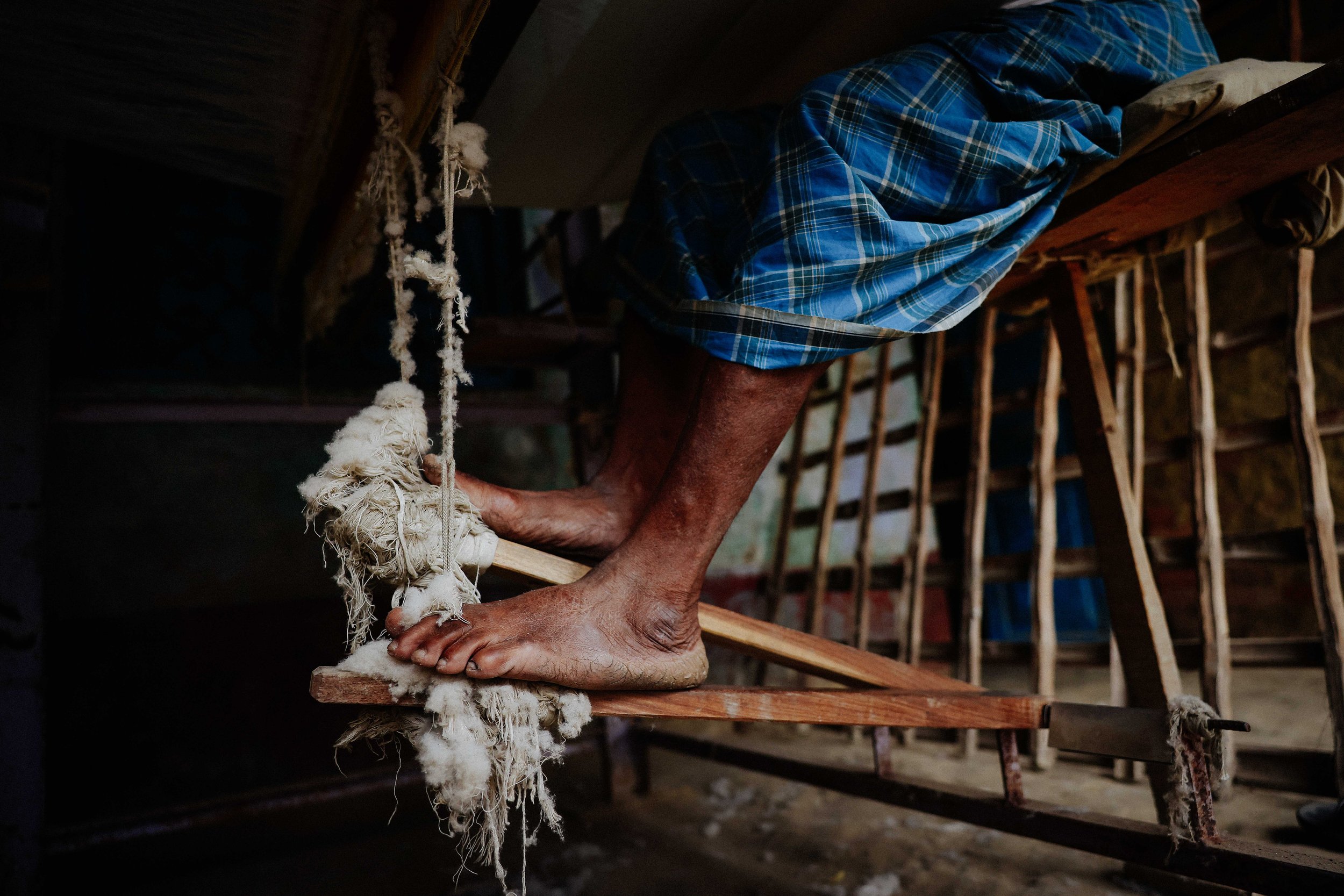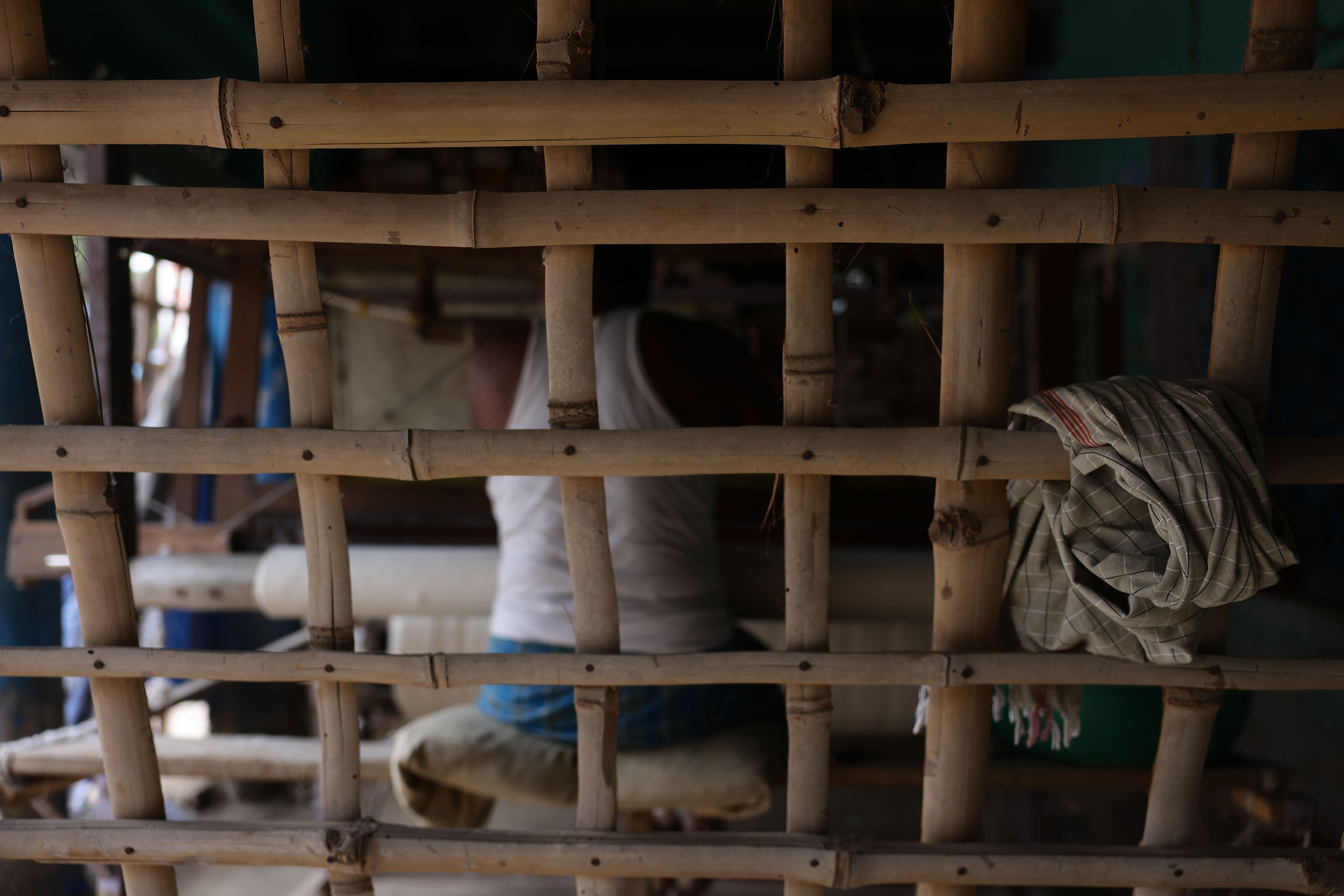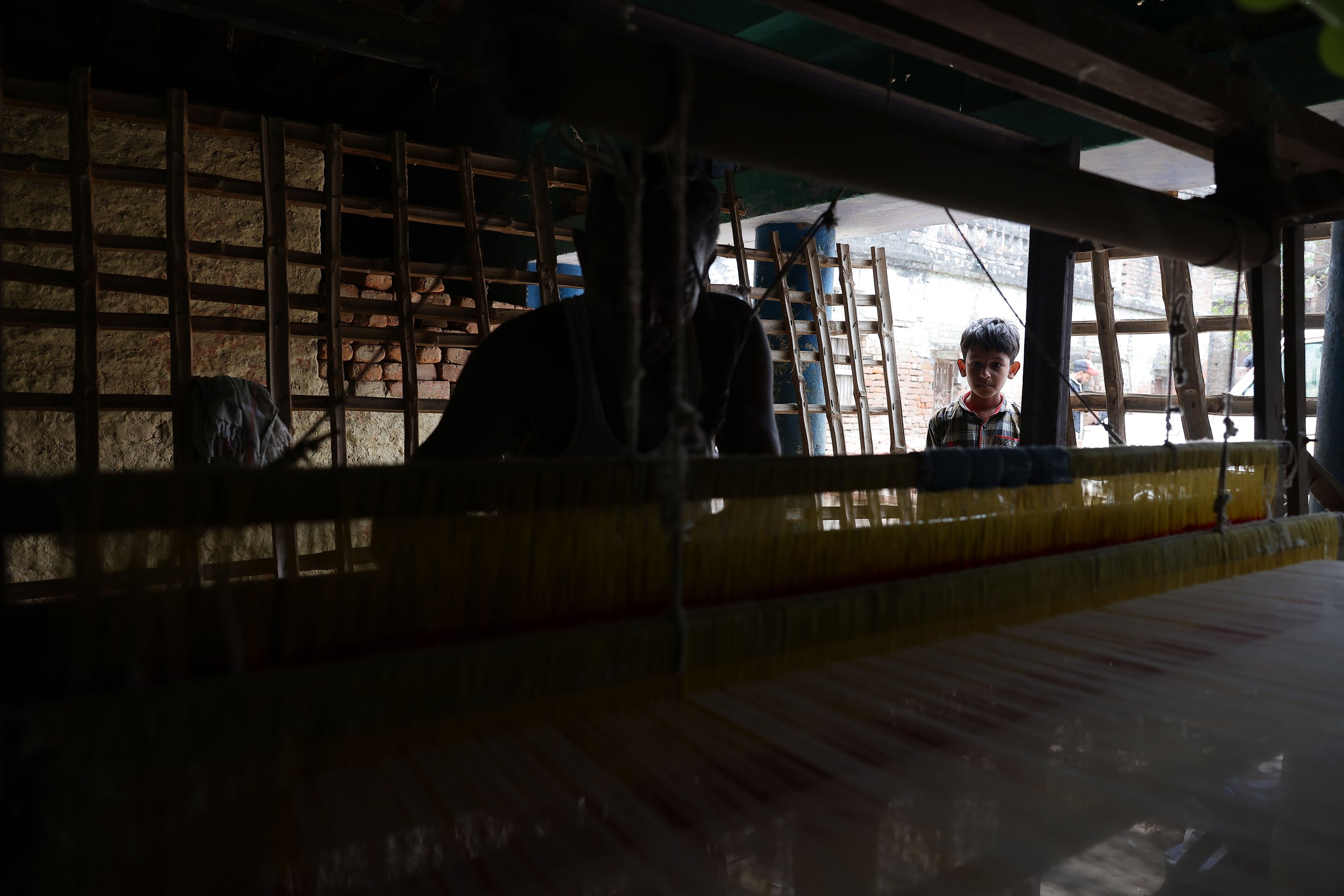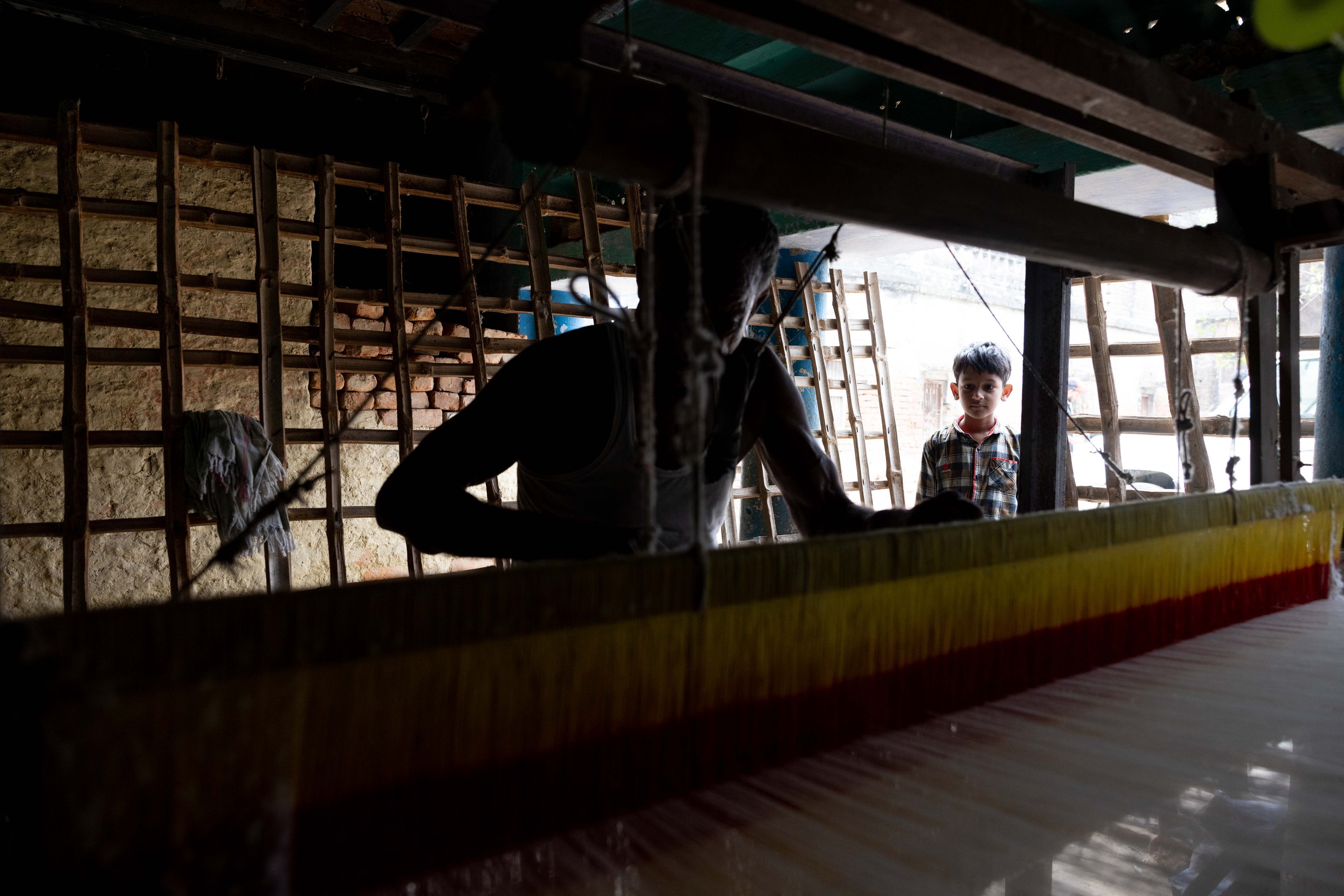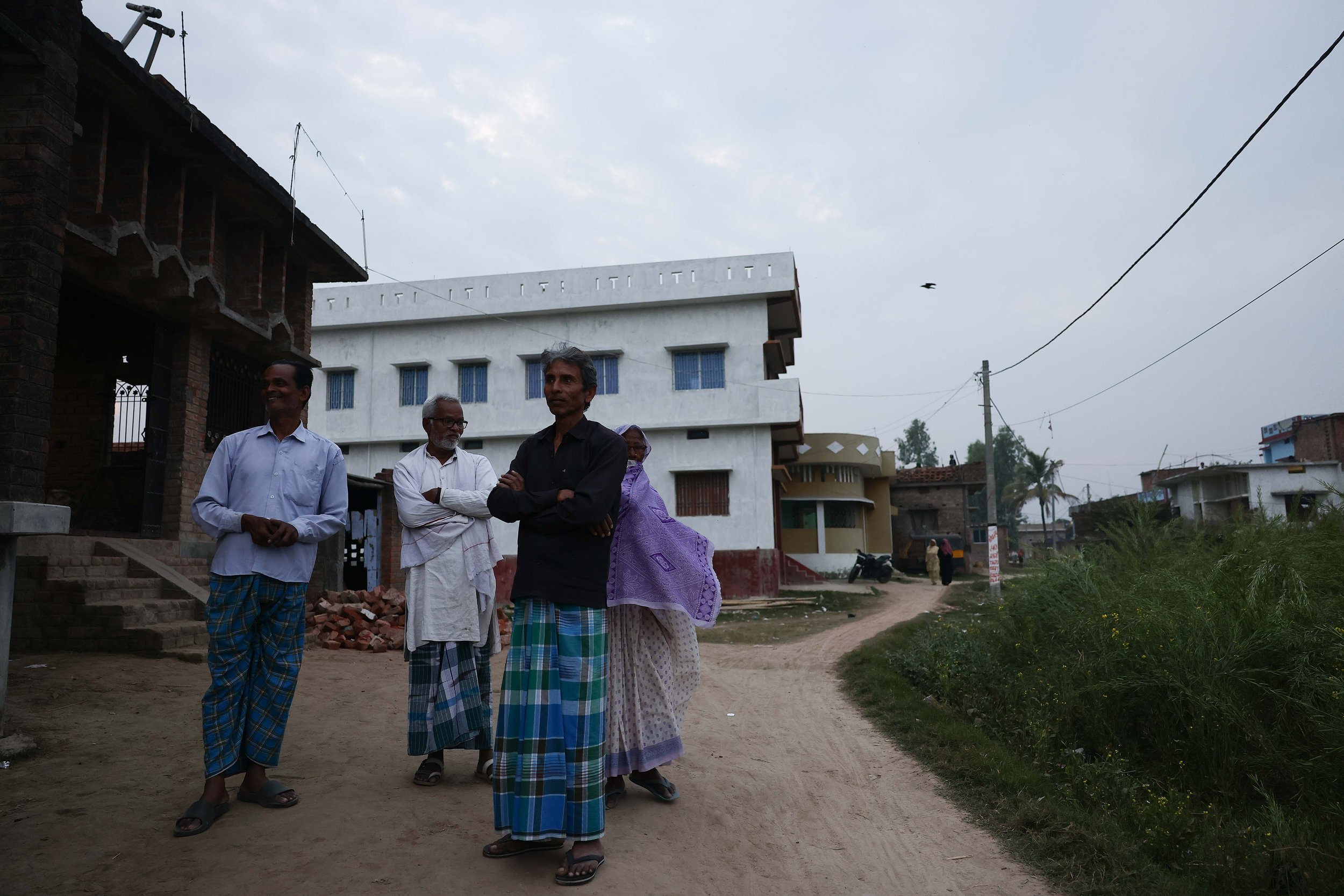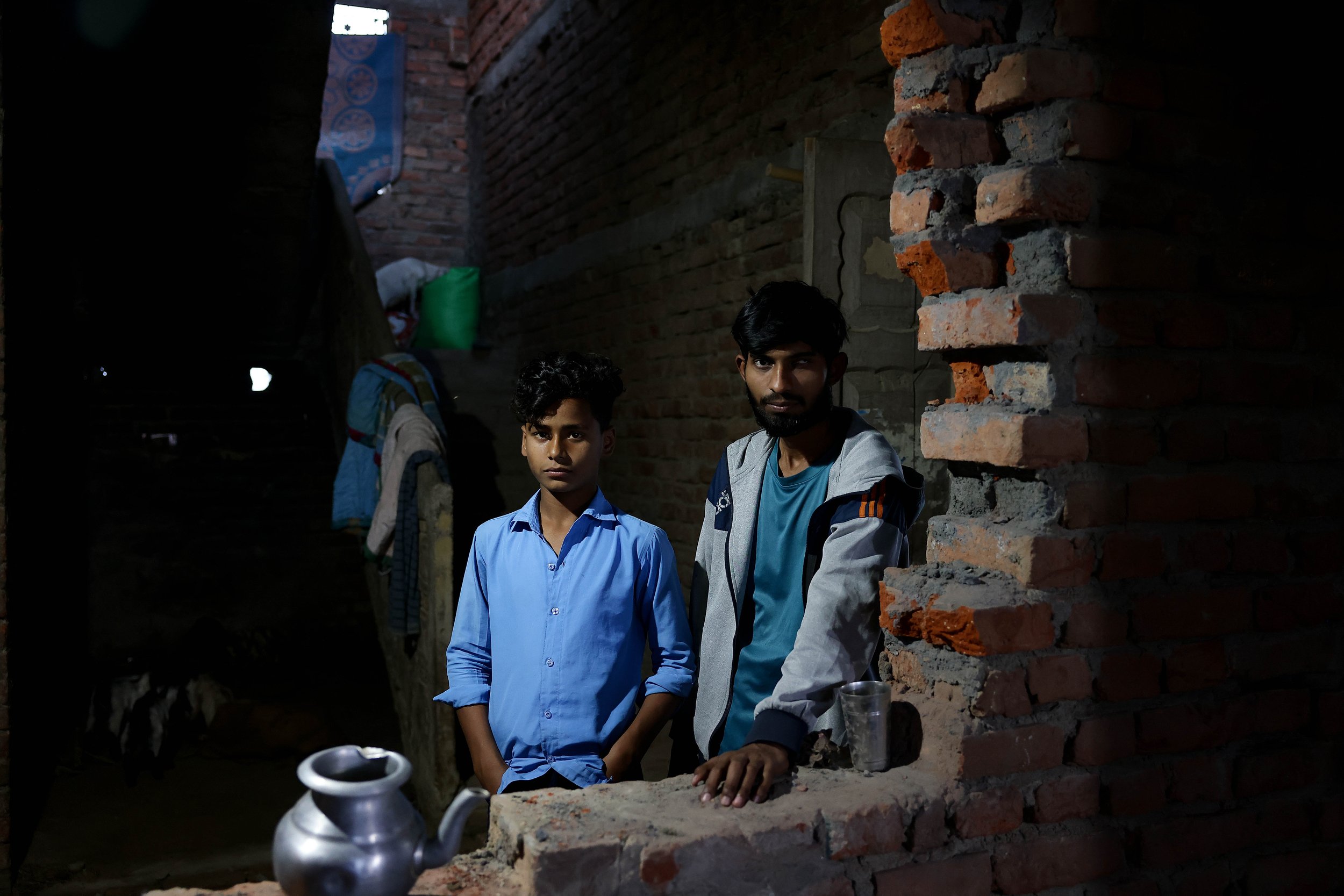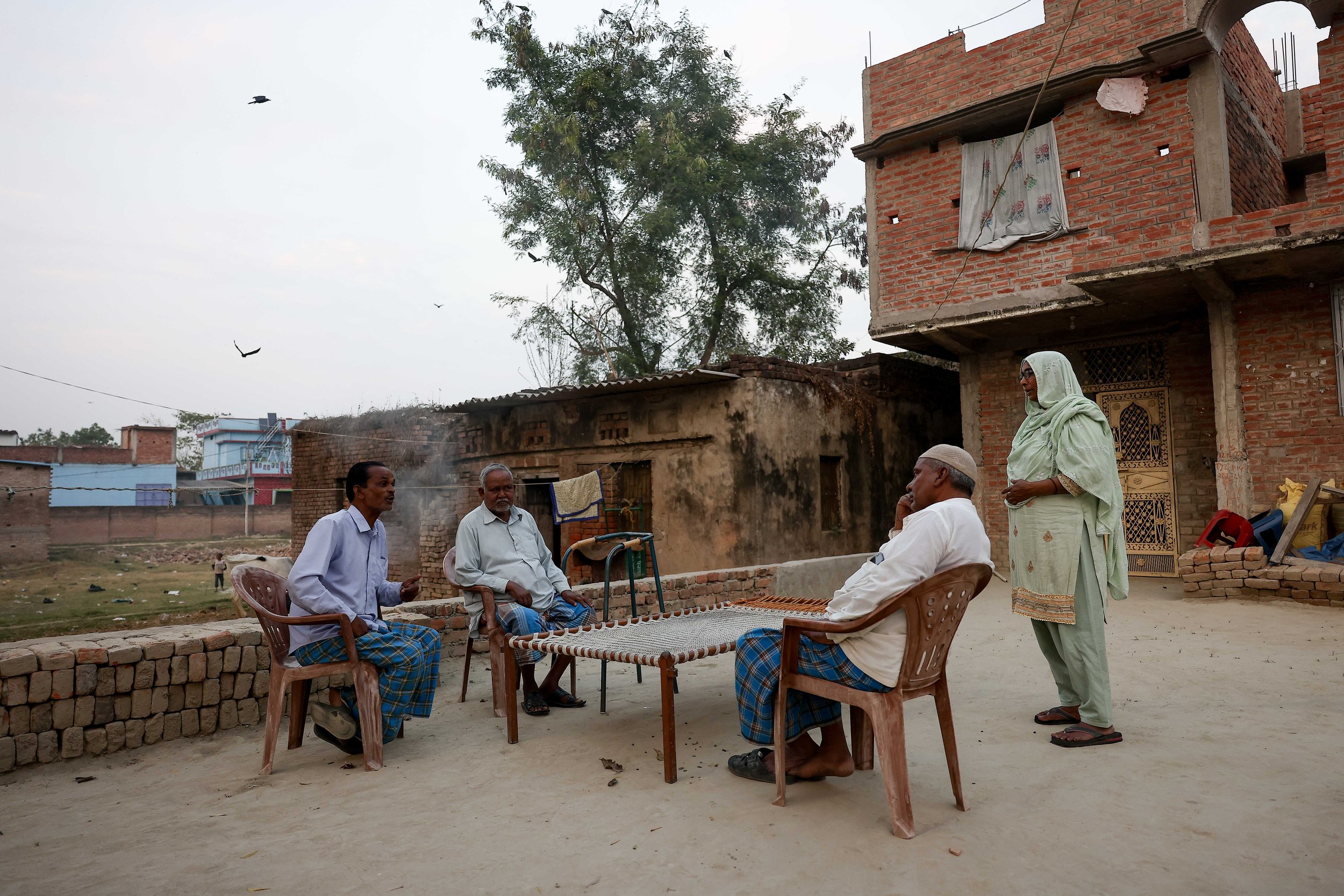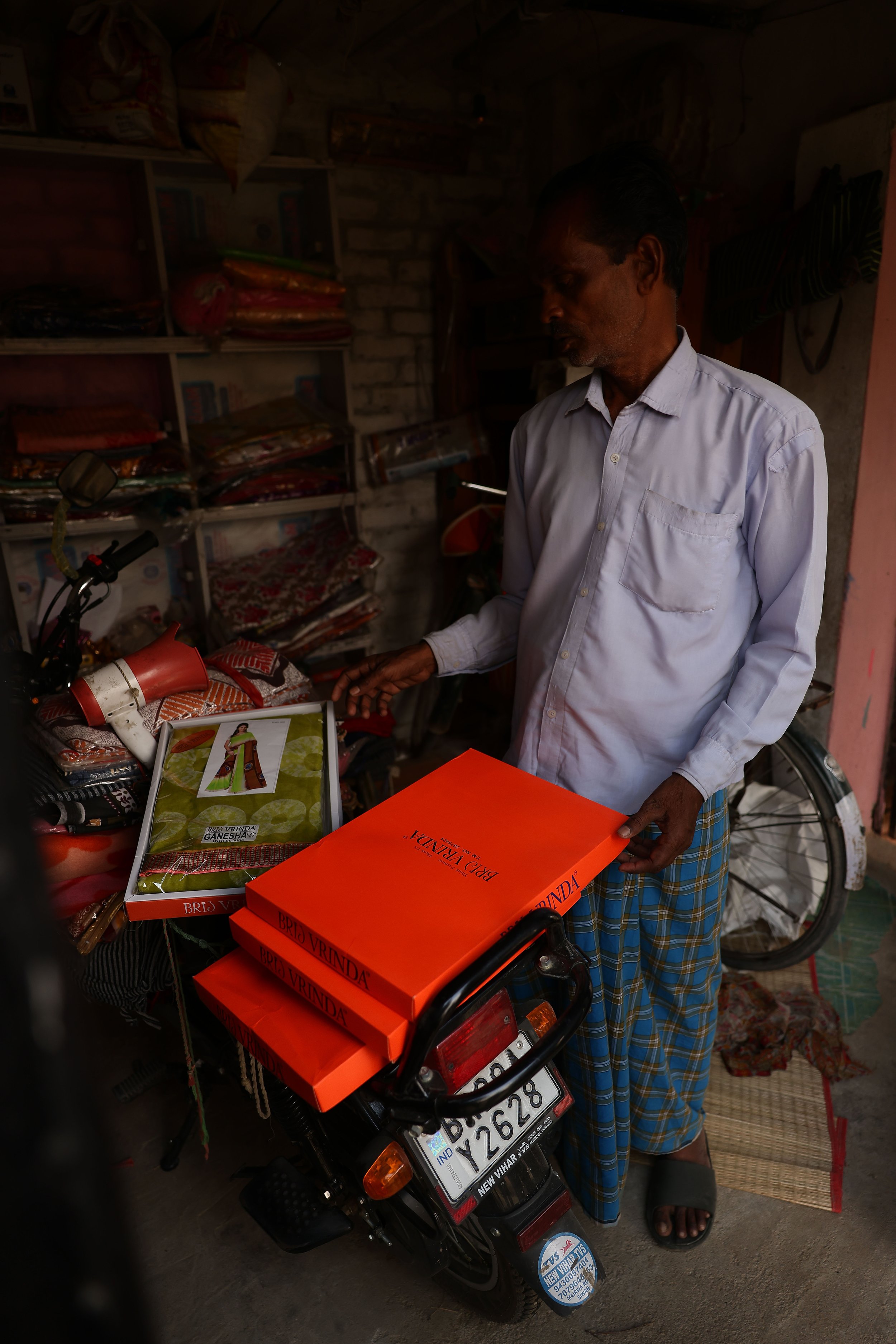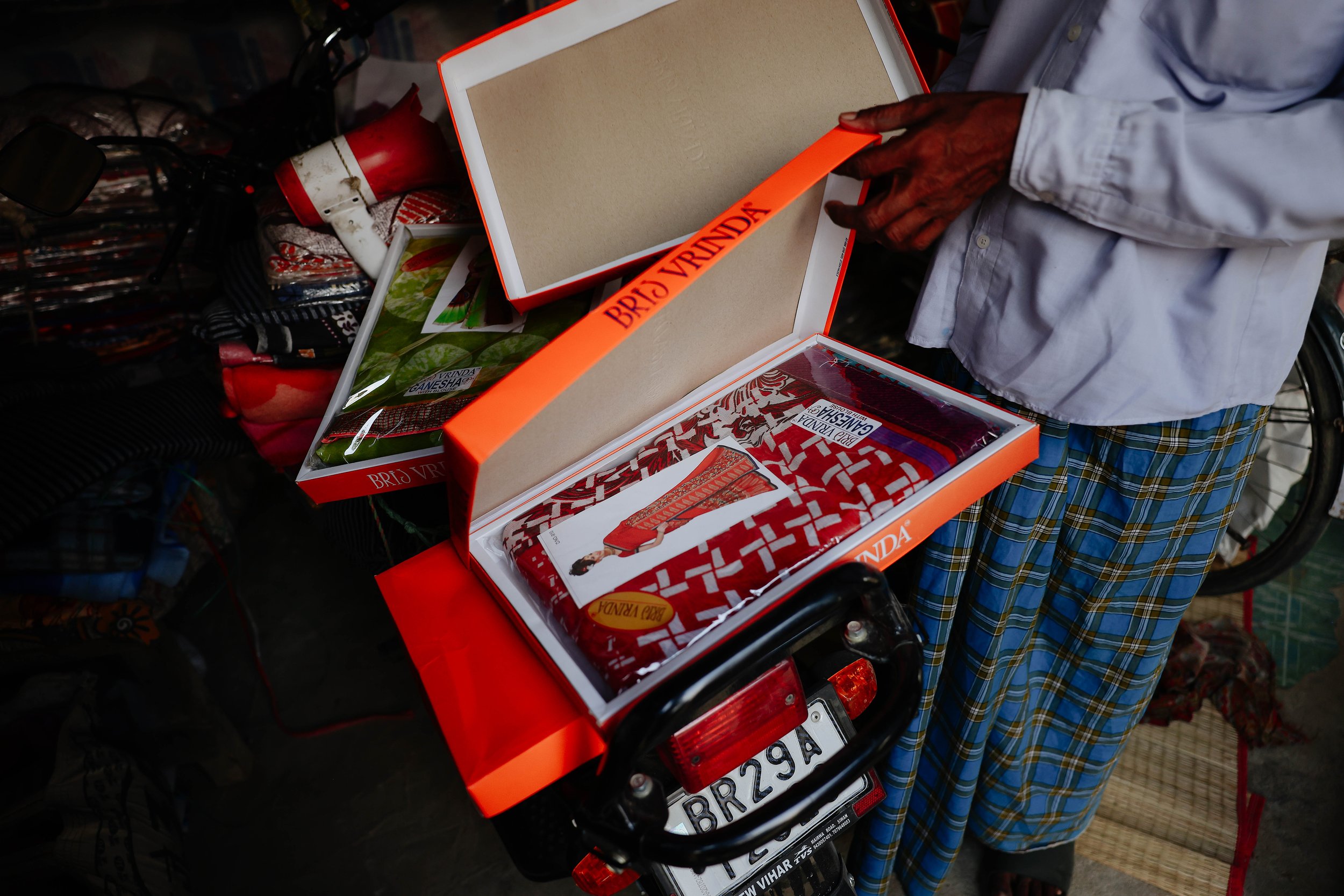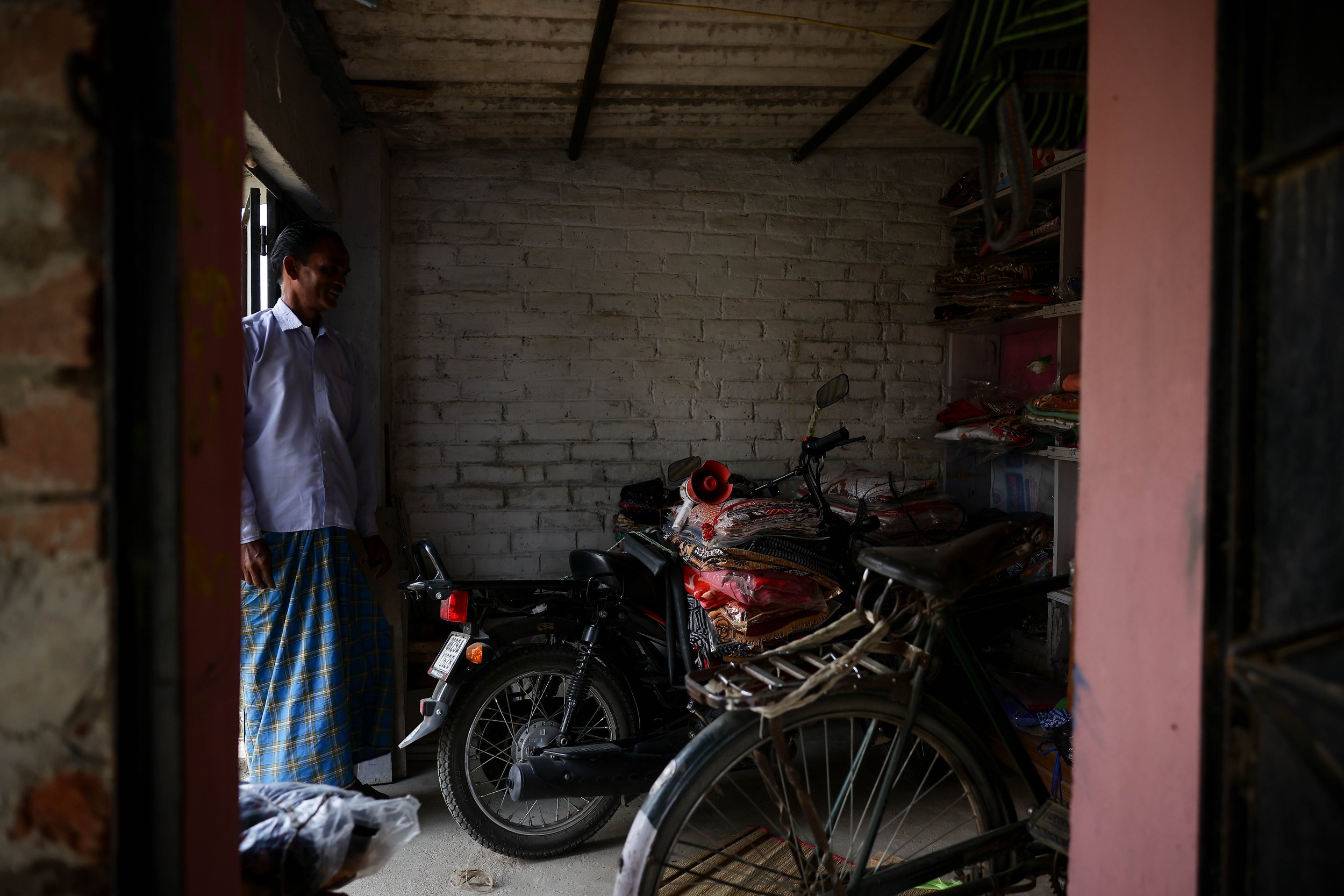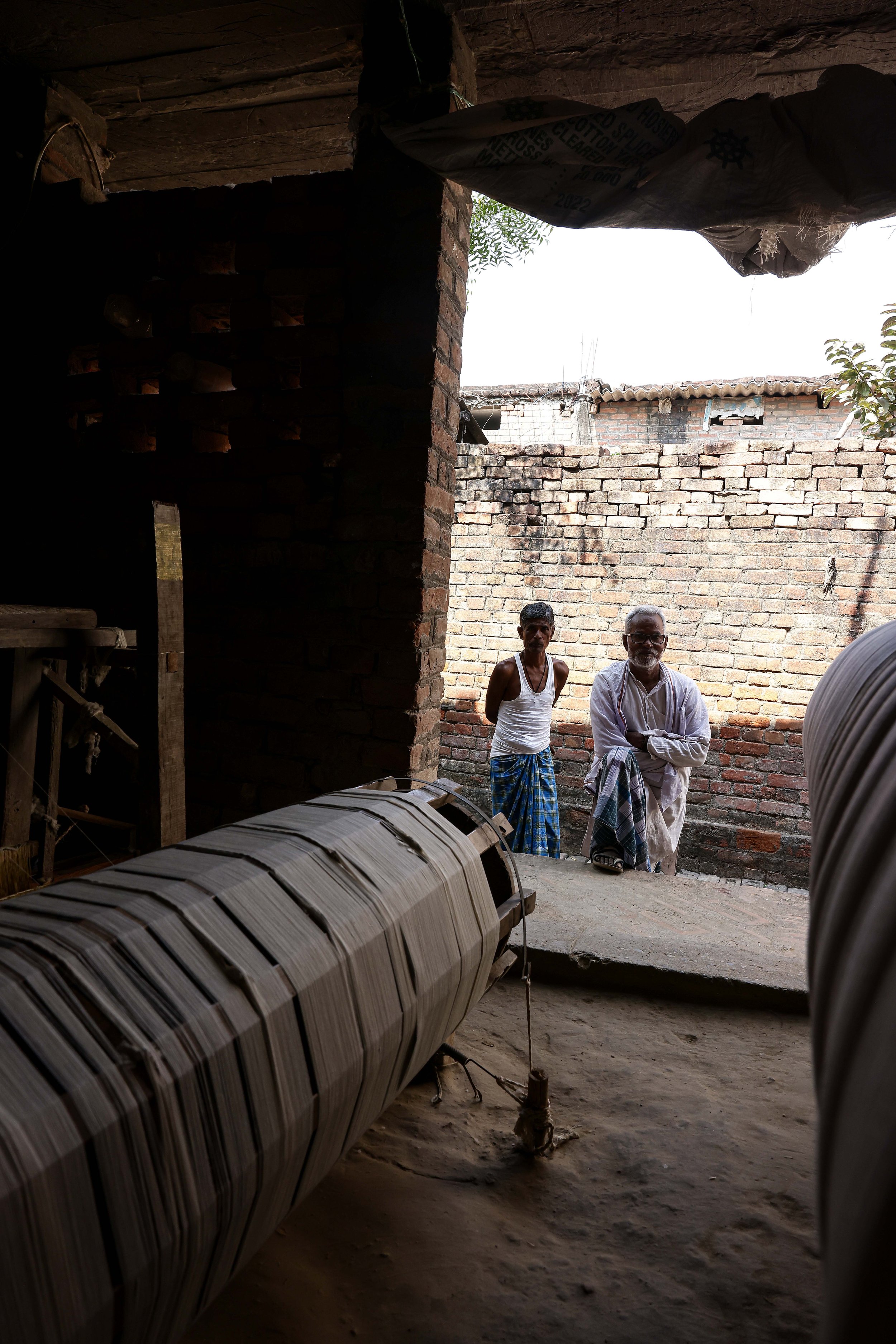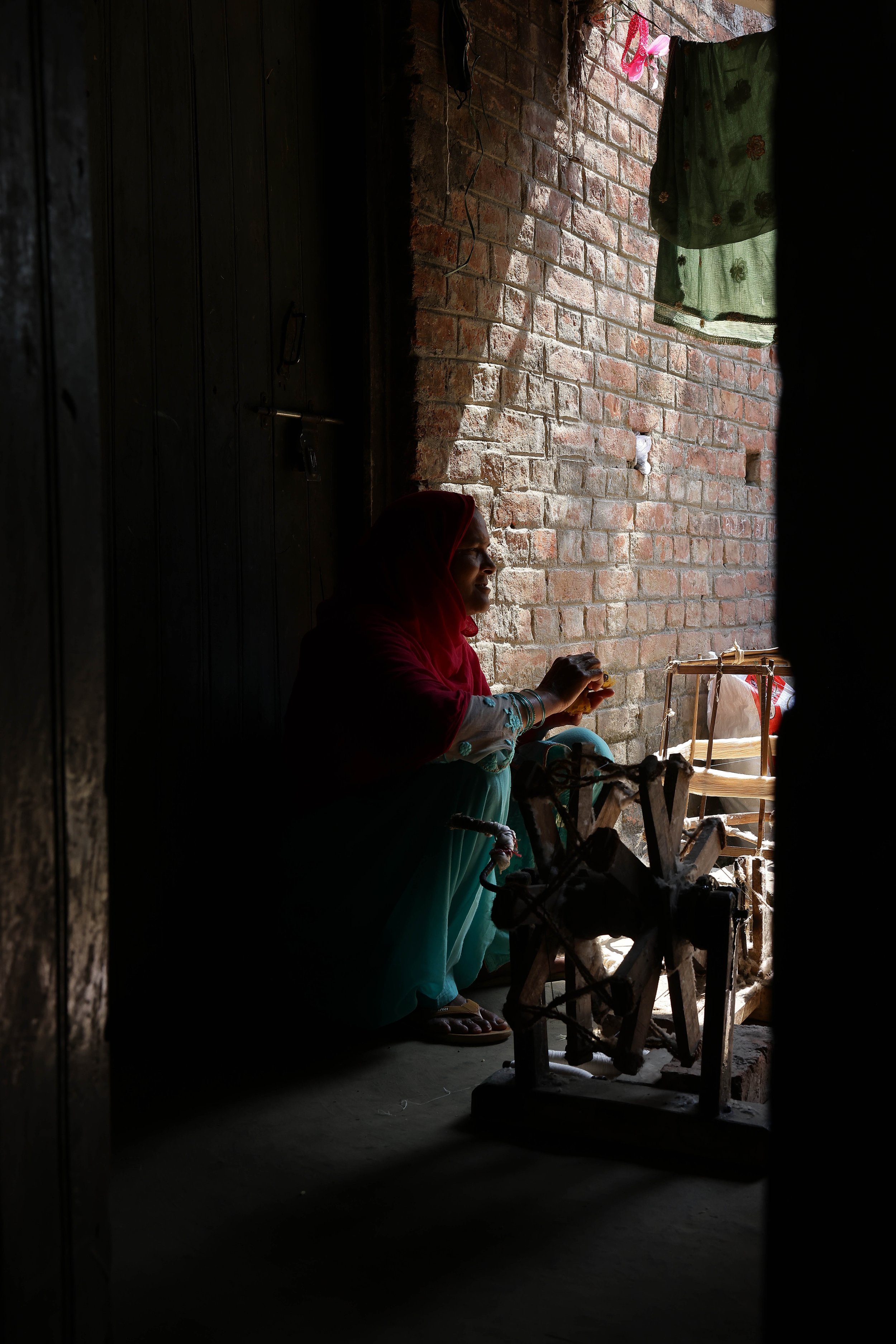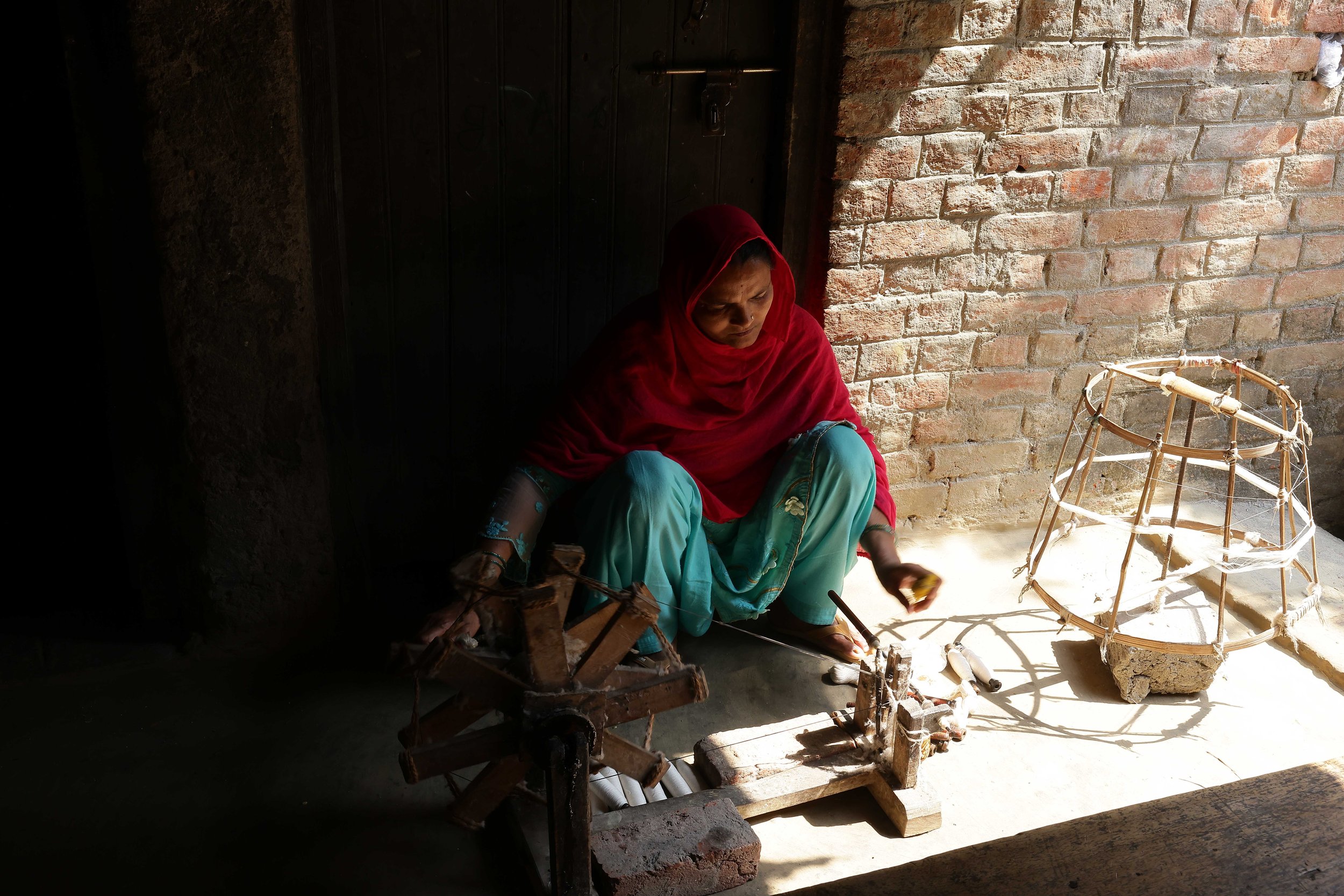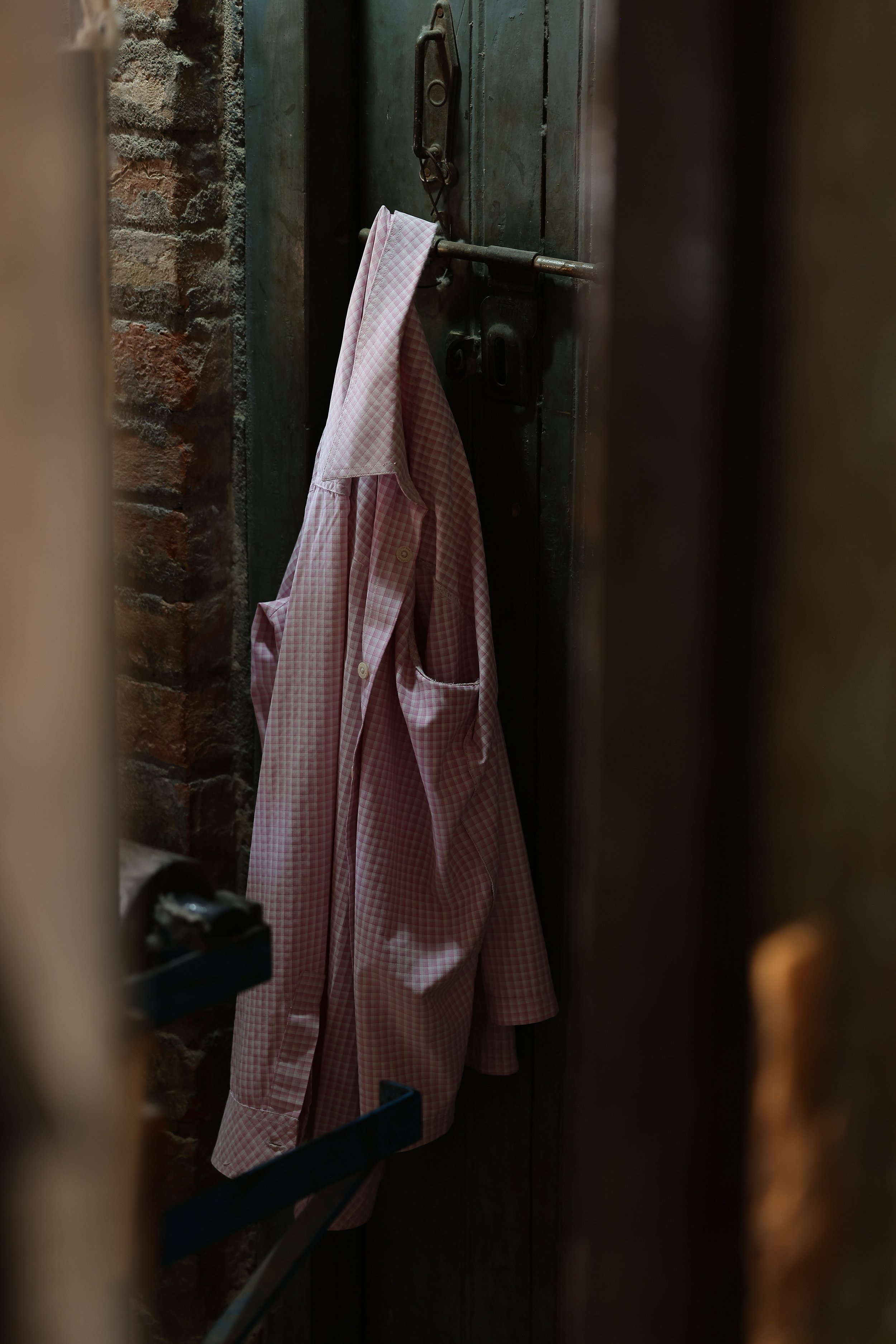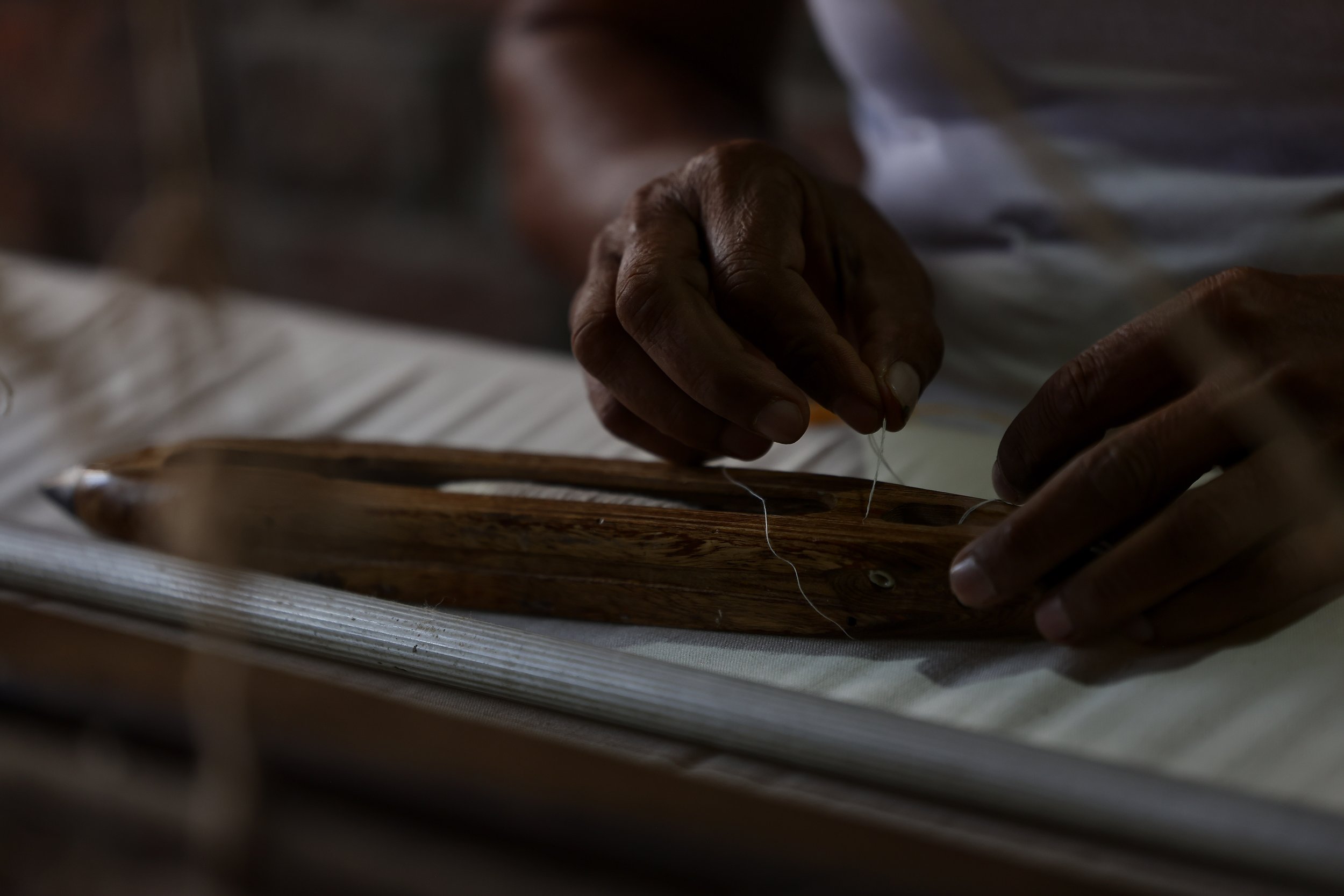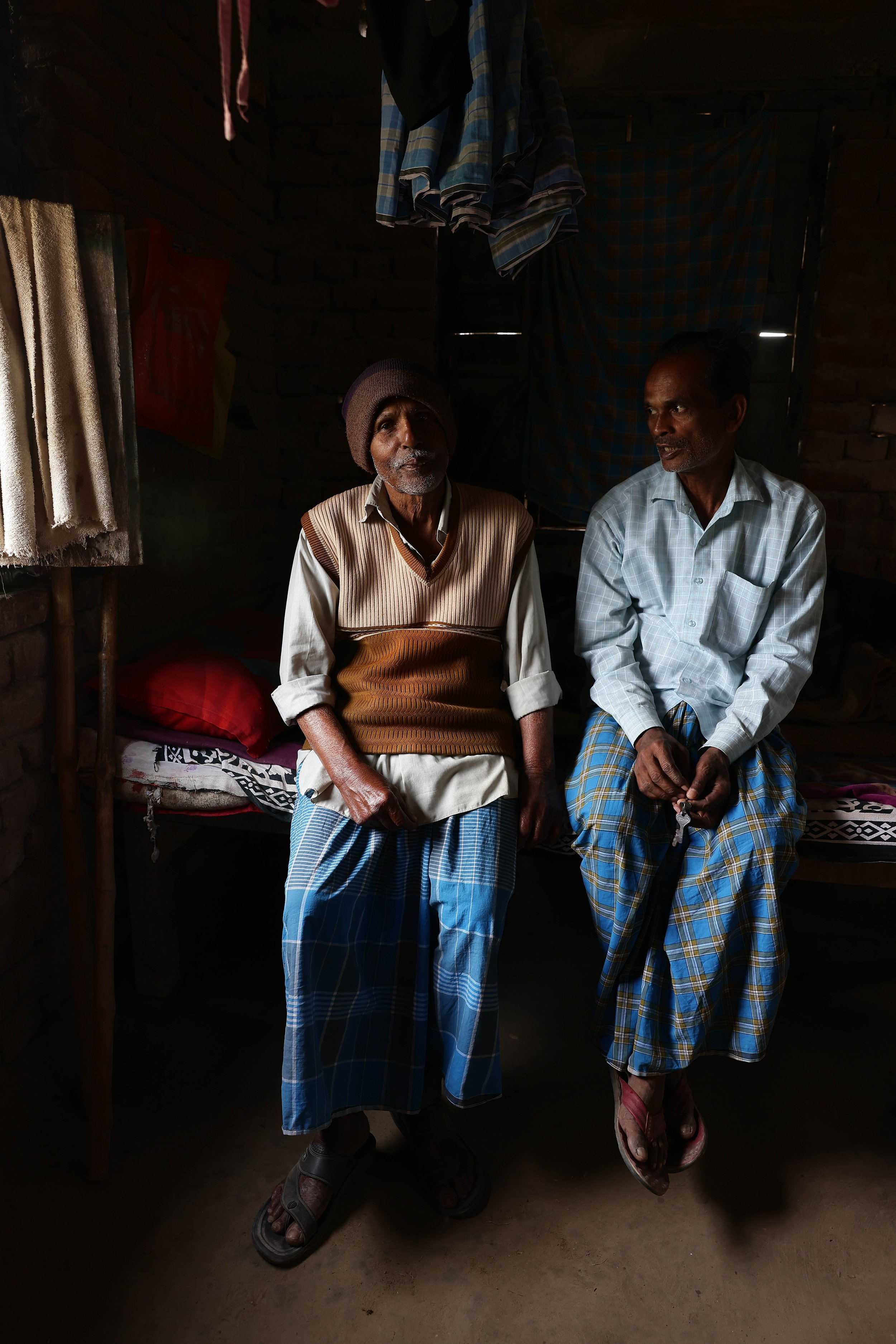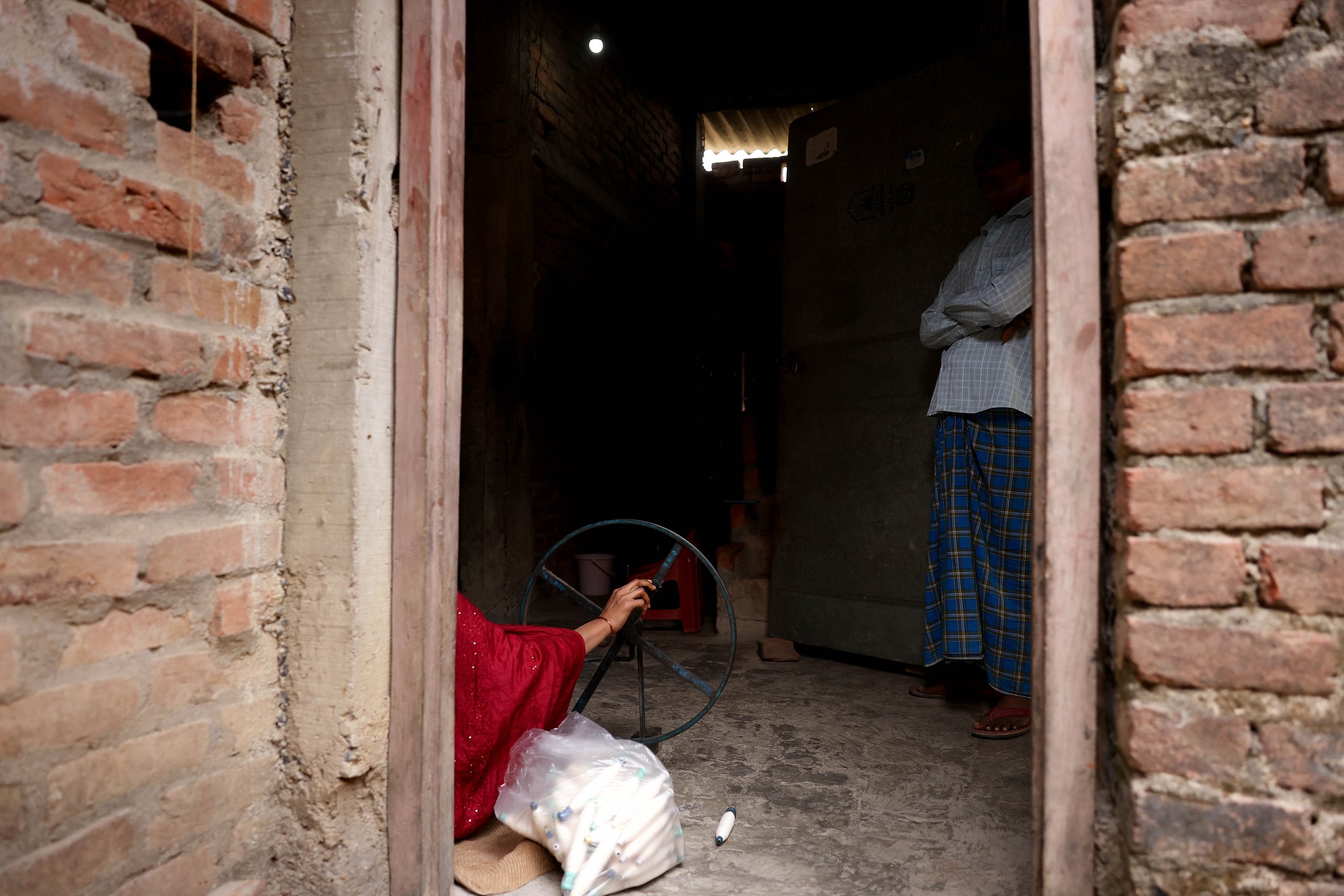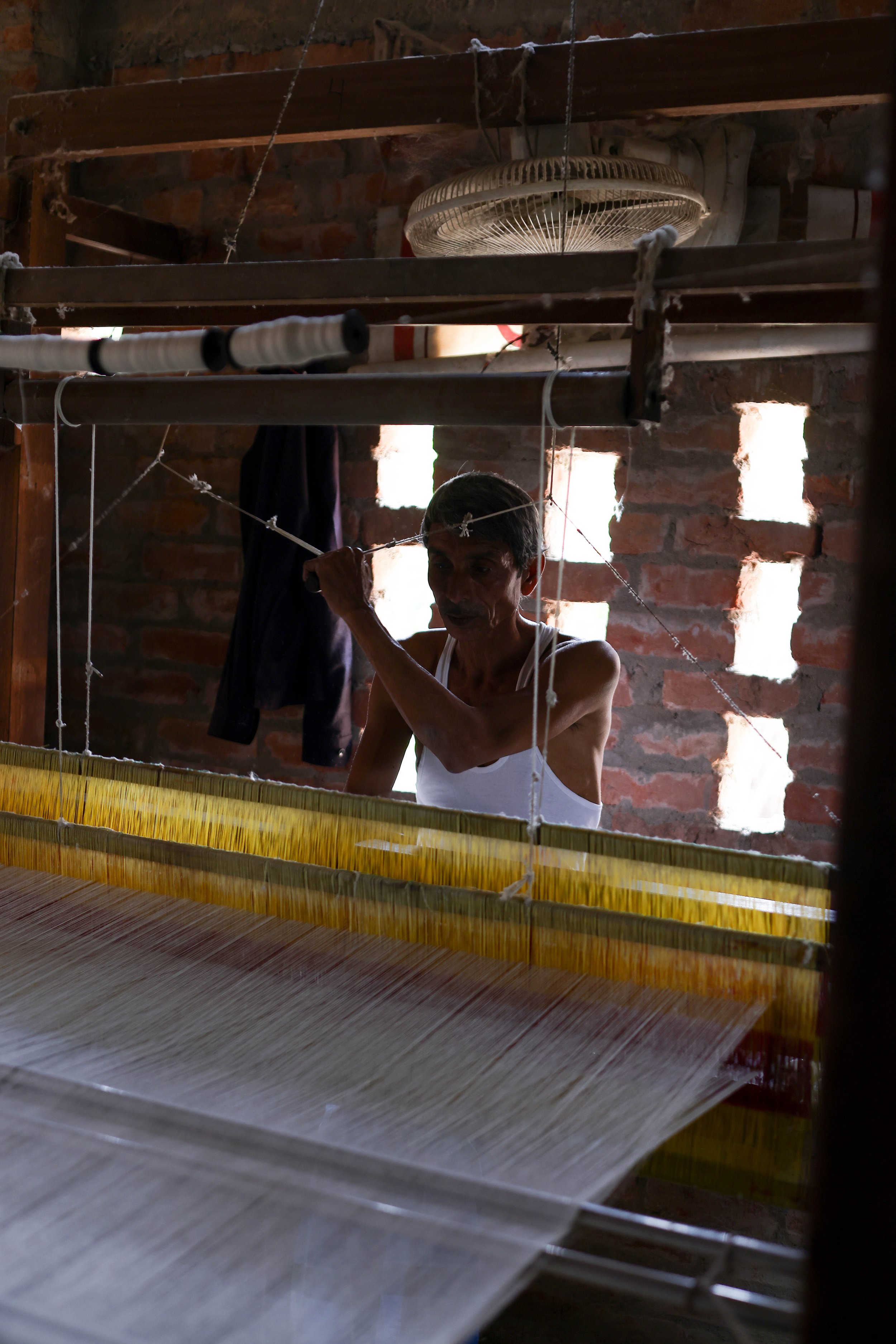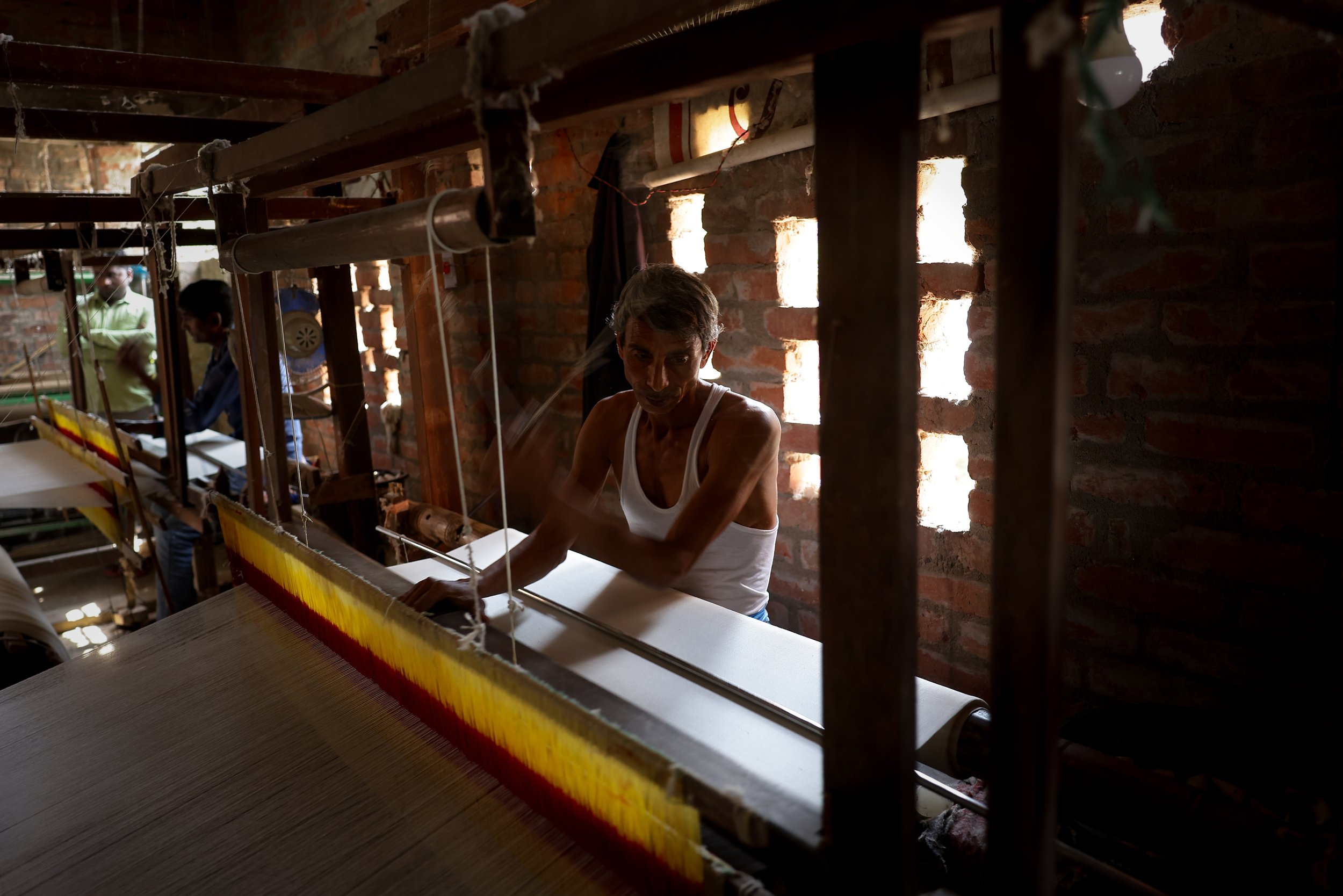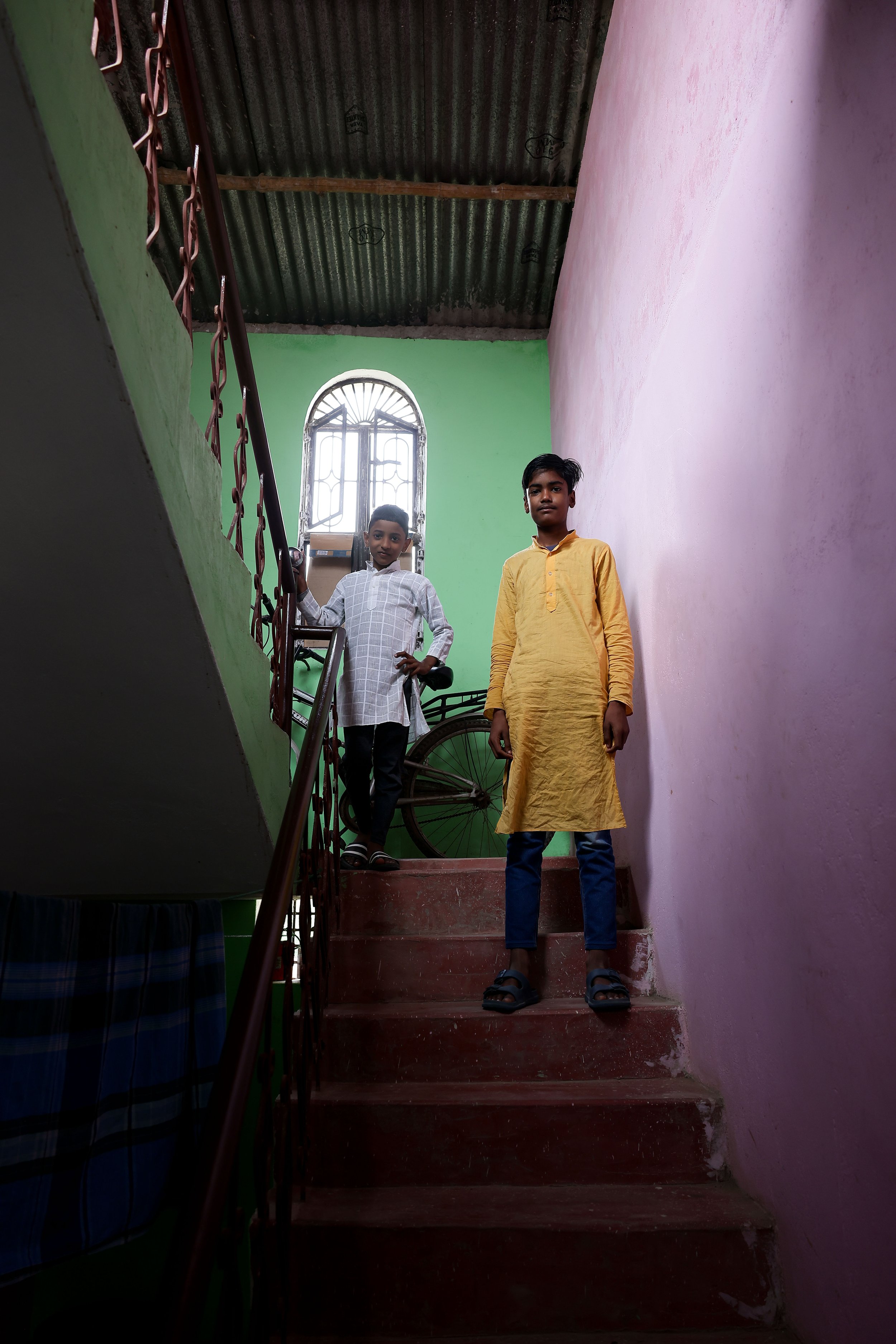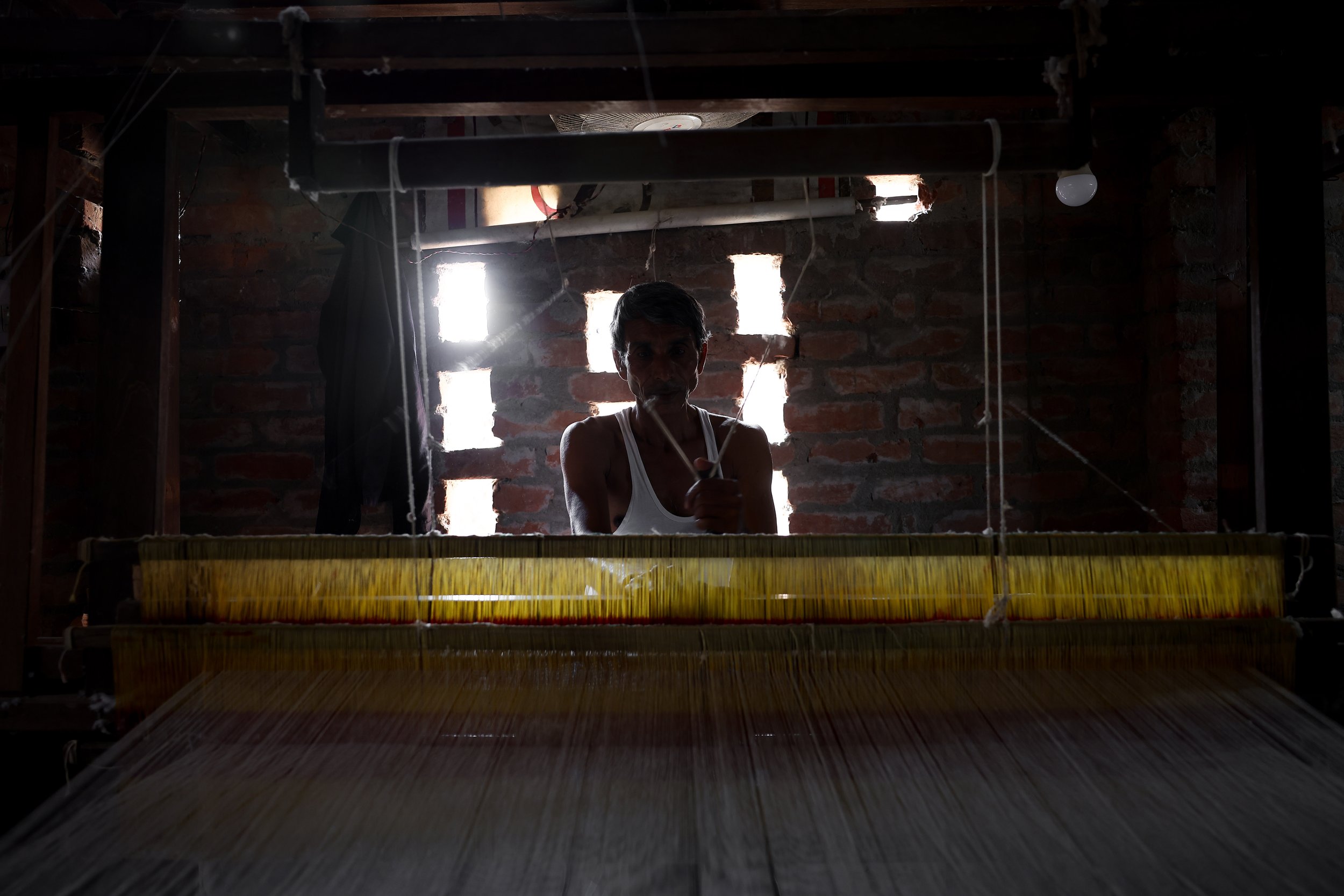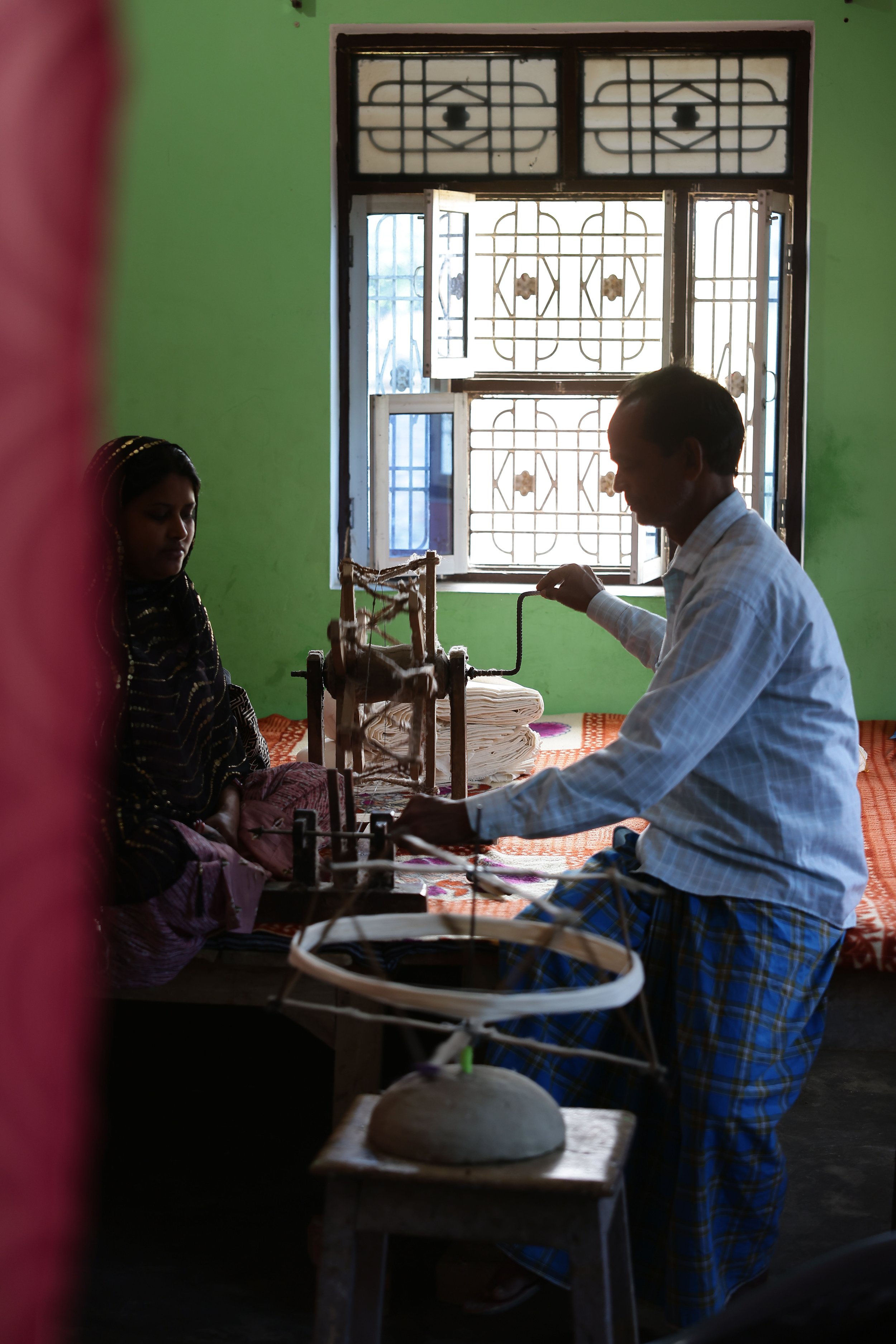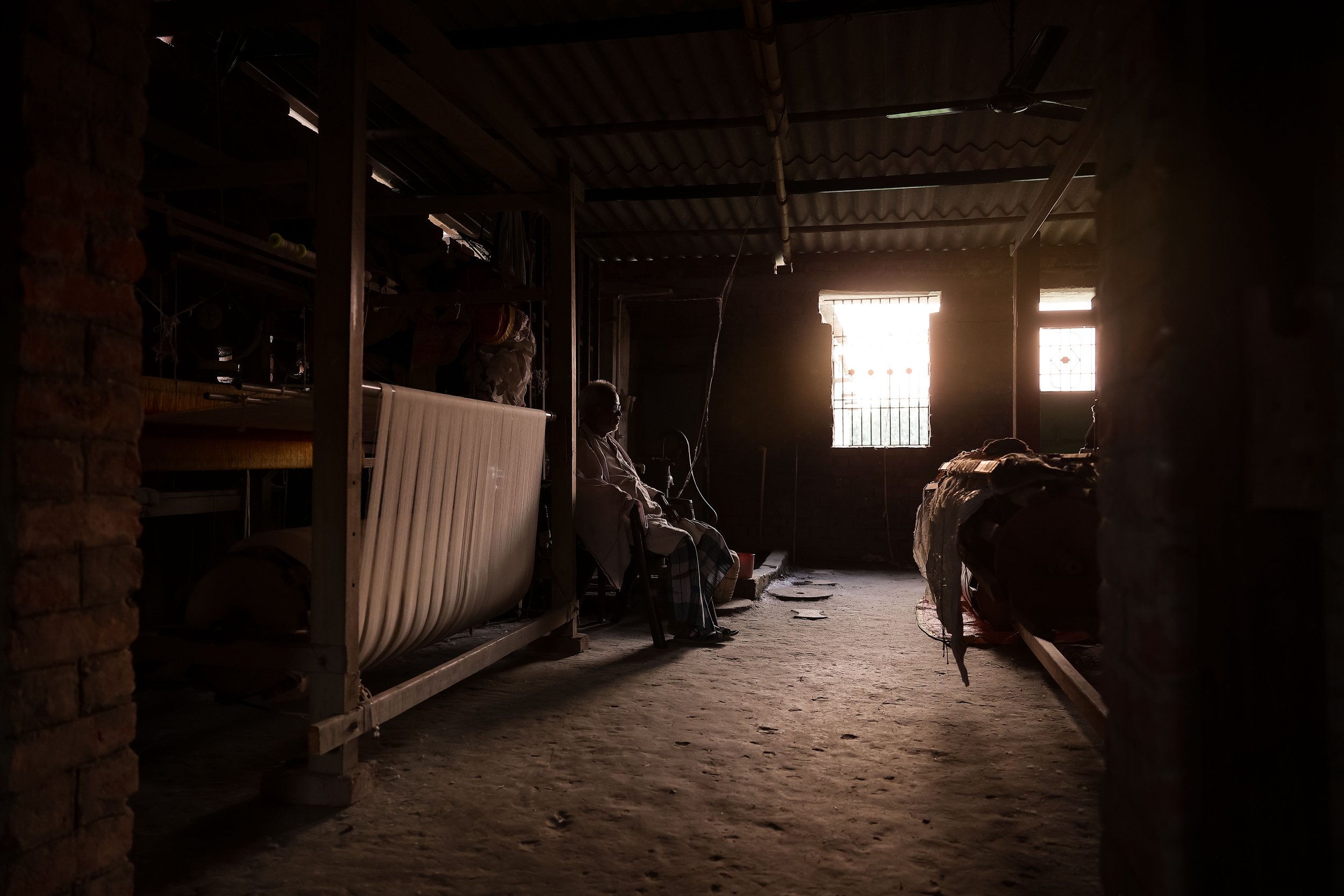
THE FABRIC OF DUSK
The Fabric of Dusk || 841286
- Madhav Mathur
The story of weaving is always set to the symphonies of the warp and weft. It reflects the play of dynamics inside the household and outside it, like a conduit of shared histories and emotions passed down generations. The romance of the handmade continues in the evocative sights and sounds of the loom—but in the village of Jamalhata, less than 15 kms from the city of Siwan in Bihar, the reality is rooted in uncertainty.
As my lens focuses on Riyaz Ahmed, the poignant face of a man lights up my frame—a face, aged more by the pressures of holding on to a dying tradition, rather than the sixty-something years on him. From 4 am till the sun sets, Ahmed invokes generational strength to bring his wooden loom to life in order to create simple cotton weaves and earn a few hundred rupees daily, divided among every cog of the cloth-making wheel. Men like Ahmed, weathered by time and toil, stand as a testament to a fading era and are perhaps the last guardians of a legacy that the younger generation is hesitant to continue. Despite efforts by organisations such as Parivartan and Srijani to breathe life into the dying art of handloom weaving in the village, the promise of revival remains elusive. Commissioned to create saris, school uniforms, towels and hospital linens, these men find themselves caught in a cycle of diminishing returns.
The allure of modern age—one defined by technological advancement, the interconnectedness of social media and a life remarkably different from the slow breath of Jamalhata, draws the younger generation away from traditional skills and into the embrace of more lucrative careers. Like Rizwan, on the threshold of his 20s, who has taken up the job of a driver to find a way out of meagre earnings, and consequently, out of his ancestral village.
However, this is not a story of loss, but of uncertainties and apprehension. Of looms, that continue with their meditative melody, even as the disquiet of what the next decade will hold weighs heavily on the minds of the community. For now, the weavers take solace in the idea of an immediate tomorrow. As a chapter turns and the day breaks again, the rousing of the loom and the sight of women—not always comfortable being photographed—contemplatively winding the yarn on charkhas, reinstates the daily symmetry of the village. And, as the evening transcends into the clatter of kitchens inside humble homes, interspersed with tea breaks with men gathered in chequered dhotis, it’s a quick reminder of the resilience of life itself.
Even as the future of Jamalhata’s weaving families hangs by a thread, the tensile texture of the craft and its creators exemplifies hope—hidden between the shadows cast on the shuttles of the loom, and the mythical strength in the hands that grants them life.
